Fixing Physics with Fields [& Energy]
Transcript of my RTF Lecture
The Riding Tide Foundation was kind enough to host me on Sunday October 5 for a lecture, Fixing Physics with Fields [& Energy]. You can watch the video over on their Substack.
This post shares a lightly edited transcript with the usual caveat about verbal quirks, transcription errors, and the like. I’ve interspersed the slides to make it easier to follow.
Transcript:
Welcome, everyone, to another RTF Sunday lecture. So I’m David Gosselin here, standing in for Matt, who is traveling in Deutschland. Did a little trip in Prague as well. We wish them well. Hopefully they’re having a nice time here. It’s a beautiful October day here in Montreal. Hope the weather is nice over there in Alabama.
So here today, we have Hans Schantz, who is CTO of the Q-Track Corporation, a company he co-founded to commercialize his work on innovative low-frequency wireless indoor tracking systems. As a small business owner, successful inventor, and scientist, he reduces theory to practice.
He figures out and shows how things work, and he applies science to solve real-world problems. His Substack, Fields & Energy, can be accessed at aetherczar.substack.com.
So Hans, thank you for joining us. I’m going to give you the stage, so take it away.
Overview
Sure. Well, thank you. I appreciate the opportunity to speak with you this afternoon. I have a pretty lengthy presentation, but we should be able to get through it in fairly prompt order. I’m going to begin by talking about... a little bit of history and background on the origins of electromagnetic science.
I’ll talk about some of the different models we have for how electricity and magnetism work. I’ll discuss what went wrong in science going into the modern physics era. And I’ll talk finally about how fields and energy have the potential to fix some of the problems with our understanding of physics. Let me begin with history.
History
I wanted to begin by quoting one of my favorite historians of science, William Whewell, who said that studying history not only reminds us of what we have, but can teach us how to improve and increase our store of science.
I’ll start with a very longstanding problem in physics, the question of action at a distance versus looking at electromagnetism from a field perspective. I’ll run through the background of Newton, Coulomb, and Ampere, how Faraday developed fields, the identification of energy and conservation of energy as a critical parameter. And I’ll talk about Maxwell, his equations, what they mean for the concept of an aether, and his successors who really brought Maxwell’s theory to fruition, particularly Oliver Heaviside and Heinrich Hertz.
Newton
To begin with, let’s take a look at Isaac Newton. Now, Newton was clear that he had a mathematical theory for universal gravitation, but he had no idea how it worked. That was a point of controversy between Newton and some of his contemporaries, particularly Leibniz.
Newton didn’t know how it worked. All he knew was he had a mathematical formula that would tend to explain it. But his successors eventually developed an interpretation of Newtonian physics, interpreting it in an action-to-distance format. The concept was of point charges interacting or point objects interacting at a distance through mathematical force laws.
That was brought to fruition by a Jesuit physicist named Roger Boscovich. who interpreted Newton’s physics strictly in terms of everything being point particles interacting at a distance through force laws. Maxwell commented that that was basically the culmination of the Newtonian paradigm was this view put forward by Boscovich. It was very influential in its time.
Coulomb
Now, as people began making mathematical investigations of electricity and how it worked, they discovered that it could fit into a Newtonian template. Coulomb made some very precise measurements of the inverse square law and using a torsion pendulum and a variety of other very sensitive measurements.
And he discovered that the electric force law looked a lot like the Newtonian law for universal gravitation. So that brought that Newtonian concept into electricity and magnetism.
His successor, Ampere, similarly did experiments measuring current segments, little tiny infinitesimal lengths of current, and working out what their forces of attraction and repulsion were.
He demonstrated that parallel currents attract and anti-parallel currents repel. And again, the force is proportional to the inverse distance squared. Maxwell had high praise for Ampere, calling him the Newton of electricity. Now, the concept of a field had been around for some time.
Faraday & Fields
One of the earliest depictions of a field was from Niccolo Cabello back in the 17th century, who noted that you had both attraction and repulsion, electric effects. And he drew this picture that I’ve shared, trying to depict this magnetic influence from around a lodestone.
Maxwell observed that the laws of action and reaction and the forces involved in electromagnetic physics were developed by people through an action at a distance kind of perspective. But the person who really changed that and got back to this concept of fields was Michael Faraday.
Faraday was a meticulous and thorough experimenter. For instance, he developed a technique where he would take a sheet of wax paper, heat it up, sprinkle it with iron filings, He would place it on a magnet or on some other electrical system or magnetic system that he wanted to study. And then he would allow the wax to cool and lock in the pattern of the iron filings. And that’s how we have all these wonderful diagrams that Faraday generated of the field patterns for different magnets. Now, this is the field pattern, one of Faraday’s analyses of a bar magnet.
You can take a look at what he did for a current. This is a current coming up out of the paper. If you’ve studied electricity and magnetism, you know the magnetic field, which I’m denoting H here, circles around that current in the same orientation as the fingers of your right hand will curve around your thumb.
This is what that looks like in a cross-sectional perspective where you’ve got one current going down and one going up to make a loop. And Faraday not only studied some of these basic configurations, he made some original discoveries.
For instance, he investigated the physics of what’s called paramagnetism and diamagnetism. A paramagnetic object tends to attract magnetic fields. A diamagnetic object tends to repel them. And Faraday captured that behavior in his diagrams.
Now, something that’s not very well known about Faraday, unfortunately, and I’ve only ever seen reported in one textbook, is is that in 1832, this is very early in his career, Faraday already had the conception that electric and magnetic influences were wave-like and would propagate in a finite amount of time. He described them as being like the ripples in a pond as a magnetic influence propagates out. And he speculated that electric influences probably behaved similarly.
Faraday recorded all of these notions in a letter in 1832 that he gave to the secretary of the Royal Society in London. Faraday later went on to share some of these ideas in a paper a dozen years later, his 1844 paper on thoughts on ray vibration.
But this 1832 letter lay forgotten in the strong box of the Royal Society until 1937 when Sir William Bragg opened it and the letter was read for the first time. Maxwell had a wonderful comparison between Ampere and Faraday.
Maxwell commented that you read Ampere and everything is laid out very logically in a very systematic order with all trace of the scaffolding removed so that you get to see, when you read Ampere, electrical science from its fundamentals through to its applications in a very precise and logical order that make you marvel at how we ever figured it out. Faraday is on the opposite extreme.
You read Faraday and he takes you through all the details of his experiments, how he figured things out, and it gives you more of a sense for what it’s like to stumble about trying this and that and finally latching on to some very, very clever ideas.
Helmholtz, Kelvin, & Conservation of Energy
Now, about the time Faraday was active, a young German scientist named Helmholtz came up with the notion of energy and that it’s conserved. Now, he was focusing primarily on thermodynamics. It had been noticed that if you do work, like if you are boring out a cannon, you keep putting work into the cannon, the hotter it gets because of that friction.
So Helmholtz is the one who realized that the total amount of energy was conserved, that the work you put into the cannon is precisely the same as the heat energy that it acquires as it warms up. But he also took a look at how electricity behaves.
He wrote this paper that was called On the Conservation of Force that talked about energy conservation that was considered too speculative at the time to be conserved. printed in the leading German physics journal, the Annalen der Physik. So Helmholtz had to self-publish his paper as a pamphlet. One of the results was an analysis of electric energy.
And what Helmholtz argued was, is that the electric energy density was effectively the product of the charge density and the potential. So the energy in Helmholtz’s mathematical model appeared to be located with the charges. Now, a few years later, William Thomson, who later became Lord Kelvin, came up with an alternate view of how electrical energy is stored.
In Thomson’s view, it’s stored with the fields. So the energy is proportional to the field intensity squared. It’s fascinating that these two different mathematical approaches with completely different physical interpretations can be shown to be mathematically equivalent. The one is equivalent to the other, but they have profoundly different physical interpretations.
The Helmholtz interpretation says energy is associated with charges and makes it very difficult to have any mechanism for how energy gets from one place to another place. In Kelvin or Thomson’s view, energy is associated with fields. It fills the space in between the charges and currents of our electric system.
And that makes it kind of easier to imagine how the energy might be able to get from place to place.
Maxwell and His Equations
Well, that was one of the key ideas that Maxwell latched onto as he developed his equations. Maxwell’s actual equations were a pretty complicated set of 20 different expressions that you can see there to the left.
What we now today call Maxwell’s equations, the nice, beautiful, streamlined four-vector equations, those were actually due to Heaviside. For a time, they were called the Heaviside-Maxwell equations, but over time, people... started ignoring and forgetting about Heavisideand have just started referring to them as the Maxwell equations. And Heaviside was able to do that because he developed, he was one of the pioneers of vector theory, which allowed expressing the vector field math associated with electricity and magnetism in this very, very compact fashion.
But the upshot of Maxwell’s work integrating all of these equations from his predecessors, people like Faraday and Ampere and Gauss, the upshot was that Maxwell’s theory predicted that you could have an electric wave and a magnetic wave working together to give rise to an electromagnetic wave propagating through space. And this is a depiction of how that would look, kind of breaking down the two components, the electric and magnetic waves. They operate at right angles to each other.
And when they’re combined, you get an electromagnetic wave, which now we know is associated with how light works, how radio waves work, and so forth. Now, Maxwell’s view on all this, as he was developing his theory, he developed a bunch of rather elaborate models for how the energy and the tensions and the forces were stored in space.
Things including imagining a different cog... wheels and gears in space that are spinning or turning. One model for a field line imagines that a field line is a physical object that, when spun, exerts a tension along the line and a pressure along the edge of the line. So these mathematical models helped that developed the theory of electromagnetism.
But Maxwell was very clear that all such phrases were illustrative and not explanatory. He didn’t think there were real gears in the ether or real rubberized tube field lines that were spinning and exerting pressures and tensions.
But at the same time, he did want to make clear that when he talked about energy being stored in the fields in space, he did mean that literally. So like Newton, he didn’t have a physical mechanism or model to explain how that happened, but he believed that his theory showed that energy resides in the electromagnetic field in the space surrounding electromagnetic bodies as well as in those bodies themselves.
What of Æther?
And that’s caused a great deal of controversy over the years. That concept has been dubbed the aether theory, the idea that there is this medium called the aether that stores and moves energy and is responsible for the behavior of electromagnetic physics. One of my favorite historians of science, Edmund Whitaker, who wrote A History of Theories of Ether and Electricity; he wrote this book originally, I think, around 1910, and then did a second edition in the 1950s, just before his death. And he commented that it had become customary to refer to empty space as a vacuum or as vacuous. But that empty space had a lot of properties.
We already knew from electromagnetic physics that this supposedly empty space has the properties of electric permittivity and magnetic permeability. It is characterized by an impedance. As quantum mechanics... it became known that there was a certain zero point energy associated with this supposedly empty space. So for something that is empty and is a nothingness, there’s an awful lot of something going on there. And I think the ancient wisdom of Parmenides, “out of nothing, nothing comes,” applies here. That if there’s something going on, that strongly suggests there’s something there to make that something go on. But let’s continue forward from Maxwell and talk about how his theory got brought to fruition.
The Victorian Internet
Now, the mid 19th century was an exciting time in electric and magnetic physics. It was the leading edge science of the day. And one of the leading applications was telegraphy. There’s a wonderful book by Tom Standage, The Victorian Internet, that lays out a it’s kind of a cultural history of of telegraphy that draws parallels between the telegraphy of the 19th century and our modern day internet culture in terms of having people interacting online at a distance through, in the 19th century case, this medium of the telegraph. Now, in 1858, the first telegraph cable was laid across the Atlantic. And it worked very, very poorly.
The signals would get smeared or muddied as they went across the cable. It would take hours to transmit even a very short message because the rate of transmission was very slow. Chief engineer of the project was a doctor who was really not very well informed about electromagnetic science. He got very frustrated with it, and he decided he was going to fix the cable by shoving several kilovolts down the cable. Well, inevitably, that shorted out the cable and destroyed it. The entrepreneur behind the cable, Cyrus Field, in true entrepreneurial fashion, recouped some of his losses by taking pieces of the cable and selling them to the Tiffany company, which marketed them as samples. There’s a picture of one of the samples of the first transatlantic telegraph cable there. Well, ultimately, the first successful cable was laid just after the Civil War in 1866. But even once the basic physics was laid out according to a theory developed by Kelvin, there were still all kinds of curious oddities.
You would see signals propagating faster going one way on a cable. cable and slower going in the opposite direction. You would see different frequency signals propagated at different speeds. That was the fundamental problem that hobbled the very first transatlantic telegraph cable. That kind of distortion made it very difficult to do telegraphy and rendered the emerging science of telephony unusable beyond very, very short distances.
Oliver Heaviside
Well, there was one person responsible for solving all those problems. And that person was an unemployed 25-year-old telegraph operator named Oliver Heaviside. He developed what was called the telegrapher’s equation. And the fundamental physical relationship behind that Heaviside identified that you needed a balance of electric and magnetic energy in order to have waves move in a distortionless fashion down a telegraph line.
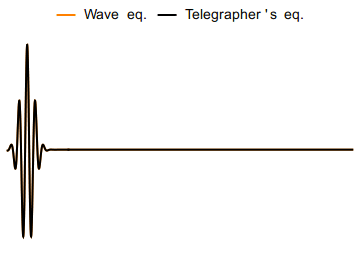
Most of the cables tended to be very capacitive. They stored more electric energy than magnetic energy. And Heaviside’s prescription was to put inductive loading coils in order to create enough magnetic energy on the cable to balance out that electric energy. And that formula worked wonders, enabling long distance telegraphy with very good performance. Heaviside tried to publish his theory working with his older brother, Arthur, who was himself a very talented telegraph operator and engineer. But Arthur’s boss, William Henry Preece, who was the chief engineer of the government post office, the GPO in Britain, he championed a rival incorrect theory and... basically quashed Arthur’s attempt to publish. So Heaviside went around him, finally published his theories in a trade journal, The Electrician. And Oliver Heaviside’s work is some of the most amazing stuff to read in all of science.
He’s brilliant, sarcastic. His papers were just dripping with sarcasm for Preece, and Preece’s backwards ideas on telegraphy. So ultimately, Heaviside was vindicated. In 1899, an American researcher of Serbian descent, Michael Pupin, patented that concept of inductive loading, including ideas that were originally due to Heaviside, sold the rights to AT&T for a half million dollars, and AT&T went to see if they could buy off Heaviside just to make sure they didn’t have any issues with him challenging their patent. He refused without receiving full credit, and as a result, he never got any of the money for his very remarkable, very successful invention. Heaviside was very reclusive. In his later years, he would stay in a house with the heat cranked up to very, very high levels, wearing a kimono, painting his fingernails, using rocks and tree stumps as his furniture, lived a very eccentric lifestyle, but a very brilliant man who did a lot of great work on electromagnetism.
Now, interestingly enough, for a conspiratorial hook, one of the key founding fathers of cybernetics, a mathematician named Norbert Wiener, wrote a thinly veiled novelization of Puppin’s theft of Heveside’s ideas in a novel called The Tempter.
So that instance is well known in technocratic circles. Heaviside didn’t just work on the telegrapher’s equation.
He had a whole range of interesting research, interesting developments he had a hand in. A contemporary of his, John Henry Poynting, came up with the idea of the Poynting vector to describe electromagnetic energy flow, how it gets from place to place. Poynting’s own description is in that turgid prose on the slide about talking about the product of intensities, multiplying them by the sine, having it in the orientation of a right-handed screw moved if turned round from the positive direction, etc., etc. Very, very complex. You’d have to sit down and really parse that through to understand it.
Thanks to Heaviside’s vector notation, Heaviside, who co-discovered this at more or less the same time, was able to condense that entire complex paragraph into five symbols. The Poynting vector S is equal to the vector cross product of the electric field E and the magnetic field H. That basically means that for energy to flow, you have to have an electric and a magnetic field at right angles to each other.
And then the amount of energy flowing, the power per area, depends on that vector cross product and the intensities of the two fields. And you can use a right-hand rule to keep track of the orientation that’s involved there. Now, this opened up the prospect of being able to track energy, see how energy moves from place to place, and identify the cause and effect relationships that are behind electricity and magnetism.
So Heaviside was very clear that he believed that when energy goes from place to place, it has to transverse the intermediate space. So unlike some formulations of action, a distance where energy disappears somewhere and reappears somewhere else, Heaviside believed in the concept of continuity, that the energy had to leave its point of origin, had to be conveyed across space to wherever its destination was. And that was a sentiment that John Henry Pointing echoed as well. And that idea was in line with what Maxwell had to say previously. He argued that there had to be some kind of medium, some substance, some process to hold and convey the energy from place to place.
And Maxwell urged his followers and successors to focus their attentions on how this worked and what was going on. That was effectively what Heaviside and Poynting were doing as they brought Maxwell’s vision of electricity and magnetism to fruition.
Now, we’ve talked a little bit about the history of electricity and magnetism. I always thought it was fascinating, this quote from Napoleon, that history is a set of lies agreed upon. Particularly because when I looked into it, it turns out Napoleon probably never really said that at all.
And that is exactly one of those lies that everyone agrees upon. But as we look at history, we have to pay attention to what’s going on, what are the motives and the motivations behind what the narratives or the stories people share about history. And we’ll see how that comes more into focus as we look at modern physics.
Models
What I want to do first is talk a little bit about some of the models of electricity and magnetism that that emerged in some of these early speculations on electricity and magnetism and how it works. Now, a word or two about models, though, there are any number of different models of electricity.
And I’ll go through these in sequence, a fluid model, action, a distance. I’ll talk a little bit about Hertz and fields and energy and some other models. But models themselves are… I think a lot of people get wrapped up trying to figure out the one best model that describes everything and want to latch on to that one model to the exclusion of others. So I thought it was a good idea to step back and consider models from a little broader perspective. For instance, Warren Buffett’s investment partner, Charlie Munger, once said that, asking what models are, pointing out that if you just have one or two models, the nature of human psychology is such that you try to torture reality to fit your models. So it’s a good thing in Munger’s view to have multiple models and to try to figure out which model you can best apply for a given situation.
In the context of military operations, John Boyd came up with the concept of what he called an OODA loop. That’s an acronym short for Observe, Orient, Decide, and Act. He summarized this as the steps of a decision process. that in his context, a fighter pilot has to take during a dogfight. And his point is, you have to be able to run through this process and make your decisions and decide your actions faster than your opponent in order to succeed. And the way you interpret your observations in order to orient yourself is through doctrines or models. And he pointed out, if you’ve only got one doctrine, you’re a dinosaur. Period. So here again, having multiple models to try to apply to understand what’s going on are a good thing.
So I want to emphasize that so that as we’re talking about models of electricity and magnetism, I’m not advocating one model to the exclusion of all others.
A lot of these models have their places and I’ll talk about where they come in handy. The fluid model of electricity, for instance, this is something if you study basic electronics, you’re probably going to see. In this model, we treat wires as being a little bit like pipes, and electricity as being a little bit like a fluid that flows through the pipe. So an electrical current is like electric fluid throwing through the pipe that’s made by the wire. And when it gets to a resistor, it does some work. Well, that’s just kind of like a turbine taking the flow of that electrical fluid and turning it into work and dissipating it as heat. That fluid flow model works very well for understanding electric current, but it starts to break down as you consider the many ways in which electricity in general and electric circuits in particular interact at a distance.
For instance, if you take a look at the losses in a wire, you discover something called the skin effect. The outside of a wire heats up before the inside of the wire does. And in fact, there’s a whole branch of electrical engineering that looks at how to design wires in multiple strands to try to minimize those skin effect things from happening. That’s called Litz wire. I’ve got some examples here, the blue, gold, and red wires on the slide. Well, electricity also works across a distance. And as early as the 1830s, Faraday and particularly Joseph Henry were experimenting with how you could take a coil of wire, have a current in one coil, and have it picked up by a sensitive instrument in another coil.
The two big loops that you see there are an example of a wireless inductive telegraph that Joseph Henry experimented with. Henry also was able to send electricity at a distance.
He set up a capacitive plate on the second floor of his house and went down in the basement and was able to demonstrate electricity. being able to manipulate the plate in the basement and cause effects on the plate in the second floor. So Joseph Henry was able to demonstrate that electricity and magnetism clearly operate at a distance.
Well, that prompted a number of investigators to look at action at distance models of electricity and magnetism. One of the key players there was Wilhelm Weber and Gustav Robert Kirchhoff also did some work in this area. And the basic idea behind their approach was to write a force law between charges, basically to take Coulomb’s law and generalize it to not just static charges, but to charges in motion, charges moving with a particular velocity or acceleration. Now, that has the advantage of simplicity. It can be made mathematically equivalent to fields.
And in fact, there is a version of this action at a distance approach that was laid out by a professor. physicist named Oleg Jeffimenko more recently, where he noted that Maxwell’s equations can be rewritten to give you a standalone equation for the electric field and a standalone equation for the magnetic field.
And then those can go into something called the Lorentz force law, and you could get a force law equivalent that’s completely consistent with Maxwell’s equations. So that approach has the advantage of letting you look, for instance, at action reaction forces or to understand the motion of charged particles in a plasma. It works very well for doing that.
Interestingly, there’s a disconnect and the Weber version of action of distance doesn’t align with the Maxwell version. And there are a number of people busy investigating that. In fact, I understand Andre Assis is going to be on next week.
And that’s an area, he’s done a lot of very interesting work looking at. Now, from my perspective, as an antenna engineer, I’m not looking at the motions of charges and the forces between them. I’m looking explicitly at the energy flow and the power that is radiated by one system and picked up somewhere else. The action-at-a-distance approach has trouble modeling that.
It doesn’t lend itself well to the process or mechanism connecting these charges. There’s the issue of propagation speed in action at a distance. Normally, that’s just taken to be the speed of light. And it can be very difficult to model energy transfer or antennas. From an antenna perspective, we’re looking specifically at, say, a transmit system where we’re picking off a little tiny piece of the energy or the power that it’s radiating in a way that does not affect the transmitter. So we don’t have to worry about action, reaction, or what the effect of our reception might have on the transmitter. That is something that is taken account of in this action to distance approach.
So if we look at the fields approach, We can understand how an electric circuit works by taking a look at the fields around it and understand that the wires don’t carry the energy. They merely bound the currents and they sculpt the fields, the electric and magnetic field working at right angles to transmit the energy from the battery across the circuit to the receiver. Now, this can be shown to be mathematically equivalent to Ohm’s law, and it’s a bit counterintuitive and more complex, but this approach then can be applied to a wide range of much more complicated problems, including antenna theory, that really can’t be modeled at all by the fluid theory or modeled very easily by the action-to-distance approach. So the fields and energy approach, for instance, if we have two wires with equal and opposite currents, we get the blue magnetic loops around them. We have the red electric field lines.
They’re at right angles to each other. And they’re guiding the energy flow along those two wires. And it takes some time and some practice to get familiar with the field notations. Once you develop an intuition for it, it’s very easy to see what’s going on in even a very complicated system like this.
Hertz
Well, it was about the time people were arguing about the fluid theory of electricity and whether Poynting and Heaviside were right about their theory for how energy flows that a German researcher named Heinrich Hertz did some just remarkable work to demonstrate the existence of electromagnetic waves.
He was a very talented experimenter. He set up transmitters and receivers set up standing waves inside his lecture hall and used a loop antenna as his sensor. He would go around in the dark looking at the glow that he would pick up in the terminals of his loop antenna, identify where the nodes or antinodes were, use that as a measurement of wavelength.
And because he had an idea of the frequency, he was actually able to measure the speed of light just using that process of looking at the glow on his terminal for his loop antenna in a dark lecture hall. Really a brilliant use of some very sketchy equipment to get a lot of good science out of it.
But Hertz was more than just an experimentalist who was able to detect and measure and determine the properties of electromagnetic waves. Hertz also was a theoretician and studied the field patterns and described how dipoles work. A dipole is the simplest radiating system. It’s equal and opposite charges or equivalently a small current loop.
And as it oscillates, it creates patterns of electric and magnetic fields that decouple, that radiate away and give rise to this electromagnetic radiation.
Model of Fields & Energy
So in my view, you can really look at electricity and magnetism from three different perspectives. You have charges and currents that give rise to fields, and the fields, electric and magnetic fields, that exert forces upon the charges and currents and tell them how to move. Those electric and magnetic fields also serve to guide energy from place to place, and the energy localizes itself with the field.
And finally, energy does work on the charges and currents, sets them into motion or slows them down and absorbs the energy into the field. It enables charges and currents to store potential and kinetic energy. And the relationship that energy is equal to mass times the speed of light squared suggests that there is at least in part an electromagnetic nature to mass itself.
That matter is, in a sense, crystallized or solidified energy.
Soon after Hertz did his work, a gentleman named William Crookes, who Matt has spoken a lot about for his occult and more esoteric connections, Crookes was also a very good experimentalist who invented what was called the Crookes tube. We now call this a cathode ray tube.
The idea was to create an electrode that would emit a beam of what we now know are electrons. J.J. Thomson took that concept and was able to deflect the beam of a cathode ray tube with a magnet, work out the charge to mass ratio, and develop some of the first measurements on electrons and identify that electricity was quantized into these little particles that he dubbed electrons. Thomson also took some ideas originally due to Heinrich Hertz and developed a simple model for understanding radiation fields and how they work. In his model, he assumed you have a point charge with fields radiating in any direction.
So the point charge is originally at O prime in that figure next to J.J. Thomson. If we move the charge to 0.0, that influence propagates out at the speed of light. And at the point where we have that transition between the old field line, Q prime, and the new field line, Q, there’s going to be a transverse component of the field, a kinked field line. And Thomson identified that as the radiation component of the field. And that’s a model that is used to this day to help people understand how electricity and magnetism work. Richard Feynman took an approach to calculating the electric field for a moving charge that turned out to be a rediscovery of something that Heaviside had also done. And that’s one of the formulas that’s taken today to understand the radiation from moving charges. Now, there’s a problem with both JJ Thomson’s kinked field line model and the approach that Feynman and others have taken to understand the radiation from a point charge.
Both of these approaches assume that the radiation is due to a single charge moving in a particular fashion. But radiation is actually has to be a closed field line. The kinked field line model doesn’t replicate that very well. And you have to have you really have to have two charges interacting with each other in order to correctly model radiation.
It’s interesting to consider the Zen koan. That’s an idea that you’re supposed to meditate on in order to obtain enlightenment. One of the most famous of them is the idea that you should try to listen to the sound of the single hand. Now, what is the sound of one hand clapping?
Well... That’s the error of reductionism. You’ve broken the problem down so far that you’ve destroyed the nature of what gives rise to applause. You have to have two hands in order to have applause. Well, it turns out the radiation of one charge accelerating makes no more sense than the sound of one hand clapping, specifically because you have to have two charges in order to have radiation. If you try to look at a single charge radiating, you have all kinds of problems. The foremost problem is a problem called radiation reaction, where you give rise to a runaway acceleration and radiation of the charge.
So I want to conclude talking about models by just discussing this fields and energy model, which is the one that I’ve developed that I really like. The idea is if you have an individual isolated field, it guides energy, and there’s really not a lot of distinction between them.
So you see in quadrants one and three, you’ve got a wave that’s guiding the flow of energy and they’re moving together, the fields and the energy. But when you have two waves interfering, like in the fourth quadrant, the energy flows based on the superposition of those two fields and takes a path being buffeted back and forth by one field or the other. And that’s really the basic idea behind the fields and energy approach.
Where Physics Went Wrong
Well, now let’s talk about what went wrong in modern physics and identify some of the factors that are involved in that.
The Conventional Wisdom
Now, the conventional wisdom that you’ll hear is that physicists started with a kind of classical Newtonian certainty.
And that’s encapsulated by something Laplace identified. Laplace’s idea was, if you happen to have an intelligence that knew where all the particles in the universe were and what all their velocities were and what all the forces and accelerations on them were, well, you’d have omniscience.
You’d have a completely deterministic model for how reality would unfold from there.
And then in the conventional wisdom, the discoveries of atomic physics led to the recognition of quantum uncertainty and the concept that you cannot possibly calculate the future knowing the present, that in a deep and metaphysical sense, reality is unknowable, a reality is statistical in nature.
So that is the conventional wisdom.
How Physics REALLY Went Wrong
But now let’s go back and review exactly what happened and identify where things got off track and how people came to that opinion. Well, you have to go back to Michelson and Morley, who did a very famous experiment with an interferometer trying to detect the motion of the Earth through the ether.
The Development of Relativity
Their theory was they would see fringe shifts as light moved at a different speed in their interferometer going one direction relative to the other. They didn’t see anything within the... the context of the experimental error. And that led a lot of people to wonder what was going on. Heaviside had predicted a moving electrified sphere would contract along the axis of motion.
Fitzgerald took that concept and speculated that Michelson Morley’s interferometer was contracting in the direction of motion. Another physicist named Larmor predicted that there would have to be a time dilation associated with moving at high velocities close to the speed of light. And Lorentz developed coordinate transformations to mathematically describe this very precisely.
In 1904, Poincaré coined the term the principle of relativity to describe this, and he predicted we’d have to have a new mechanics in which the speed of light cannot be exceeded. So all this work was done in a bottom-up kind of way, drawing upon the discoveries of electromagnetism and trying to work out what the electrodynamics of moving bodies would look like.
Einstein & Positivism
Well, an obscure Swiss patent clerk named Albert Einstein realized and published a paper in 1905 that all of those principles of the electrodynamics of moving bodies could be explained if we look at things from the perspective of an observer. rom the perspective of an observer seeing the speed of light is always constant and the observer seeing that the laws of nature are the same in all inertial reference frames.
Einstein was guided in that observer-centric approach to understanding electrodynamics of moving bodies by Ernst Mach. Mach had argued that the world didn’t consist of things. It consisted of sensations, of measurements, of observations. He taught that you should put those observations first. In Mach’s view, there’s no such thing as an atom. An atom is simply a mental construct that we use to organize certain of the observations we make when we’re doing chemistry or working on other branches of physics. That perspective was, it gave rise to logical positivism and to the whole operationalist or instrumentalist approach to physics.
Now, as Einstein, a decade later, developed the electrodynamics of accelerating bodies, a theory called general relativity, he identified an equation that described the curvature of space and time as a function of the local energy density.
John Wheeler argued that what general relativity says is that space time tells matter how to move and matter tells space time how to curve. Well, Einstein looked at that approach and looked at this curvature of space time and realized that smacked of ascribing properties to space.
In fact, in 1920, he gave a talk at University of Leiden in the Netherlands, which was Lorenz’s home school. And Lorenz had always been a big aficionado of the ether theory. And in that talk in 1920, Einstein acknowledged that His interpretation of general relativity with this curvature of space was in a sense like an ether ascribing the property of curvature to the intervening space. So Einstein was moving away from strictly that observationalist positivistic approach to physics.
Well, having come up with the theory of relativity with this observable approach to how electrodynamics work, when Heisenberg came and delivered his first lecture on quantum mechanics in Berlin, Einstein invited Heisenberg back to his apartment to talk about Heisenberg’s work. Now, special relativity had shown no models, no mechanisms were needed. You didn’t need to have an aether. We just looked at what the observers saw. And Heisenberg took that to heart. So when Einstein asked Heisenberg about his theory and asked, well, where are the electron trajectories in your quantum mechanical theory of physics…
…Heisenberg proudly declared his theory had no electron trajectories, that his theory focused only on what the observers saw before and after, and that any speculation on what was taking place, any process, any mechanism, any specific trajectory for electrons, that was out of bounds. That wasn’t part of his theory.
And when Einstein objected to that and said that didn’t make sense, Heisenberg basically quoted Einstein back at Einstein, pointing out that that was exactly the implication of special relativity, focusing on the observations and excluding any idle speculations about what’s happening in between from your physical model. According to Heisenberg, Einstein was a bit taken aback by that and finally said, perhaps I did use such a philosophy earlier and also wrote it, but it is nonsense all the same.
And that was really the breaking point for Einstein from the mainstream of physics. But Heisenberg was not the only one with ideas like this.
You can look at Heisenberg’s contemporaries and some of the famous physicists of the Weimar era, and you’ll see people like Wilhelm Wien saying causality has nothing to do with physics. Or Schottky saying that acts of emission and absorption are without direct cause and without direct effect, and are in fact outside the relation of cause and effect.
And you have Walter Nernst saying that causality as an absolutely rigorous law of nature laces the spirit in Spanish boots. And that it is the obligation of research to loosen those fetters so that the free stride of philosophical thought is no longer hindered.
Now, I ran across that quote from Nernst back when I was in grad school, and I thought that was an awful over-the-top kind of way to express it. These instruments of the Spanish Inquisition crushing the feet for torture?
Naturphilosophie
But then I discovered where that came from and where Nernst’s colorful comment comes from. It’s a German philosophy called Naturphilosophy, which was a romantic idealist movement of the early 19th century.
The Naturphilosophy school sought to have, it’s basically a reaction against the purely mechanistic version that was popularized of Newtonian physics. It emphasized mind, nature, unity, and combining philosophical speculation with scientific observation. And one of the prominent influencers in that school was Goethe, who is in some circles regarded as being the German Shakespeare.
One of Goethe’s most famous plays is Faust. And in Faust, Mephistopheles is counseling Faust. And at one point, counsels Faust to take a course of logic. And by so doing, you’ll brace your mind in Spanish boots so tightly laced that henceforth by discretion taught will creep along the path of thought.
So a lot of Germans were taking Goethe’s Faust to heart and taking this council by Mephistopheles as a guidance on what not to do, and were committed to unlacing the Spanish boots and entertaining more speculative ideas like the idea that causality and the law of cause and effect might not be valid.
Interestingly enough, while Faust also contributed in this way to the development of what became known as the Copenhagen interpretation of quantum mechanics and our current observation-based approach to understanding physics… Faust also had great influence on politics indirectly, because it turns out that there was another person who really liked the play Faust, and that person was Karl Marx, who latched on to the quotation from Mephistopheles, “everything that exists deserves to perish.”
And that was Marx’s favorite quotation from Faust. And apparently he quoted it quite frequently in conversations with friends. So we can trace both communism and quantum mechanics back in this small way to Faust’s Mephistopheles.
Well, let’s get back to the main line of the story here of what happened. It was very interesting for me to discover in the 1920s, as I was reading all of these biographies of physicists and what they did, all the American physicists all got a fellowship from the Rockefeller Foundation to go and study with Niels Bohr at the Copenhagen Institute in Denmark. And when I looked into it, it turned out the Rockefeller Foundation also founded the Copenhagen or also funded the Copenhagen Institute itself. They were one of the largest benefactors of it. So in a way, a lot of our modern interpretation of quantum mechanics owes itself, at least financially, to the funding provided by the Rockefeller Foundation.
Now, these issues really came to a head in 1927 at the Fifth Solvay Conference. That’s where Einstein famously said, and of course, these are paraphrases, he argued, “God does not play dice with the universe.” And Bohr supposedly told Einstein to “stop telling God what to do.”
That conflict largely overshadowed another emerging idea that came out from a French physicist named de Broglie. And he came up with the notion of pilot waves. Everyone was confused, for instance, by the double slit experiment. Quantum mechanics predicted that even if you had a single particle, it would go through one slit or the other.
And yet you would see this wave interference pattern. that suggested somehow it was going through both slits at the same time to generate this classical wave interference pattern while being a particle. De Broglie’s solution to that question of wave-particle duality was not wave OR particle, but rather wave AND particle. He argued that the waves went through both of the slits and set up the interference patterns. And those waves, in turn, served to guide the particle through one slit or the other. And on the slide, you can see an example of the kind of wave interference pattern and the particle trajectories that would be predicted by this pilot wave theory.
Well, that was largely rejected by the participants at the Solvay conference, particularly Bohr and Heisenberg, foremost among the critics.
In 1932, the famous mathematician John von Neumann had a proof arguing that this could not possibly be. That proof was actually disproven only a few years later by a mathematician and philosopher, Greta Hermann, but no one paid attention to her disproof until decades later.
In 1935, Einstein joined together with Podolsky and Rosen to write what became known as the EPR paper arguing that quantum mechanics was not complete. Ironically, that’s become one of the most significant and most quoted papers Einstein ever wrote.
But what really brought this to a head was in 1952, a physicist named David Bohm rediscovered pilot wave theory and started popularizing it. Unfortunately, Bohm was a communist sympathizer and ultimately fled to Brazil to avoid the consequences that might have come to him during the McCarthy era. But his contemporaries at Princeton, where he had been a professor, were very critical of his ideas.
One of those was the director of the Institute for Advanced Studies, J. Robert Oppenheimer, who’s, of course, better known as the director of the Manhattan Project. He reportedly assigned a graduate student to take Bohm’s paper and disprove it. And when the grad student came back and said, well, I can’t find anything wrong with it, Oppenheimer said, well, okay, I’ll disprove it. But then Oppenheimer couldn’t find anything wrong with it.
So Oppenheimer convened a seminar to get all the physicists he could gather together to sit down and go through Bohm’s paper and put a stake in its heart so they wouldn’t have to listen to Bohm’s heresy with respect to the Copenhagen interpretation. And according to one of the participants, you know, they argued all day. They got nowhere. And finally, Oppenheimer’s reaction was, he said, “well, if we can’t refute Bohm, we’re just going to have to agree to ignore him.”
And some of the stories you hear about what was going on and how casually and cavalierly physicists dismissed Bohm and the pilot wave approach to quantum mechanics, it can be hard to believe that scientists would actually behave in that way.
And I would have had trouble believing that also, except that I had an experience like that firsthand. Because when I was in graduate school, one of the professors on my doctoral committee was John Wheeler. And he was really a gentleman and a scholar, wonderful man who was very generous with his time and allowed me to come in and hector him and bother him with questions.
And one day I had just discovered the pilot wave theory. and marveled at how much sense it made compared to the Copenhagen interpretation that I’ve been taught in my classes.
So I went to Professor Wheeler and I asked him, well, what do you think of this pilot wave theory of quantum mechanics? And he said, ah, that’s “the screwdriver theory of physics.”
I wasn’t really sure exactly what he meant by that. I’d seen some criticisms that it was all putting arbitrary mechanistic scaffolding that obscured the beautiful deep meaning of the Copenhagen interpretation. And it was a crutch for reactionary physicists who could not grasp the wisdom of Copenhagen to try to satisfy their primal urge for comfortable causality, things like that.
So I asked Professor Wheeler, well, have you written something somewhere? Is there an article or one of your books like on quantum measurement theory where you’ve gone into what’s wrong with pilot waves so that I can take a look at that and understand why you’re rejecting it?
And Wheeler looked away a moment and then he looked back at me and he said, “I never really studied into that business and I really should, so I can see what’s wrong with it.”
And that was really the point where I realized that a lot of physicists, Wheeler included, and his contemporaries had just kind of arbitrarily dismissed alternative approaches to quantum mechanics. And I’m not the only person who’s noticed that.
The Nobel laureate particle physics physicist Murray Gell-Mann observed that “Niels Bohr brainwashed a whole generation of theorists into thinking the Copenhagen interpretation answered all the questions.”
So this is one strand of what went wrong in modern physics, this prevalence of the observer-first positivistic approach to physics to the exclusion of more deterministic approaches like pilot waves.
The Theory-Practice Divide
Another problem is what I call the theory-practice divide. In 1941, the most prominent book on electromagnetic theory was Stratton’s text. This is a 1941 text. It covered a lot of very good, very practical, applied electromagnetic topics.
The physicists at the Manhattan Project and the engineers at the MIT Radiation Rad Lab developing radar, they all used this book as their electromagnetic Bible. Fast forward to my generation of physicists. And I was taught out of this book by Jackson, which I understand is still the third edition now is the standard book that is being used in a lot of graduate schools.
But you can go through the table of contents and compare the topic coverage. And what you’ll discover is that if you look at the topics in Stratton and compare them to the applied electromagnetic topics in Jackson, a lot of those topics are not there. Jackson presents an atrophied and cut down list of the applied electromagnetic topics that were present in the textbook from 80 years ago.
So, and this was kind of a shocker for me when I realized it:
In a very real sense, today’s physicists are less well informed about practical applied electromagnetic applications than their predecessors of 80 years ago.
And that theory-practice divide, I think, has hurt modern physics in understanding and correctly interpreting electricity and magnetism and how it works.
The Curse of Natural Units
Another problem is modern theoretical physicists are very fond of what they call natural units. To simplify their bookkeeping, they just set all kinds of constants equal to one. The speed of light is equal to one. The gravitational constant is equal to one.
Planck’s constant is equal to 1, and so forth. Now, of course, that has the advantage of simplifying your equations and making it a little easier to see what’s going on, focusing on direct proportions and relationships. But of course, if you drop those constants, it gets very hard in order to calculate results.
You have to add the constants back in order to do anything real, to make a prediction of a particular measurement. And having the constants in is kind of like having a parity check bit in a packet of data. It allows you to have a way to double check that your calculation makes sense to see if the units line up correctly in your final result. If you’ve dropped all the constants out, you can no longer do that.
And more important, it causes ambiguities and confusions, because if you’re using natural units, you’re going to be led to assume that the free space permittivity and permeability are equal to one, and therefore the impedance is equal to one. In other words, that the impedance is always a constant value for electricity and magnetism in free space.
Okay, so that’s, in my view, what went wrong.
And I shared the conventional story. I talked about the factors that I think are important, the influence of positivistic philosophy, how natural philosophy had an influence on quantum mechanics as well, this theory practice divide, and the prevalence of what are called natural units.
How Fields & Energy Fix Physics
So now let’s dig in to how fields and energy fix physics.
Dirac’s Big Mistake
And I’ll just go ahead and dive in, starting with what I think was a big mistake made by one of the founding fathers of quantum mechanics, Paul Dirac. Feynman observed “physicists all read Dirac, which was a leading, or read Schiff [which is a leading textbook on quantum mechanics] but they all quote Dirac.” That was because of his prestige as a founding father of quantum mechanics.
In 1933, he received the Nobel Prize for his contributions to quantum physics along with Werner Heisenberg and Schrodinger. And there’s the three of them with their, I guess, wife in one case and mothers in two other cases in Stockholm at the train station arriving to pick up their 1933 Nobel Prize.
Well, what Dirac said was that photons can never interfere with each other.
And his rationale for saying that was that, let me go ahead and just jump from the wall of text to a figure to explain it a little more clearly. His rationale was that if you have a constructive interference, you’re adding the two photons together, and we know that the energy goes as the field squared. So if we have twice the field, we have four times the energy. That suggests if two photons interfere constructively, we’ll get four photons coming out, which violates the law of conservation of energy. And similarly, if we have two photons interfere destructively, well, the field goes to zero and we have no photons going out.
Either way, you’re violating the law of conservation of energy and therefore photons cannot interfere with each other. And that was a conclusion that wasn’t unique to Dirac. Heisenberg also argued no interaction takes place between different photons.
Well, let’s step back and just take a look at what’s going on there, because the solution to that conundrum is pretty simple with just a little basic vector theory.
How Electromagnetic Waves Interfere
If we have these two waves going towards each other in a way where their red electric fields there are going to combine constructively, what we’re going to get is, yes, we get twice the electric field, but notice what happens to the magnetic field.
When we have a constructive interference, we double the electric field. We have four times the electric energy, but that’s because we’ve canceled out the magnetic field and all that magnetic energy has changed into electrostatic energy.
And that’s how the law of conservation of energy is satisfied. In a constructive interference, all the energy becomes electric and all of the magnetic energy becomes electric and we no longer have a balance of energy.
You can see something similar happening in destructive interference. In this case, the electric fields are in the opposite direction.
When the two waves interfere with each other, the electric field cancels out. We get twice the magnetic field and all of the energy now is magnetic. And again, energy is conserved. And that’s really the reasoning behind how electromagnetic waves interfere with each other.
Dirac assumed it was one field that when you doubled had four times the energy or when you canceled out had zero energy. It’s really two fields. When you double one, you cancel the other. When you cancel one, you double the other. And that keeps the bookkeeping square for conservation of energy.
The Great Circle of Electromagnetism
In fact, you can draw a circle to kind of describe what goes on. If you look at the energy velocity and plot that on the horizontal axis and look at the difference between the electric and magnetic energy and plot that on the vertical axis. If there’s no difference, if you have a balance of electric and magnetic energy, if this normalized Lagrangian L is equal to zero, well, you’re on the axis and you have radiation, either in the forward direction or in the reverse direction.
If you have a constructive interference, all the energy becomes electrostatic. If you have a destructive interference, all the energy becomes magnetostatic.
And you can describe exactly what happens precisely by a particular point on that circle as two waves pass through each other and interfere. Now, the puzzle here is if you take a look at this, the question is, wait a moment, we’re talking about static energy as electromagnetic waves move through each other at the speed of light.
Well, that energy can’t just come to a stop and somehow catch up with something that’s moved past it at the speed of light. If you take a close look at… and what happens, what you see is that the energy slows down, stops, and changes direction. As two waves interfere with each other, as they pass through each other, they trade the energy that they’re guiding.
Waves Exchanging Energy
And we can see this by plotting what goes on in what’s called a space-time diagram. If we have two identical waves, moving towards each other on this transmission line, one coming from the left, one coming from the right.
Initially, the leading edges of the waves will align constructively and give us this electrostatic node of energy.
As they perfectly line up those waves, and we’re plotting the electric fields there, the electric fields cancel out and we end up with two magnetostatic nodes of energy.
And then as the waves continue to separate, the trailing edges line up constructively, and we get an electrostatic node of energy.
And finally, they continue moving on away.
So it looks as though the waves move through each other with no influence, with no difference in the waves before or after they interacted with each other. But if you use classical electromagnetic theory and study the energy flow, what you discover is the waves actually traded energy. And the energy originally going forward is now going in the reverse direction.
Ironically, Oliver Heaviside, back in his electrical papers, came very, very close to capturing the physics that is associated with this behavior. And he described what was going on about how, now he was talking in terms of voltage and current instead of electric and magnetic field, but he pointed out how they would be doubled or annulled and how the energy would become all electric or all magnetic.
But ironically, he didn’t take it the next step to point out that the energy flow would actually switch from one way to the other direction. He didn’t notice that the waves would be exchanging energy. And you can see that white dashed line on the space-time diagram. None of the energy passes through that line. The energy effectively bounces off each other. You can see that kind of thing happening in a sine wave also.
This is something that I came across in a paper by Gerald Kaiser, where he pointed out if you have equal and opposite sine waves, you have these nodes of magnetostatic and electrostatic energy. So if we have equal and opposite waves, you have one moving forward…
…and we have another wave moving backwards at the speed of light…
then the influence of those two is to make the energy oscillate back and forth. There’s no net movement of energy, although on average it’s oscillating about a quarter wavelength back and forth every quarter period between those interferences.
If we make one wave a little bit bigger, so in this case, the forward wave…
…is a little bigger than the reverse wave…
…what you see is you end up with a net energy flow that’s just a little slower. And now in this case, the energy flow is slower than the speed of light.
The point here is that we can track the different fields and talk about a forward and a reverse wave in the same place. But you have to take a look at the superposition of the two waves to understand what the energy flow is doing. And that energy flow can be taking a completely different space-time trajectory than the waves moving at the speed of light.
Dipole Radiation
If we take a look at dipole radiation on a space-time diagram, it looks something like this. So the dipole is in the center. The distance away from that dipole in “wavelengths” is plotted on the horizontal axis. And then time in “period” is on the vertical axis.
Every half cycle, we get a pulse of radiation being emitted from that dipole. The fields, the radiation fields, are moving and radiating away at the speed of light. So they’d be moving at a 45-degree angle on the space-time diagram.
But you can see as you study the average energy flow how the energy trajectories are a lot more complex.
What happens with the dipole, as the dipole oscillates, it’s pumping energy into the near field close to that dipole source. And that energy is layered like an onion. And each cycle is pumping another inner layer to the onion. And with each cycle, there’s an outer layer of the onion that radiates away.
That energy can oscillate back and forth many, many times, depending on the quality factor of the electrically small antenna, before it finally couples to a radiation field and radiates away. If you take a look at the actual turning points for the fields there, you can go back to Heinrich Hertz’s original work back from his electric waves in 1893 and see that those same phase diagrams that Hertz has are describing the locations in space and time where where we’re getting the energy flow changing from falling in to radiating outward.
And in fact, I used those phase relationships as part of an indoor location system that used near field electromagnetic ranging. We were making use of this physics in order to track objects in an indoor environment.
A New Paradigm: Fields Guide Energy
So all of this research and study and work have led me to a new approach to thinking about electromagnetism. In the conventional view, electromagnetism is due to one entity called a photon. And a photon, in the conventional view, combines wave-like and particle-like properties in the same entity.
In my view, it’s two entities or two different phenomenon: fields that behave like waves that serve to guide the flow of energy, which in the quantum limit behaves like particles.
Which Way Does Light Go?
Now, as I dug into this further, I found some German researchers, Wunscher, Hauptmann, and Herrmann, who wrote this wonderful paper back in 2002 describing the basic rules of how this energy flow has to work.
They’re very intuitive, and I found them very useful for understanding electromagnetism. They point out if you have a perfectly conducting surface with no energy being absorbed or emitted, well, the energy flow lines have to go parallel to that surface. that the energy flow lines have to begin on a source and end on an absorber or receiver of the energy, and that the energy flow lines never cross.
And you can see some examples of how that works comparing the field energies, for instance, of a beam bouncing off a ground plane, how the fields crisscross, but the energy flow is parallel in the interaction region, or how fields in two beams interfere with each other, they pass through each other, But in so doing, they’re trading energy from one beam to the other. And if you set up a complicated reflection, as in case C here, you can get a little whirlpool or vortex of energy circulating around.
Now, the concept of “energy flow lines never cross,” one of my proudest professional accomplishments is I managed to get that accepted under the name of Spengler’s Law in a peer reviewed paper in honor of the famous Columbia paraphysicist who noted, don’t cross the streams.
Waves Exchanging Energy
So we can apply those principles, including Spengler’s law, and take a look at what happens in some realistic calculations of electromagnetic fields. Now, I did these calculations using a very common package called NEC, Numerical Electromagnetic Code. And I set up some arrays to generate beams for me and studied what the energy flow was in the beam.
So for instance, this is one of the beams that I started with. You can see the energy radiating away from that array in a beam on both sides.
If I reflect that beam off of a ground plane, you’ll notice how the energy flow streamlines end up parallel to the ground plane, very similar to the qualitative prediction that Wunscher made back in the 2002 paper.
I took a look at what happens with the complex streamlines reflector. And you can see that vortex of energy that they predicted. It’s a little bit different because as the beam spreads out, the energy is spreading.
So it makes it look like it’s just circling and getting lost in the middle. And it’s not interfering with the incident beam as it would if it were a pure 2-D case. But it’s qualitatively very similar to that prediction.
I set up another case, for instance, with an elliptical reflector, where if you looked at it from a physical optics point of view, you’d have all the beams reflecting, like a quarter of the beams reflecting off of that elliptical reflector and aligning at a focal point, and then the other ones just moving off radially from the source.
If you look at the energy flow, you can see the streamlines moving along the reflector, changing the direction of the energy flow.
And when I looked at two beams crossing through each other, if I had co-polarized beams, it sets up an interference pattern, but you can take a look at the energy flow streamlines and see that exchange or trading of energy between the two beams.
If you have unequal beams, you can see how one beam ends up absorbing the energy from the other beam and then shedding enough energy to reconstitute the original beam.
You can even look at that in a case of cross polarized waves. In fact, it’s actually a cleaner plot because there’s less interference in the fields when you’re looking at cross polarized versus co polarized fields.
And you see the same thing when you have unequal beams about how one beam sheds energy and gives up that energy to another.
How Antennas Work
These techniques have been used for a while to model and understand how antennas work. The first person I saw using this technique is Schelkenoff and Friis, who are very famous antenna engineers and researchers. They wrote a book, Antennas: Theory and Practice. They were kind of bad about citing sources.
So this might not have been original to them, but I haven’t found an earlier source. And what they noticed is if you have a dipole antenna, the energy tends to flow parallel to it before decoupling and radiating away. You can look at more complicated antennas like a three-quarter wave monopole and look at the energy flow patterns.
Landstorfer looked at this situation and found a way to optimize the antenna by bending it a little bit to make it shorter, even though it’s the same length. and align more of the energy along the ground plane at a low angle where it’s more desired.
And you can see in these lobes of energy going off, you can see the same kind of crisscrossing interference pattern of energy flows swerving from one lobe to another that you find in pilot wave theory.
So people argue pilot wave theory is counterintuitive. And the energy flow patterns that you get from pilot wave theory are crazy and don’t make sense.
But they make a lot more sense if you’ve tuned your intuition to understand electromagnetic energy flow.
If you look at how an antenna receives energy, one thing that’s very interesting is even if you have a very tiny, electrically small antenna, it can capture energy from a physical area much, much bigger than the physical dimension of the antenna itself. What happens as a field is received by this antenna, some of that energy reflects off of that antenna.
And the superposition of the incident and reflected fields serve to guide the flow of energy from that larger effective aperture so that that energy ends up getting sucked into that small antenna. It’s really very fascinating physics as you start to dig into it and understand it.
Fundamental Assumptions
Now, there are a couple of basic assumptions that I make that are a little different than the standard way people look at physics. I wanted to highlight two of them. The first is the assumption of the unity of fields.
The Unity of Fields
In my view, there’s one electric field and there’s one magnetic field. A lot of people who take a look at these problems of energy flows passing through each other will argue there are two separate fields and two separate energy flows.
Now, interestingly, this is a very fundamental problem that goes all the way back to the earliest days of electricity. Faraday asked whether there were different kinds of electricity. He developed the theory of electrochemical electricity from batteries, and there was also frictional electricity. Faraday found if you used a battery, for instance, in an electrolysis cell to separate the oxygen and hydrogen, we now know is what’s going on from water. If you used a electrochemical electricity, you would get pure gases that wouldn’t combust. If you used the discharge from a Leiden jar, frictional electricity, you would get a mix of gases that would combust.
And he concluded that those must therefore be different kinds of electricity. We now know that what he was finding was... the alternating current aspect of that discharge, that as the electricity oscillated back and forth and changed the polarity, you would get a mix of the gases at the electrodes in his electrolysis cell.
Hertz is the last physicist I know of to seriously address this problem. And he considered whether the static field and the induction field and the radiation field were actually the same thing or whether they were different things. And he ultimately concluded in an analysis that they are not different things, that they are the same thing.
In modern antenna theory, there’s a lot of analysis of electrically small antennas that tries to approach it assuming that there is a separate radiation energy punching its way out from an antenna in the midst of this reactive field energy. And that view leads to a lot of problems.
Now, I think that the correct answer is there is one field for a variety of reasons. The metaphysical reason is that just as the whole is the sum of its parts and we break problems out into parts in order to analyze them, you have to take all those parts and add them up together to retrieve the whole.
I think the whole field is the sum of all the individual fields that we might be looking at. There’s the principle of parsimony or Occam’s razor. It’s a lot easier to treat fields as being one thing than to try to break down all of the many, many different kinds of fields you might have in an environment.
And then finally, mathematically, a vector only points in one direction. So if you want to imagine multiple fields coexisting, you’re going to have to come up with a different flavor of classical electromagnetism to do it.
The “Middle Matters” or Interstitial Realism
The other assumption is one I call the assumption that the middle matters, or I guess you might call it interstitial realism.
Æther is, in effect, the conviction that the middle matters, that what happens between your starting and ending observations, there is something happening, there is some process, there is some mechanism. Those middle properties that are assumed to be the fault of electromagnetism are that there’s a balance of electric and magnetic energy in the field at all times, that the field and energy move together at the speed of light.
But those are assumptions that are only true for isolated waves and not when we start getting complicated and have waves interfering with each other. The conventional wisdom is to focus only on the beginning and end, but to assume that those middle properties apply to the beginning and end. And that’s a problem because when you have a transmission or reception, there is no balance in electric and magnetic energy. For an electric antenna or an electric radiator, it’s mostly electric energy. And it only converts to a balance as it decouples and radiates away.
And while the fields are moving at the speed of light, as we’ve seen, the energy is in general moving at a velocity less than the speed of light. So the conventional wisdom is arbitrarily assigning those middle properties of, well, fields and energies, they move together at the speed of light, and it’s assigning them to the transmission and reception to the emission absorption of electromagnetic waves where that assumption really doesn’t apply. And I think that’s a contradiction.
Summary & Conclusions
So I’ve talked about how the fields and energy approach fixes physics, how you can take a look at an electromagnetic system from the perspective of fields using the conventional physical optics type of approaches, looking at ray trajectories for the fields, for instance.
But there’s an underlying picture of the energy flows where the energies are going to be taking a different trajectory. And I’ve talked about how that plays out with a lot of different examples.
If we take some of my electromagnetic analysis of two-slit interference, for instance, you can look at the problem electromagnetically on the left-hand side here, and you can compare that to the kinds of plots that you get when you look at it from the pilot wave perspective.
And my conviction, to appeal to the classic meme, is, we’re looking at the same picture here, that the pilot wave picture of quantum mechanics is effectively just the logical extension of classical electromagnetic energy flow concepts into the quantum realm.
So we’ve had a very lengthy talk over a lot of subjects here talking about history, talking about models, about what went wrong, and about how, in my view, fields and energy fix physics.
If you’d like to learn more about this, I am writing a three-part book describing my fields and energy program. The first volume, Book One, will be out soon. I just completed a crowdfund And I’ve got books on order to fulfill the crowdfund. I’ll end up releasing it probably first week in December.
But all of the material in Book One, and actually most of the material that will be in book two, Where Physics Went Wrong, that is available on my Substack at aetherczar.substack.com. You can find that on Substack.
I’m at @aetherczar on Twitter and Telegram and on Gab, and happy to reach out and answer questions to anyone else watching this online who doesn’t get a chance to participate in our question and answer period. And with that, I’ll be happy to answer any questions you all might have.
Q & A Session
Well, thank you, Hans. I’m just going to get back here. All right, everyone. So if people have questions, they can jump in. Hans, just I guess to kick it off, a few observations here. Tell me if I’m wrong or where you think there’s some promise. It seems like knowledge, education, research, education, is becoming increasingly more decentralized i guess in once upon a time that’s how it was right but there used to be these behemoths and you know you’ve kind of described how there are these bodies these institutions whether it’s the royal society or it’s these solvay conferences that sort of uh you know have a line and then people are kind of arguing over that line but Then you get these mavericks that come up and they have different theories, which seems to be how science has always worked. But there was a bit of stifling, a stifling culture in academia, right, where things were kind of centralized, published or perish and all that.
Do you think there’s... Have you noticed the change like you seem to have set up your own institution? You know, I’ve seen other scientists. We had Dr. Clare’s there. He has the Sapphire project. So there seems to be more of that. Some angel investors may be right. You know, there’s some there’s other ways to fund big projects.
So what do you see is maybe some promising developments and yeah.
Well, I think that’s absolutely the case. And in fact, I cut out a lot of the material that I was going to present when I realized it was just going to be too long and too involved, the material you’ll find on my Substack. But some of the things I cut out were a number of the examples of... how researchers have had to buck entrenched gatekeepers in order to get their theories heard. I mentioned Helmholtz, for instance, the fundamental theory of energy conservation. He couldn’t get it published in the leading journal of his day. He ultimately had to reach into his pocket and have printed copies of his theory and send them out to different researchers to make them aware of it before he was able to get traction.
Another story that I omitted is the story of Ohm. Ohm’s law is one of the most fundamental principles of electrical engineering. Voltage equals current times resistance. Well, Ohm’s contemporaries were deeply offended that he thought he could understand electricity from the perspective of the ratio of voltage to current being a fundamental constant. That ran in the face of some of the more extreme interpretations of natural philosophy. that argued that everything had to be metaphysical. You can’t just assign a simple mathematical relationship. There has to be some deep process or metaphysical meaning.
I mean, this is a day where, if you believe the story, Hegel proved that there had to be seven and no more than seven planets just a few years before Neptune was discovered. So there were a lot of people approaching physics with their preconceptions and not being willing to listen to people with innovative ideas that defied them.
Maxwell, who did all this pioneering work in electricity and magnetism, he’s also known for doing work in statistical mechanics, a lot of which eventually led to some of these statistical interpretations of reality.
And in Maxwell’s case, the statistical approach made a lot of sense. They were studying gases specifically and trying to treat the motions of all of the myriad atoms or molecules in the gas and treat them on a statistical basis. Well, it turns out decades before Maxwell did that, on two separate occasions, researchers came up with...
…effectively the kinetic theory of gases with some imperfections, but largely correct. And on each occasion, they submitted it to the Royal Society and the Royal Society rejected it and killed their careers before they could even get started. So that kind of thing has been going on for a very long time.
Today, modern physics is wrapped up in this cult of scientism. And one of the principal sacraments of the liturgy of scientism is a concept called peer review. And the way they talk about it, you would think this was a foundational bedrock principle of how science is done.
But you can look at Einstein, for instance, only once in Einstein’s career was one of his papers peer reviewed. And when Einstein discovered that the editor had sent out his paper to an outside expert to get an opinion, Einstein was so offended that he withdrew the paper and never sent another paper to the journal, the Physical Review, ever again.
So peer review really only came into prominence in the last few decades as a requirement for the proliferation of journals out there, no longer having these savvy, brilliant, genius editors who are masters of their entire field who could look at a paper and say, yeah, this is good, we’ll print it, or no, that’s bad, let’s not print it. Peer review allows that to be outsourced. So a mediocre editor can take the paper, find a couple experts, send it out to the experts, get their expert opinions back, and make a decision based on the expert opinions. And that’s allowed a proliferation of journals to appear. The other thing is the centralization of funding.
All that government funding is generated or decided largely through peer review panels. And the problem with peer review is anything that is genuinely radical or threatening or controversial is very unlikely to get funded. So peer review reinforces a conformity in science. And that’s really, I think, in large part why there’s been such a stagnation, particularly in theoretical physics the last few decades. But you’re correct in noting that it’s amazing how decentralized science is really taking off.
I mean, I just started my Substack. See, I’m coming up on my second anniversary of, no, I think I just passed the second anniversary of my Substack. I’ve got 3,000 people receiving my updates of my book as I’m serializing it. I’m really kind of stunned at how many people there are out there interested in the kinds of things I’m doing. I mean, I had a couple of occasions in my professional career when I was doing ultra-wideband antenna design where I got invited to do a keynote address, and maybe I talked to 1,000 people in a big auditorium at a time. More recently, I’ve been going to a conference and I’ll present a paper in a session with 50 people, maybe five or six of whom actually like what I’m doing and are really engaging with my ideas.
And now through Substack, I’m able to get my work out there to a much, much larger audience that’s self-selecting, that’s genuinely interested in what I’m doing. And I think that the proliferation of, you know, science work on Substack, of video channels where people are talking about this kind of thing, of podcasts. It’s really going a long way toward decentralizing science, toward promoting crowdfunded science.
I mean, I’m getting paid to do my science, which is crazy. Normally, you have to get a government grant, and I’m getting enough subscribers who are willing to throw money in the tip jar to cover my expenses, to help me produce my book and pay for my editor.
And instead of having to pay page charges to a journal to print my things, I’m actually making a modest amount of money off of my books, selling them to interested people. So I do think that decentralization is taking off and that it’s really a positive trend for enhancing creativity in science.
Amen. So I do see we have some questions now. Here, Sam Labriere, why don’t you jump in and then we’ll have Stephen Doyle. Sam, whenever you’re ready.
Yeah, hi. I really...
Here, Sam, maybe turn off your video. Otherwise, we’ll just go to Stephen and you can...
...experiment the idea that they were somehow able to control... the light source back then to emit a single photon. I have no idea the technical setup that would be necessary back at the turn of the century to control the light source in that regard. And then there’s also questions I have about their method of detecting the individual photons and, and sort of inter interference or the, the negative effects of the detector itself was wondering if you could recommend any, um, information, any good sources on the technical details regarding the setup of the Mickelson Morley experiment. And then also, um, if you could just address some of the, um, issues which first gave rise to quantum theory, such as, you know, one of the big ones that’s always mentioned is that when you would increase the intensity of the light source, the photoelectric effect was unchanged. I’m going from memory here, so I may have it a bit wrong, but the classical interpretation was that as the intensity of the wave increased, that if it was purely wave-based and not this wave-particle duality, that you should see a corresponding increase in the output of the energy from the reactions.
Sure. Now, I don’t know the exact details of the experiments that were used to do things like studying single photons through the double slit experiment. My suspicion is before lasers were available, they were probably using some kind of a lamp with a particular, like a mercury or neon or sodium lamp with a very strong spectral band, isolating that spectral band so they’d have a known frequency, and then just attenuating it through... the equivalent of sunglasses to get the intensity down to the point where calculating the intensity they had, they could say statistically it was extremely unlikely you had more than one photon at a time going through the optical system.
Then what you could do is have a detector that might have been as simple as a photographic plate. Otherwise, it could have been a scintillator. I’m not sure what they used that would collect the individual detections. And I think I’ve seen even in Wikipedia, one of the graphics from the original experiment showing the dots and how the dots are clustering in the interference patterns, even though they were made from photons that had passed through one at a time through the double slits.
Michelson-Morley is very interesting because I’m just getting into this now, and one of the next things I’m going to dive into is studying relativity, because Michelson and Morley did not do a very thorough or rigorous job of of proving that there was no motion through the ether and that there were no fringe shifts. They set a pretty relaxed limit on it.
It was less than they expected, clearly, but they weren’t able to set it at precisely zero. So later researchers, in particular a researcher named Dayton Miller, set up a very, very rigorous version of this experiment on top of a mountain in California. And he was finding very consistent amounts of drift through the ether, was how he interpreted it, that were following sidereal time. So it didn’t look like it was following some kind of day-night thermal stress relationship. It looked like it was actually following the motion of the Earth. And I’m digging into that right now to see what I think of that.
There is an analysis that argues it was all just thermal variation. But other people argue, I think, with some justice that they didn’t do a really rigorous job before they threw out that result. And there are subsequent people who’ve worked on it and do claim to see some kind of shifts due to this.
Now, on the other hand, people have made much more accurate measurements in a crystal or in a medium in an optical resonator where they’ve set very, very tight limits on finding the speed of light being the same in orthogonal directions in one of these optical resonators.
I reached out to the people who run the gravitational wave observatory, LIGO, because I was kind of curious. What they have there to measure gravitational waves is the single largest interferometer that anyone has ever made, and it’s hypersensitive. And I was curious to know... if they had tracked as the Earth is rotating, were there any variations in their two arms that were attributable to the Earth’s motion, either on a daily cycle or maybe over the course of a year? And unfortunately, it turns out that instrument is tuned to only be sensitive to very short-term variations. And they tell me it’s incapable of detecting any longer-term variations that would be needed to use it to make these measurements.
So there’s a lot of interesting speculation and work surrounding that Michelson-Morley result. with the possibility that maybe there may be some shifts in space-time geometry based on the motion of the Earth as it’s going around the sun or as the solar system as a whole is moving.
Now, the final question was discussing the how quantization and the fact that light was quantized was identified. I think what you were describing was the photoelectric effect. That was something that was first identified in the late years of the 1800s, early 1900s. The idea was that as you started shining light on a metal surface, it wasn’t so much the intensity of the light that would give rise to a current, but the light had to be of the right frequency in order to get little charges to be ejected from the metal.
And explaining that was one that was actually the paper Einstein wrote that landed him the Nobel Prize for for the photoelectric effect. And his argument was that light was quantized. You’re taking Planck’s argument that Planck had first argued that light had to be quantized to explain black body radiation. Einstein took that idea and argued that. that you have to have a high enough frequency to have a high enough energy quanta in order to interact with that charge to kick it out from the metal surface. And that interpretation appears to have been correct. And that’s why he ended up getting the Nobel Prize. And that’s one of the early experimental evidences that light is quantized that led people to the concept of quantum physics.
Yeah. So I remember when I was in my engineering courses asking when I was in that class, because what they found was that you had to have a certain frequency of light before it would happen. So like red light didn’t carry enough energy. Um, and they found that even increasing the intensity of the red light, um, it, it didn’t have any effect, no amount of, uh, brightness of the light cause any effect, but frequency is of course the inverse of wavelength. And it’s a property of waves still. So I, I, um, I went and asked the professor about that because it seemed like it was still indicating something to do with waves, not particles.
And his answer was that, yes, but they expected that, you know, with enough intensity of the red light, they could get it to happen and they couldn’t. And there’s, you know, something to do with the frequency only. And I was never really satisfied with the explanation, but I’m not a physicist. I’m an electrical engineer and, You know, engineers, we have so many abstractions to allow us to do our work that I didn’t really pursue it any further. Anyway, I dropped you a note in the chat if I can be of any help. I am an electrical engineer, and I really enjoyed your talk, and I’m going to go follow your Substack. Thank you very much.
Sure. Oh, you’re certainly welcome, and thank you for your feedback. I started off in theoretical physics and ended up... leaving it behind and going into effectively electrical engineering, doing antenna design and wireless systems. But I never lost my interest in understanding the fundamental physics of how it all works. So that’s my story.
Any other questions? Yeah, we have another question here from Stephen Doyle. I’ll just add the whole, it’s very nice to hear the idea of bridging theory and practice. I mean, it’s obvious the idea of bridging theory and experimentation. I remember hearing somewhere, you know, there was an observation that there are some great experimentalists, but they’re not necessarily that strong when it comes to theory. And there are some great theoreticians. But if you can’t, if you don’t have a certain imagination to how to build experiments to test your theories, right, that’s a handicap. And likewise, if you can conduct really cool experiments, but you don’t have some kind of Gestalt that you’re looking to form, that can also be a handicap. So the idea of these two things being brought back together is very exciting. So we’ll let Stephen ask a question. Then we have two comments. I’ll read them and we can just keep going.
Thanks. Hans, I’m a layman, but I love the lecture. Thanks so much. This might be a bit kind of basic, but if there is an ether, how would longitudinal waves fit into your lecture topic in terms of fields?
Oh, that is a very, very interesting question. It turns out I have worked with longitudinal fields because they pop up in near field physics. If you study how... small loop antennas, for instance, work together, what you discover is that there is a longitudinal field. And in fact, it’s the dominant field until you get on the order of about a wavelength away from your small loop. So we use that all the time in our tracking systems. the energy or the power goes as one over r to the fourth instead of the one over r squared inverse square law of conventional transverse radiation.
So it’s really only a factor for low frequencies, long wavelengths, close to a small antenna.
Now, there’s a whole area of speculative electromagnetics where people argue that Heaviside dropped some terms that are in the Maxwell equations. And there’s really these scalar waves that have longitudinal fields. And if you superimpose scalar waves, you can move hurricanes and make planes fall from the sky and have... direct energy weapons and all kinds of rather speculative notions. And I’ve looked into that from time to time.
But the fundamental issue I have is, well, first, you can certainly express... electromagnetism using scalar mathematical functions in a way that’s mathematically equivalent to what Maxwell had to say. So it’s not like you get different physical behavior by just expressing the math differently. I mean, if you have something in Cartesian coordinates and you put it into spherical coordinates, you’re not physically rounding it in any way. It’s still just the exact same behavior.
And people who have talked about this stuff are very... they don’t discuss how they’re building or detecting these waves. What’s your link law for these waves? I mean, I can tell you for a near field system what the gain of an antenna is going to be. For a given range, I can tell you how much power you will receive on one side of your link as you’re coupling into this longitudinal field. Effectively, anytime you take two loop antennas and put them on axis with respect to each other, That’s a longitudinal field coupling. It’s exactly the coupling that’s used in a transformer, for instance.
So I guess the short answer is, yes, I’ve heard of longitudinal fields. Sadly, no, they’re not nearly as exciting as some people would have you believe, but they are a factor of near field physics. And if someone out there can explain to me how do you make and detect them and what the link law looks like, I’ll take them a lot more seriously than I currently do. Thank you.
So two comments here uh one from Monty epistemological warfare wages he’s it’s a quote epistemological warfare wages its battles in the realm of knowledge it shapes how people think about the world by controlling the stories through which reality appears rather than armies it uses words to deploy frames Its weapons are the manipulation of knowledge itself, along with associated categories, definitions, and omissions. Its power lies in guiding perception before questions arise. He’s quoting an article called Epiwar from the Duke report.
And the second comment is from Uwe Altschner, who appreciated the talk and had to leave, but he wanted to share something. He wrote, “the issue with peer review seems to be the easy way to kill progress without the killer being known and his vested interests exposed. If at all, the paper should be anonymously sent out and experts be dared to reject stuff which they have to fear could come from an even bigger name as theirs, risking ridicule.”
It’s not a bad point.
Well, with respect to the first point, yeah, I agree completely. I shared a little bit about that. You know, the history is a lie agreed upon concept completely. In the context of relativity, I went very deep into the historical narrative and why we ended up with the story of relativity that we got.
And you’ll find all that on my Substack. I did two separate podcasts with William Ramsey on that subject of Einstein, relativity, and modern physics, just going into the details of that. Because it was really fascinating. When I set out to understand modern physics, I mean, I knew Einstein was going to be a big part of the narrative, but I thought my understanding would revolve around the whole Jewish physics versus Deutsche physics controversy in Germany in the years leading up to World War II. And that was certainly an important factor.
But ultimately, what I discovered is I could trace philosophically the ideas back to positivism and back to the natural philosophy that, as I described in my discussion today. But what was very interesting as I did that was looking at the propaganda and the promotion and the public relations associated with the promotion of relativity and the promotion of Einstein.
From the 1919 eclipse that brought him to fame and all of a sudden papers were lauding him as another Galileo, another Newton, another Copernicus, the greatest genius who ever lived in hyperbolic fashion, and then generating a reaction against him from people who thought correctly that was over the top and took offense at some of the things.
And it really looked to me like a lot of the controversy there was deliberately engineered for propaganda purposes, for nationalistic purposes, to try to promote propaganda initially to promote German physics as opposed to French or Dutch or English physics, later on to promote an internationalist vision of global physics with the German Jew Einstein collaborating with people like Eddington in England and elsewhere.
When Einstein came to America, I discovered it’s very likely that Edward Bernays was involved in the publicity for Einstein’s tour. Bernays was an associate of Chaim Weizmann, who was the president of the World Zionist Union… Federation, who was leading this mission fundraising tour that Einstein was on to come to the United States. And then there was a controversy within the Jewish community where Einstein was, well, the more establishment Jews did not appreciate the more radical Zionist Jews who were trying to create a state of Israel.
And because of that conflict, the more establishment Jews who had a number of papers like the New York Times was Jewish owned. As they covered the story, they tended to downplay Weizmann and all of the massive crowds that their party was gathering and attribute that to Einstein’s fame. So there was a confluence of factors that led to Einstein getting the promotion involved instead of Weizmann there. But yeah, all of those political factors are at play and people tell stories to try to influence what’s going on. So I agree completely with that first comment.
Now on the second comment on peer review, there are people who are doing that kind of work double-blind peer review, where the paper authors are not identified explicitly in the paper. So that is being done. And peer review has a place, but I think that for genuinely novel work in many cases, you almost have to go it alone and build your audience. Because if you try to seek the approval of the existing authorities whose interests are not served by being disrupted, it’s hard to get your paper taken seriously. That’s a good point.
I’m going to switch to turn off my slides and just do the... standard view there.
OK, and we’re going to wrap it up. That was good advice for young aspiring scientists, though. That was actually going to be my one of the questions, you know, for young people going into science, you know, it’s especially if you’re going into academia, you’ve got to get your your baseline accreditation and all that.
It can be tricky. So that was some good advice, though. So we’ll just wrap it up because we have two more questions. You know, we’ve passed the four o’clock mark. Thomas Anderson has a question. And Jerry has a question on Dirac. So, Thomas, if you want to ask your question, then we’ll let Jerry ask his question and we’ll let Hans answer both of them.
All right. Yeah. Hi. Thanks.
Thanks a lot for the talk. It was great. I just want to ask you about the de Broglie-Bohm theory of quantum mechanics and especially the Nobel Prize from a few years ago now, I guess. which obviously a lot of people knew about before that, but it implies the instantaneous connection between two different locations, which is in tension with relativity in more than one way, but basically it’s just in tension with the normal version of relativity. And so that theory is resistant to building our relativistic version. So do you think that at least part of quantum mechanics runs in this fixed ether? Like, in other words, you can only transmit light at light speed, but quantum mechanics seems to do something that isn’t transmitting light energy, but it seems to be able to talk to each other. And if it’s doing that faster than light, to me, it must be in that one frame. I don’t know if you have any comments on that, but...
That is a very fundamental issue in physics. In fact, Einstein’s real objection to quantum mechanics was not so much that it was random or acausal. It was this issue of locality. The Bohm-DeBroglie theory is causal and deterministic, but it still has that same problem where in entanglement, the measurements you make on one entangled particle are correlated with what you would measure on the other one, even at a distance, and that correlation somehow occurs with faster than the speed of light. There can’t be a light speed mechanism that’s conveying the nature of the measurement on one side to influence what’s going on on the other side. And that was really what Einstein was looking for, was something that would solve that non-locality issue. And that’s still an open question today that has not been solved. And the pilot wave theory, while it is causal and deterministic, doesn’t at present have an answer to that question.
Thanks, Paul. So Jerry has a question. Otherwise, someone just asked John Nocephora, if you’re familiar with the Arthur Fistenberg’s book, The Invisible Rainbow.
I think that book was recommended to me as a book about biological influences of electromagnetism. And I took a look and kind of skimmed it a little bit. I have not read the entire book. I used to be a hardcore “electromagnetism doesn’t affect biological systems” kind of guy. And in fact, I wrote a blog post at one point saying that Einstein got his Nobel Prize for proving that cell phones can’t cause cancer. And the rationale for that is that you have to have a high enough energy photon in order to disrupt genetic material and cause cancer. Well, I have recanted...
So basically, the conventional wisdom was if you want to look at the biological effects of radio waves, it’s all in the heating. So long as the radio wave isn’t heating up your tissue so that you’re getting cooked, it’s not going to have a... health effect. You can stand outside in the sun, and if you’re sunbathing, you’re picking up a kilowatt of electromagnetic power for every square meter that is exposed. And they do some calculations for your cell phone to make sure your cell phone isn’t heating up the side of your face any more than that. That’s kind of where they set the limit a little more conservatively than that but it’s on that order of magnitude.
Well, since I wrote that, goodness, it would be almost 15 years ago now, I’ve discovered that there are some very interesting and significant electromagnetic biological effects. In fact, I had a friend with brain cancer, and one of the treatments that they’re using that does a very good job retarding or at least slowing down the growth of brain cancer is they’ll, they’ll put this skull cap with little magnetic coils on people and send relatively low frequency magnetic radiation into the skull and, somehow that disrupts the growth of cancer cells.
So if those low frequency signals are having those kinds of biological effects, well, obviously there are interesting processes going on that could be aided or disrupted, like bones, for instance. It’s known that you can apply an AC signal to bones and speed the rate of calcification and bone healing. So there’s some interesting stuff that’s at play there, and I’ve been looking at trying to get further up to speed. When I read The Invisible Rainbow, the issue I had, at least the sections I read, seemed like a lot of, … was it “post hoc ergo propter hoc” kind of reasoning?
You know, we launched radio waves and all of a sudden there was a flu pandemic and high power television came out. And what do you know, a year later, the Hong Kong flu struck. Things like that just didn’t have… I didn’t see a very well-defined causal link in some of the arguments.
So I’m still looking for a good explanation and discussion of this. I do think there are biological effects of radio waves, and it’s an area I’m interested in, and I think there’s a lot of interesting work being done there.
Jerry?
Yes, thank you. That was an absolutely fascinating presentation, Hans. I’m going to have to go back and re-watch this presentation a couple of times. It was so good. But my question may be off topic a little bit, but you brought up Dirac. And it reminded me of many years ago, I was reading an article on antimatter, and I became fascinated with antimatter. And I read everything I could get on it. And then I started reading about old Dirac. And I found that he never discovered antimatter, that he was working on his equation and it didn’t balance, it didn’t add up.
So he made up this constant or thing to stick in there to balance his equation. He called it antimatter. And I became so enraged that I threw my Dirac book in the garbage and all my magazines on antimatter in the garbage. And since that point, anytime I find someone talking about antimatter,
I will argue until I’m blue in the face that it doesn’t exist. It’s an assumption. And instead of antimatter, I’m pro-matter and I’m anti-Dirac. I would really be interested if you had any comments to my anti-Dirac enragement. Thanks, Hans.
Sure. Well, I have to admit, I’m an anti-matter, no, I wouldn’t be a denialist, but I believe in anti-matter. And in fact, I have been working with a high school student who has been doing a science project with a little bit of direction and mentorship on that subject. There are certain elements that will decay through a process called beta positive decay, which means the radioactive decay involves emitting a positron, a positive electron or an anti-electron. And what happens is when that anti-electron comes close to a regular electron, they annihilate and give rise to a pair of gamma rays. And because they share a common origin, those gamma rays are quantum entangled.
So I helped him set up an experiment using a low-cost Geiger detector counter to detect those entangled gamma rays and do some statistical analysis on them. In principle, they have orthogonal polarizations and they’ll scatter a little bit differently if you want to get more elaborate. He was just looking at the basic statistics of it.
Also, interestingly, it turns out that antimatter gets produced in a lot of atmospheric electrical activity. When you have lightning, sometimes you get positrons being created. You can detect the characteristic frequency of gamma rays that you get when an antielectron and an electron combine, and you can detect that coming out of lightning in light… lightning storms so that the fields are strong enough that they can actually create an electron-positron pair. And then when that positron annihilates, it generates that characteristic gamma ray. So I think there’s pretty solid experimental evidence to believe that antimatter does exist. And I’ve dabbled a little bit in understanding and working with positrons or anti-electrons.
Fascinating. Yeah, the antimatter stuff. That’s always I want to know more. We don’t we don’t know enough about this stuff. Well, hence, hopefully we have a lot more independent researchers. You seem to be setting a good standard, Hans. So on that note, I think this is a good place to conclude today’s Sunday lecture.
And we’ll be back again next week. So thank you everybody for joining Hans. Thanks for giving the talk and yeah, everyone don’t forget to sign up to his sub stack. All right. Take care.
Thank you very much. It’s been a pleasure.
Thank you. Happy Sunday.
Enjoyed the post, but maybe not quite enough to spring for a paid subscription?
Then click on the button below to buy me a coffee. Thanks!
Follow Online:
You may follow me online in other places as well:
Telegram: 𝔸𝕖𝕥𝕙𝕖𝕣𝕔𝕫𝕒𝕣’𝕤 𝔸𝕖𝕥𝕙𝕖𝕣𝕤𝕥𝕣𝕖𝕒𝕞
Gab: @aetherczar
Twitter: @aetherczar
Amazon: Hans G. Schantz



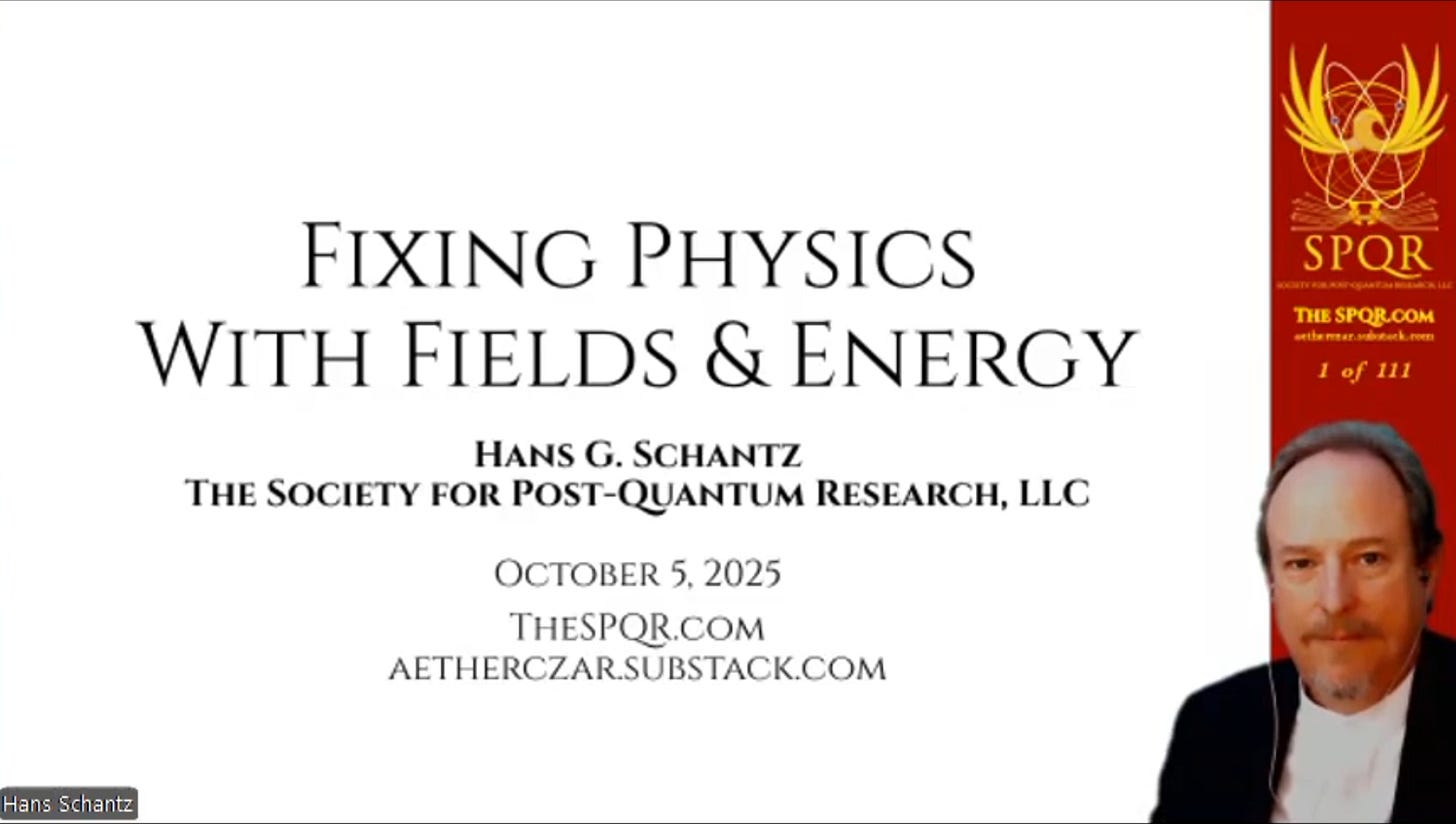

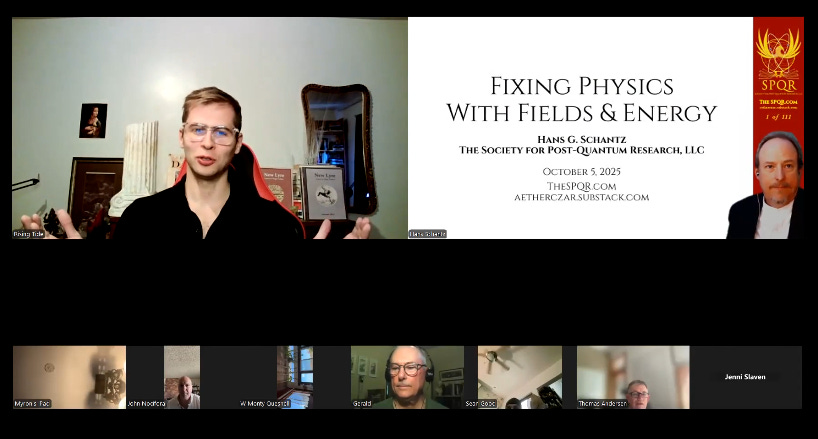
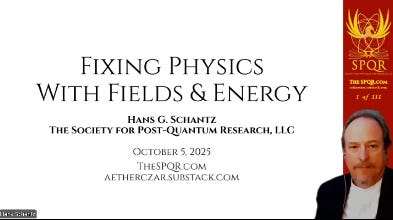
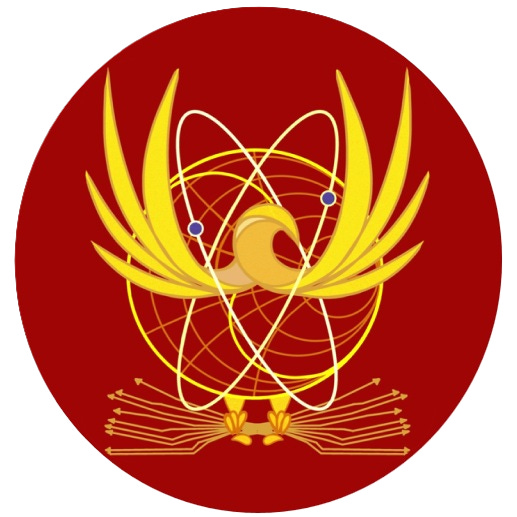
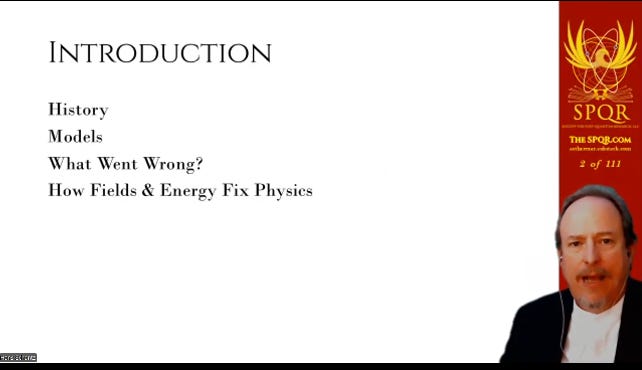
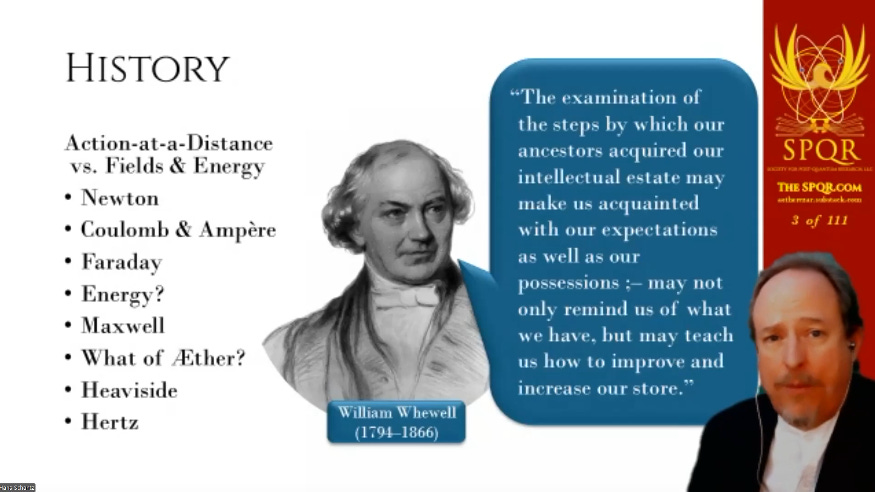
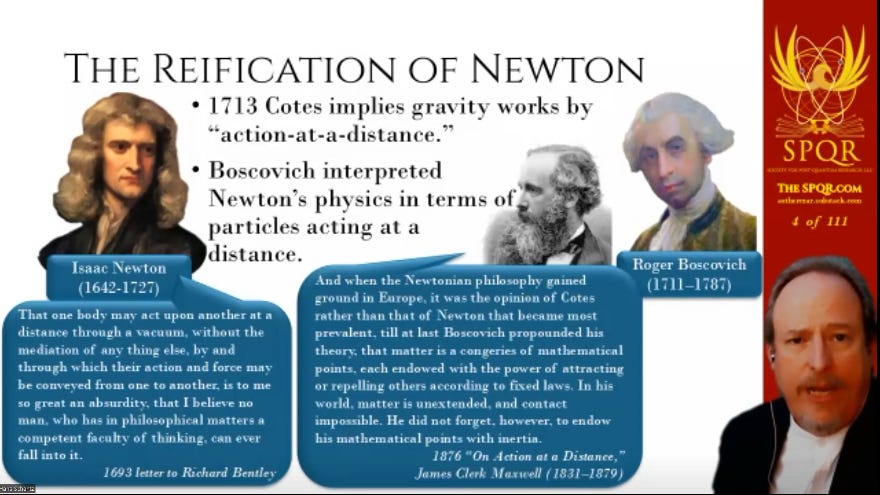
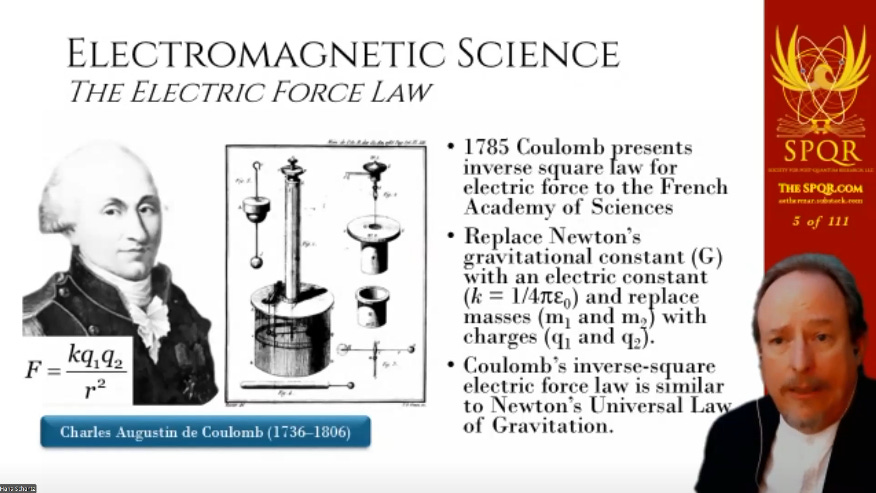
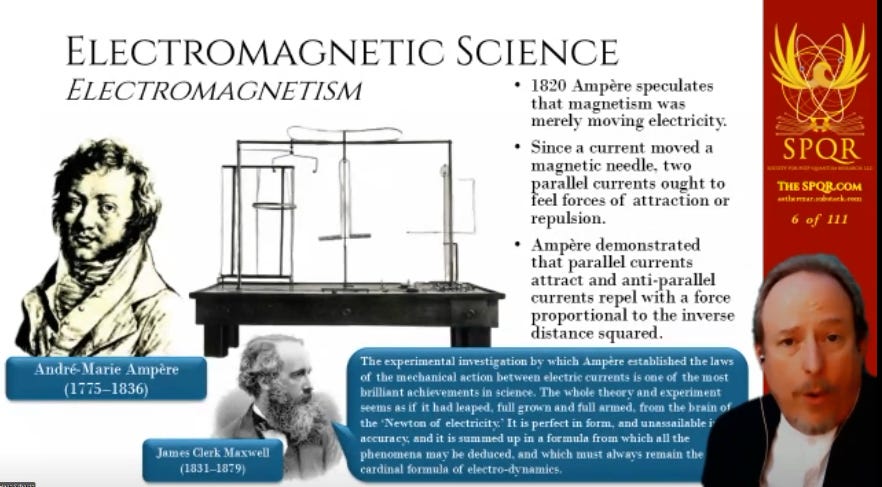
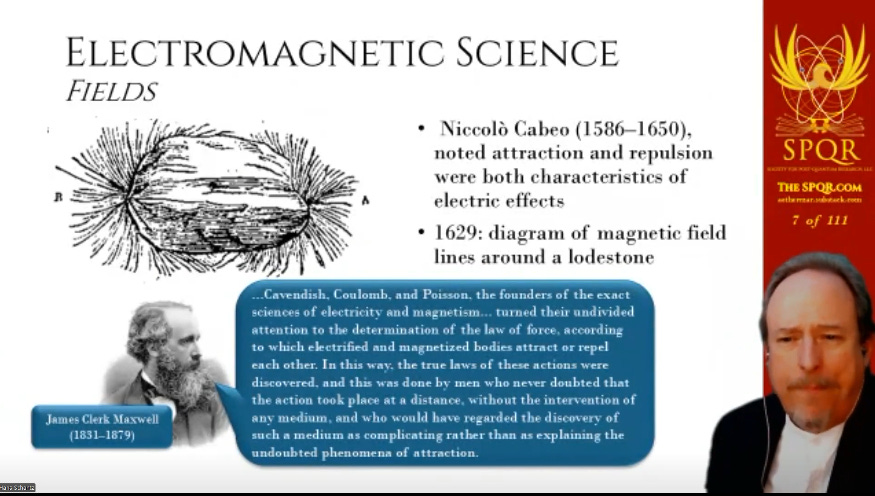
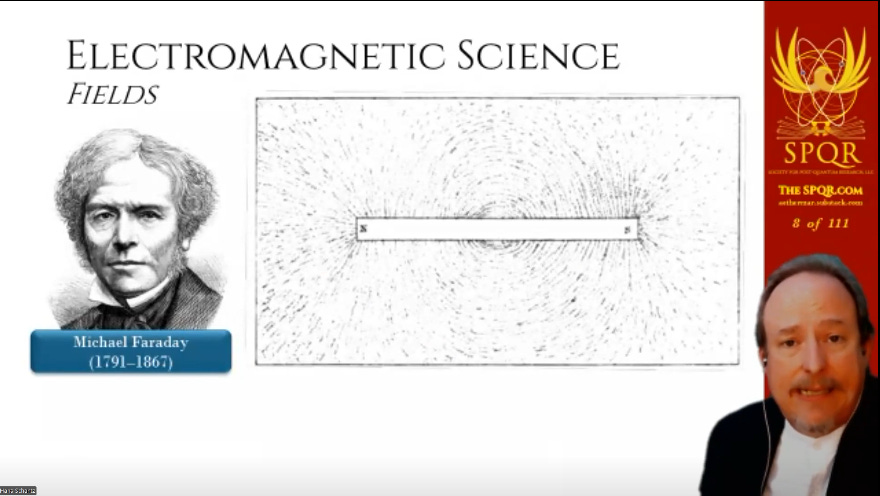
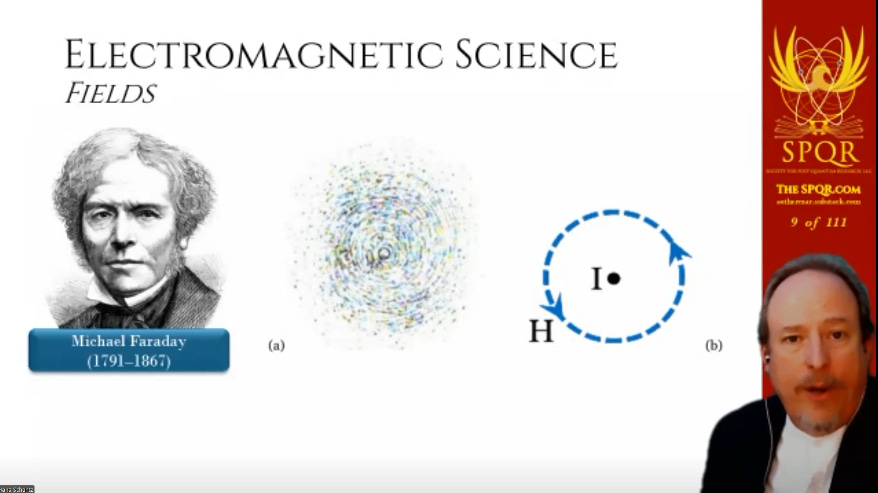
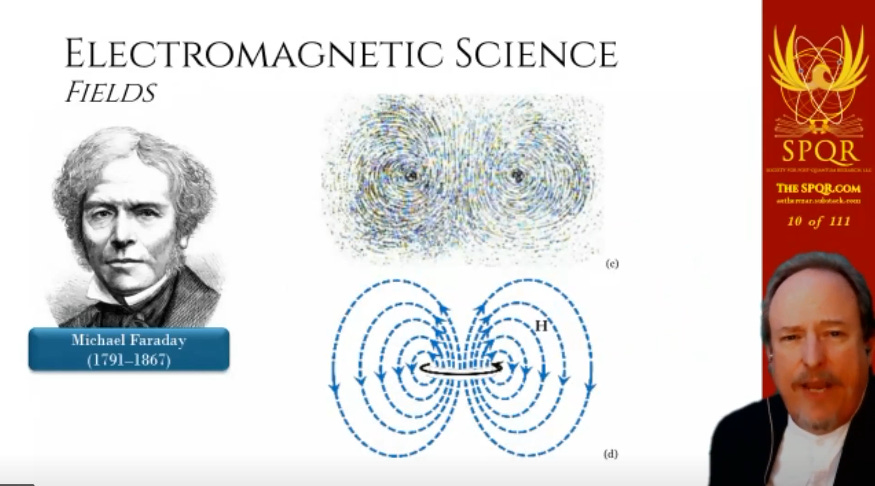
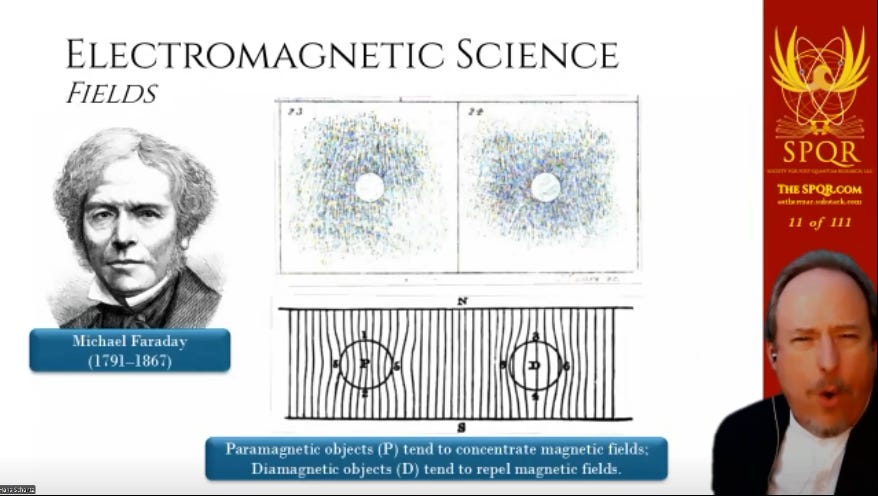
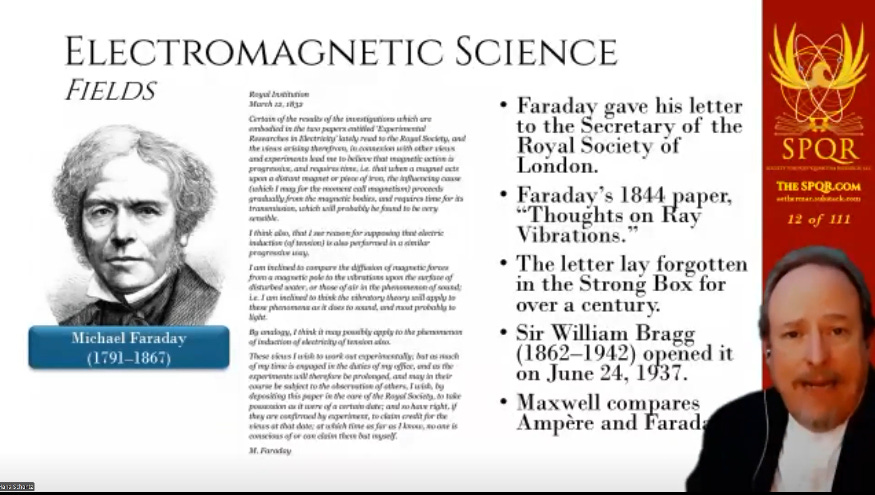
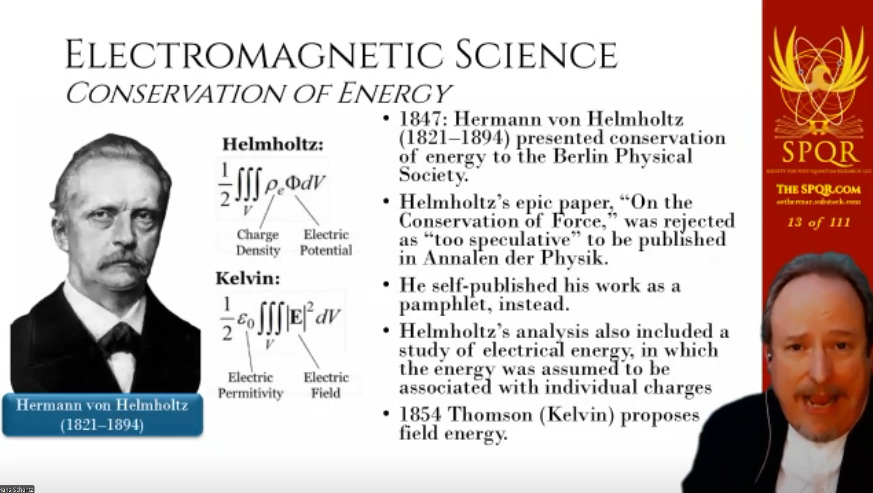

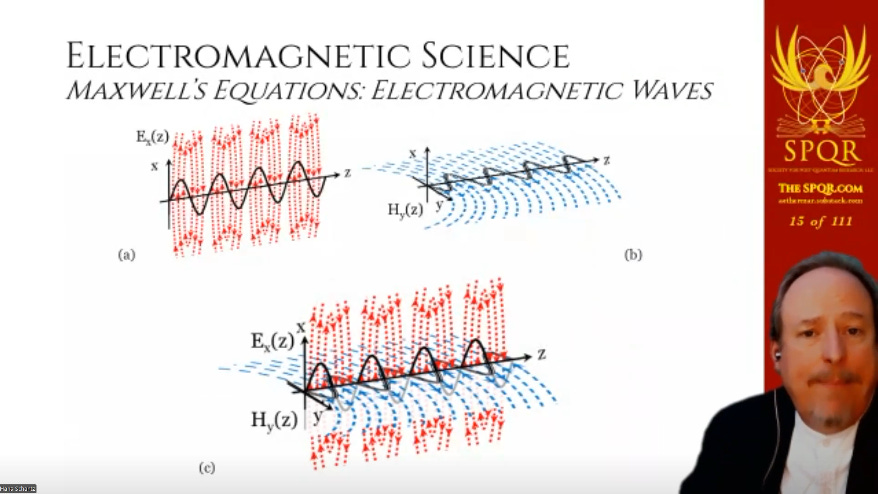
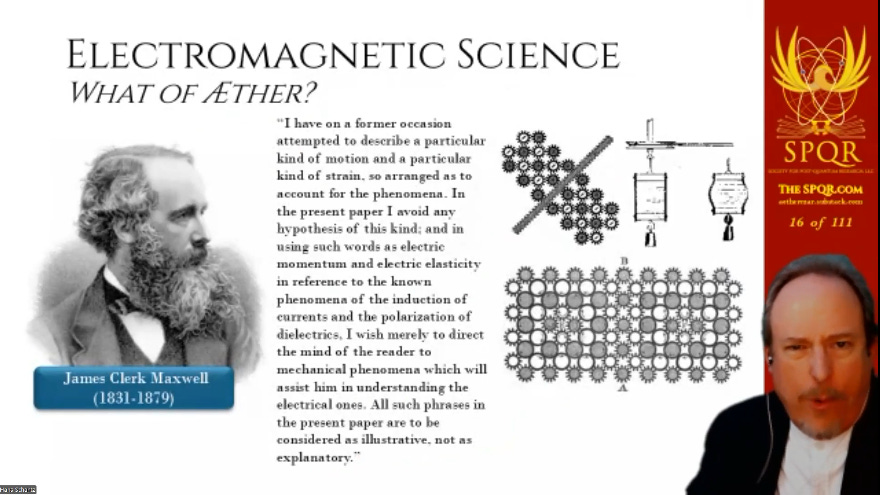
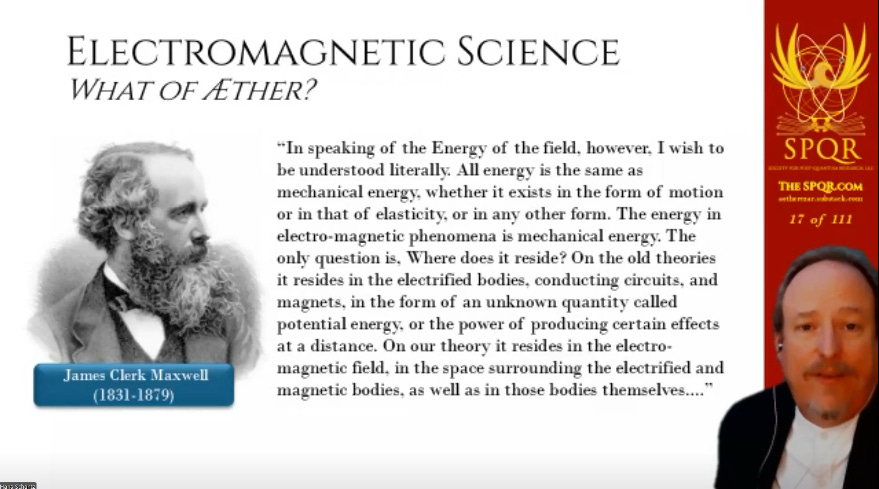
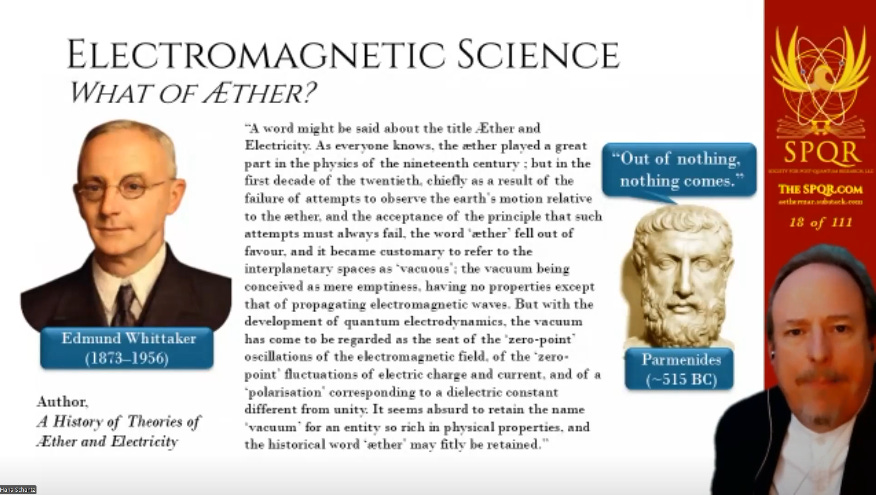
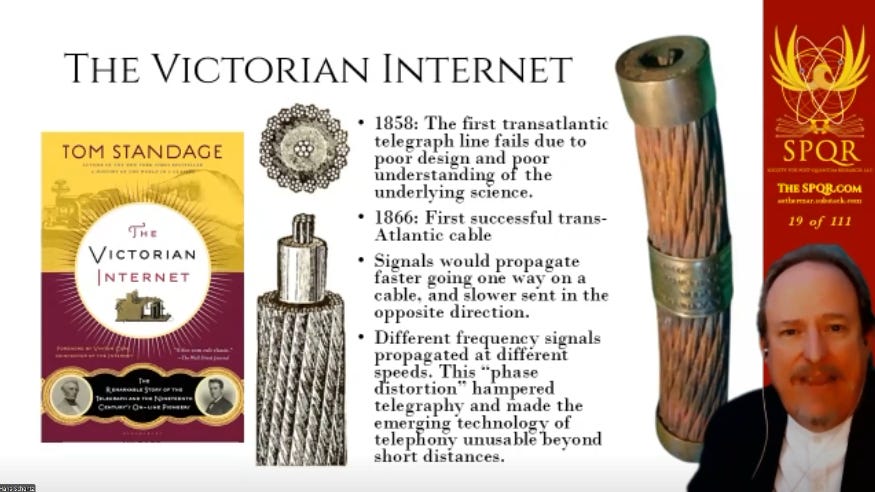
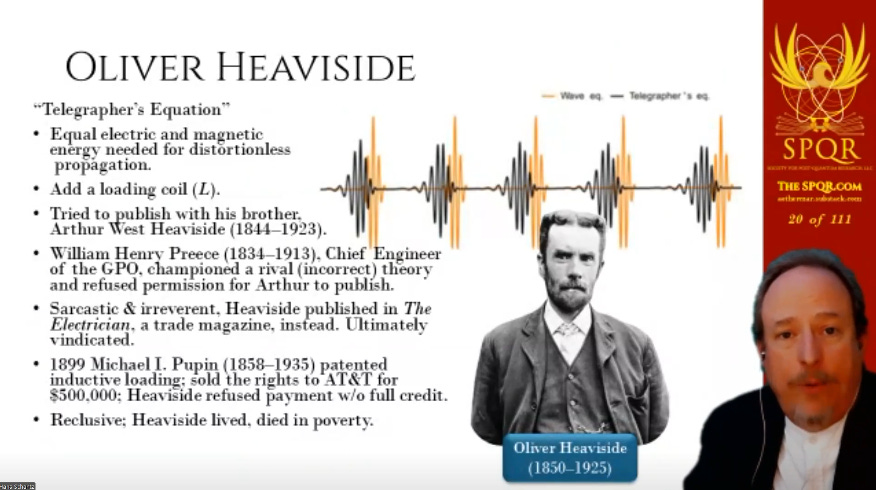
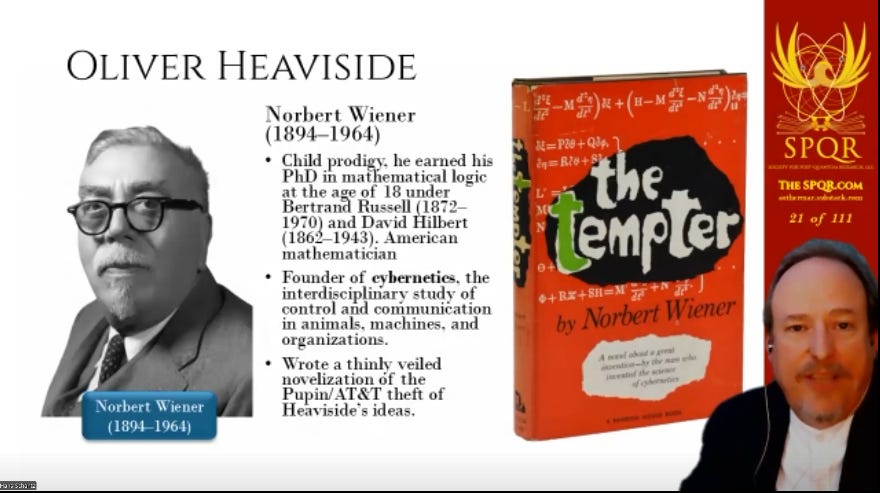
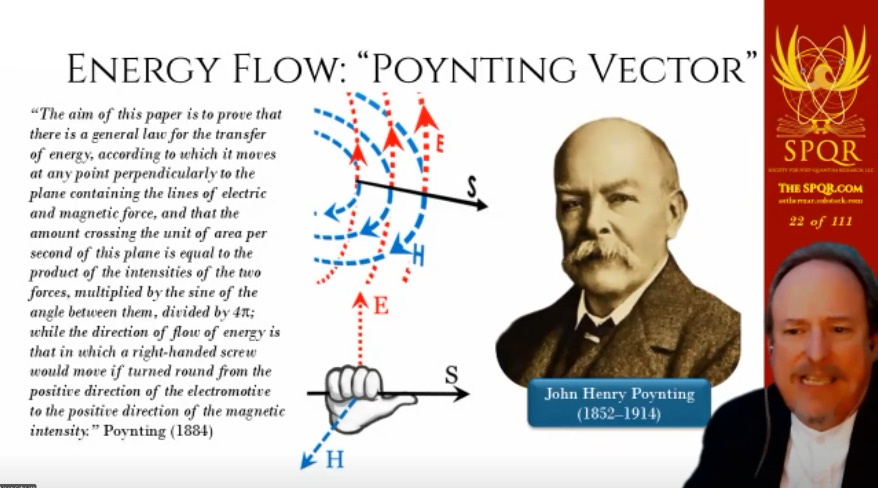

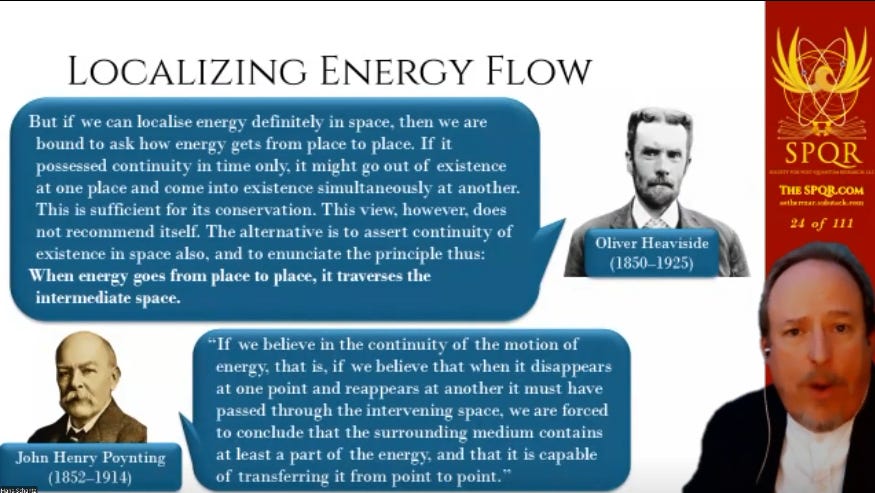
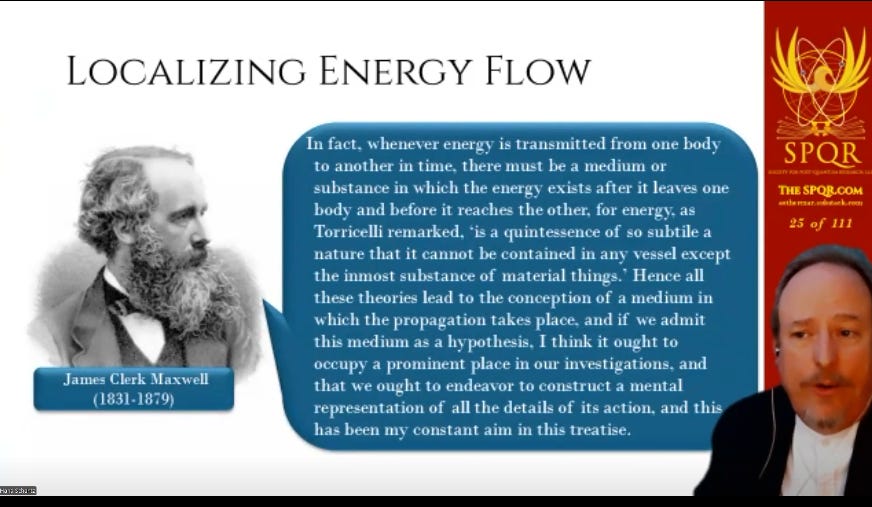
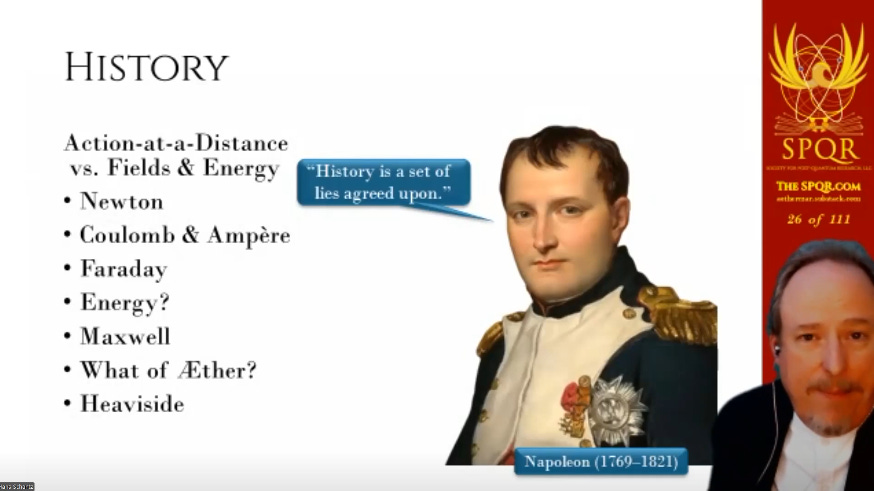
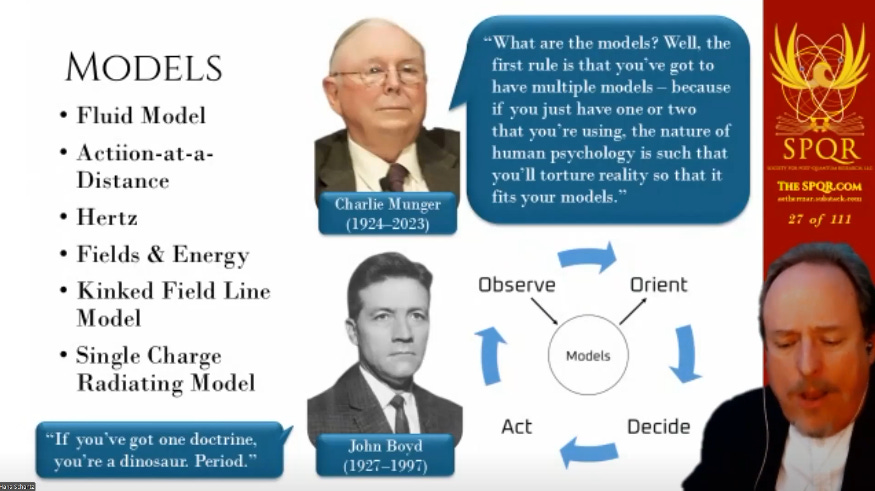
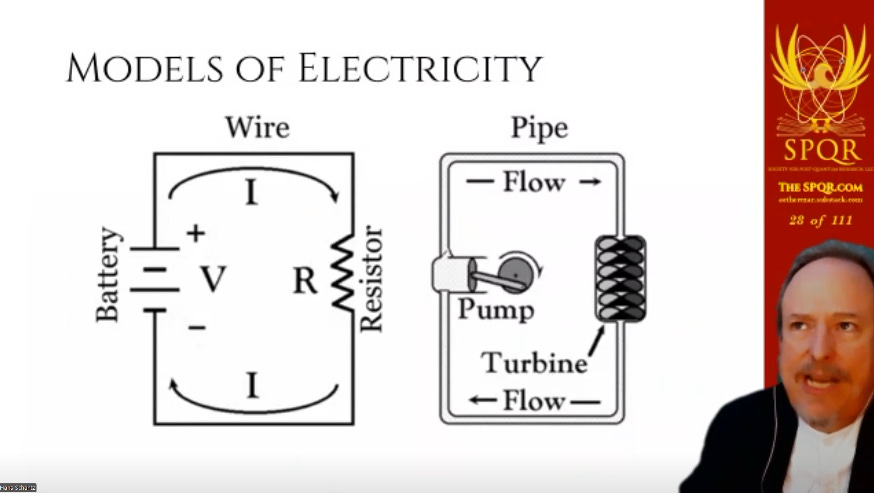
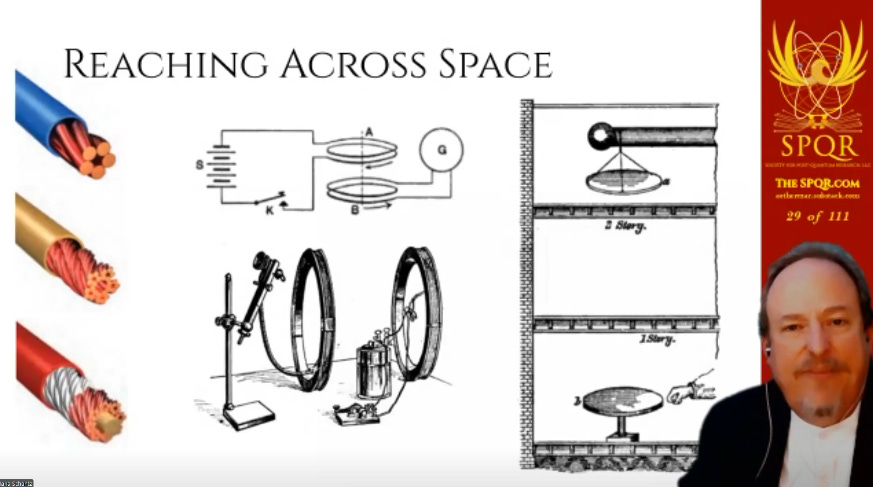
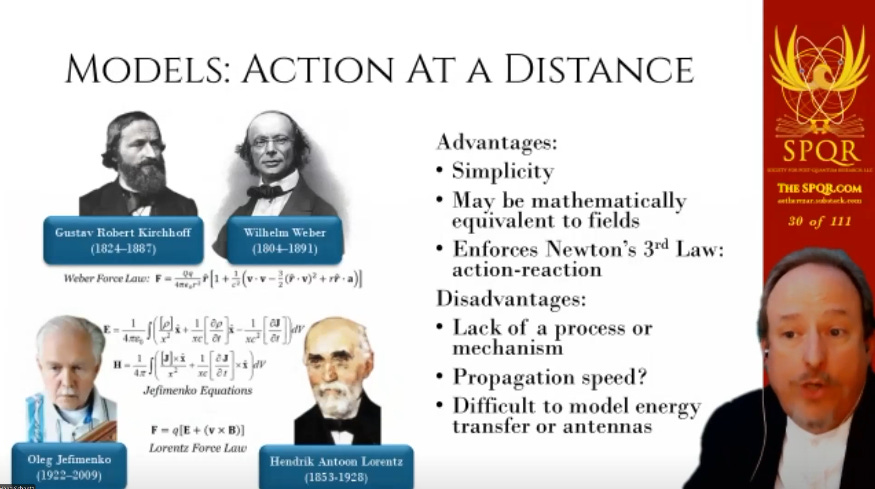
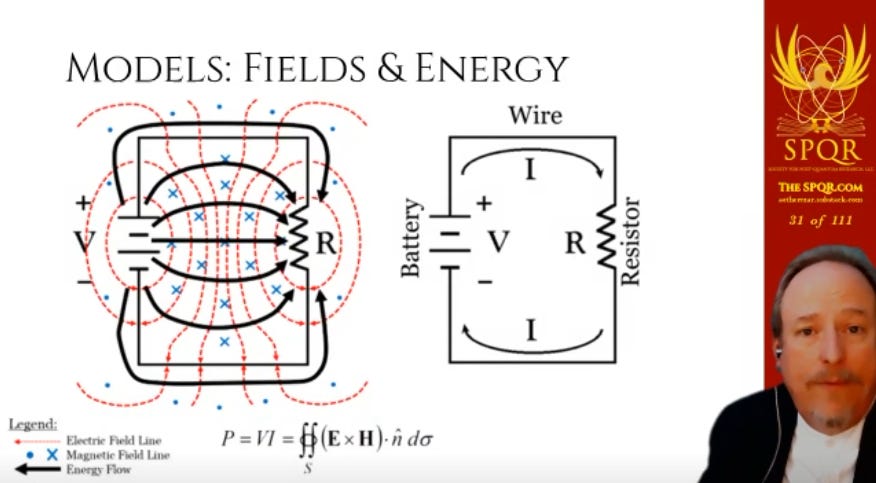
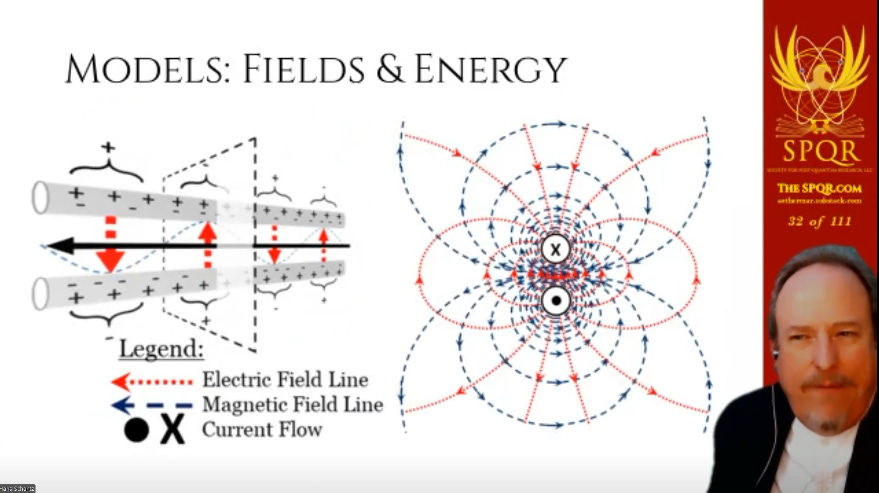
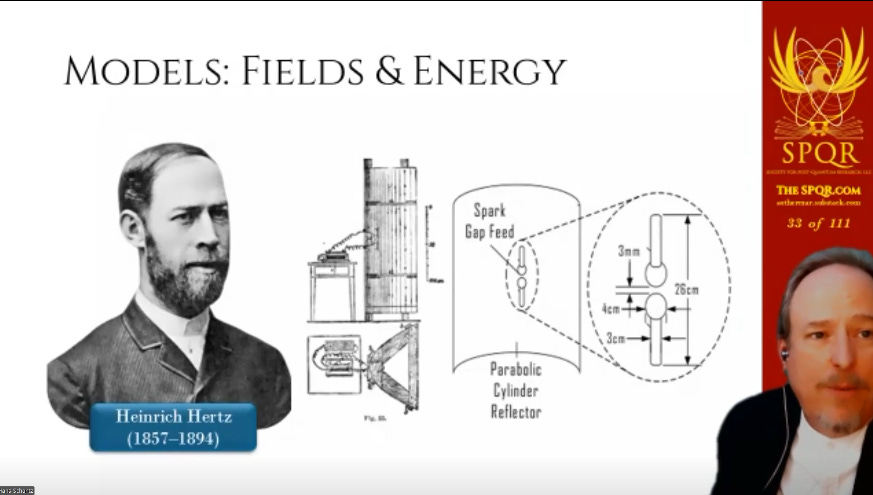
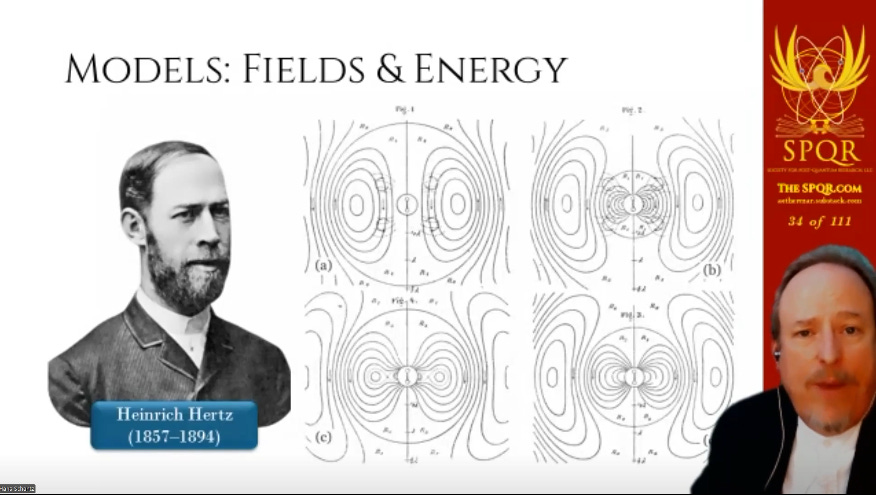
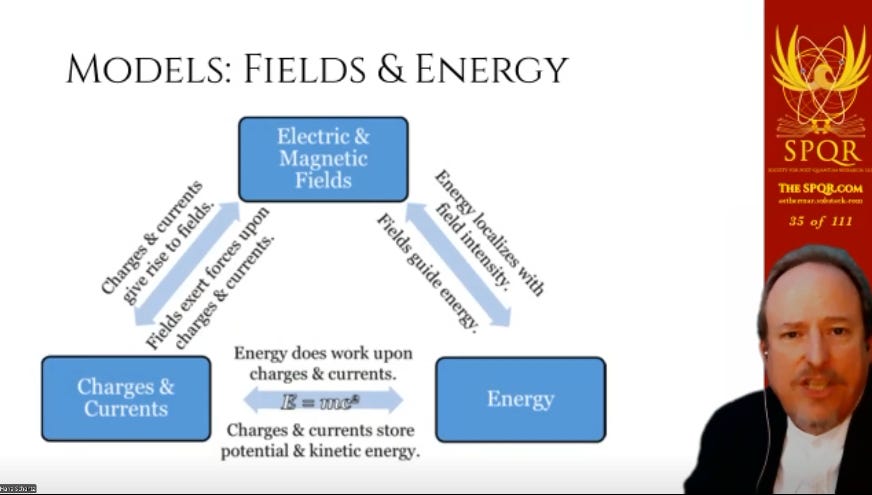
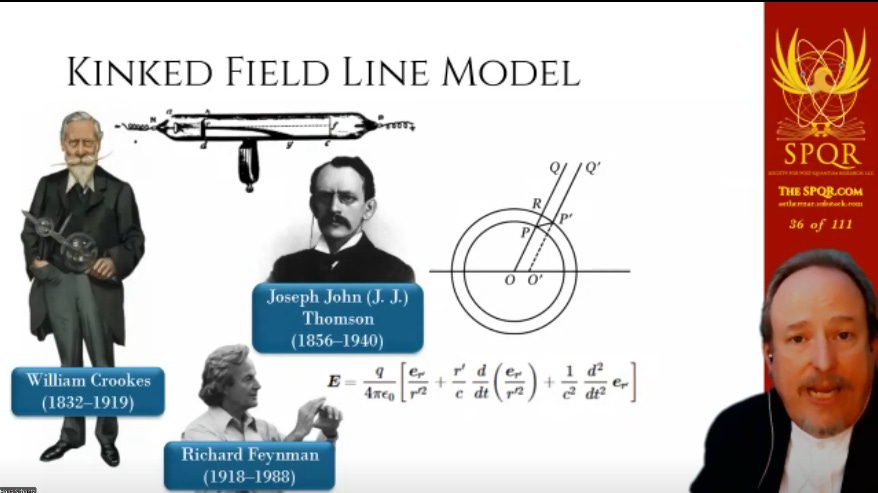
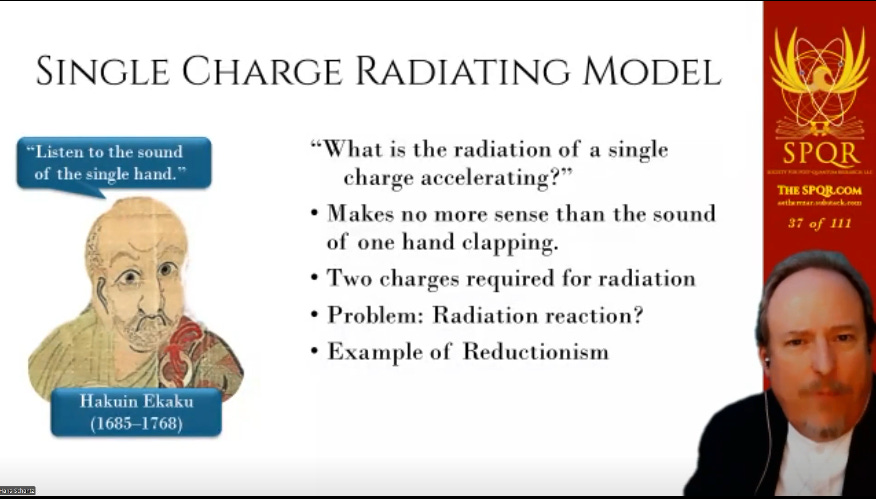
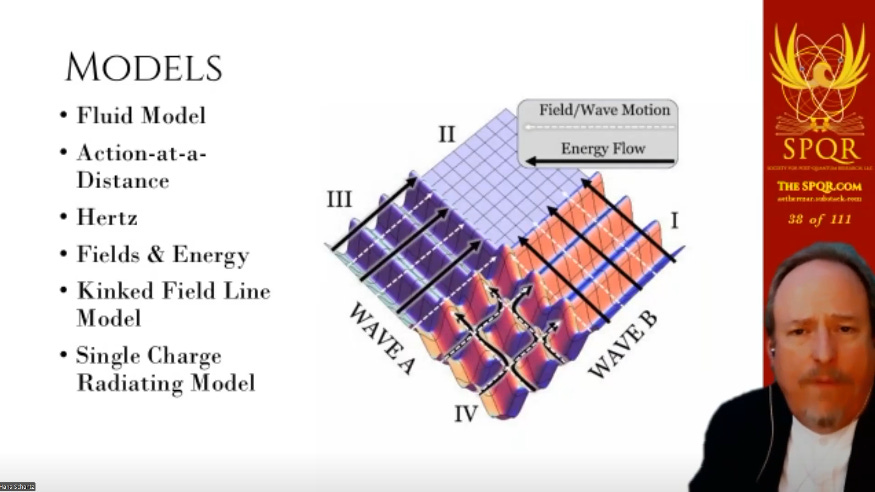
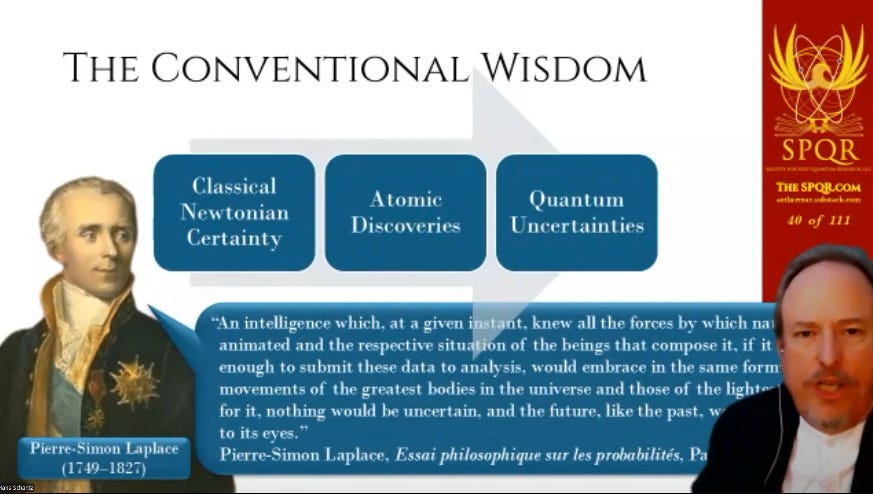
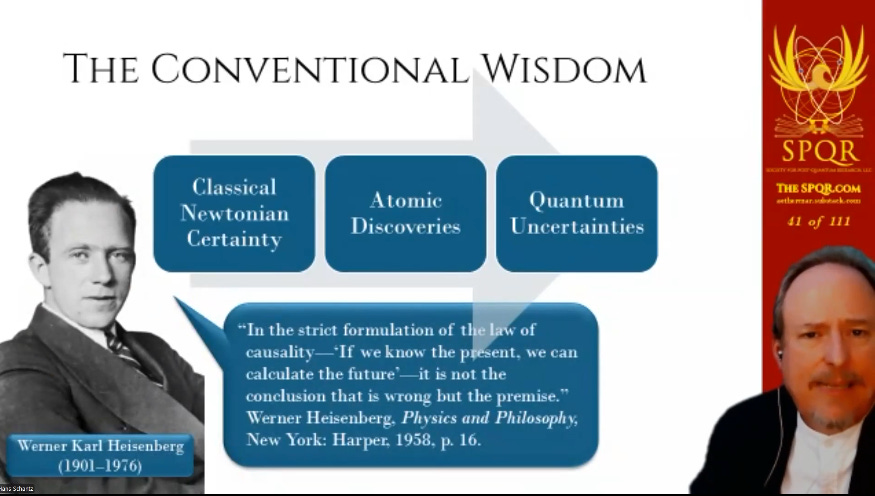
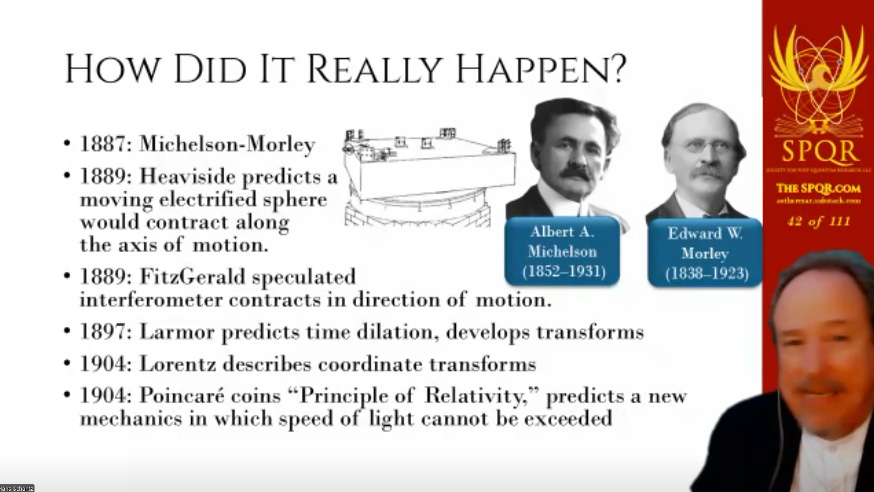
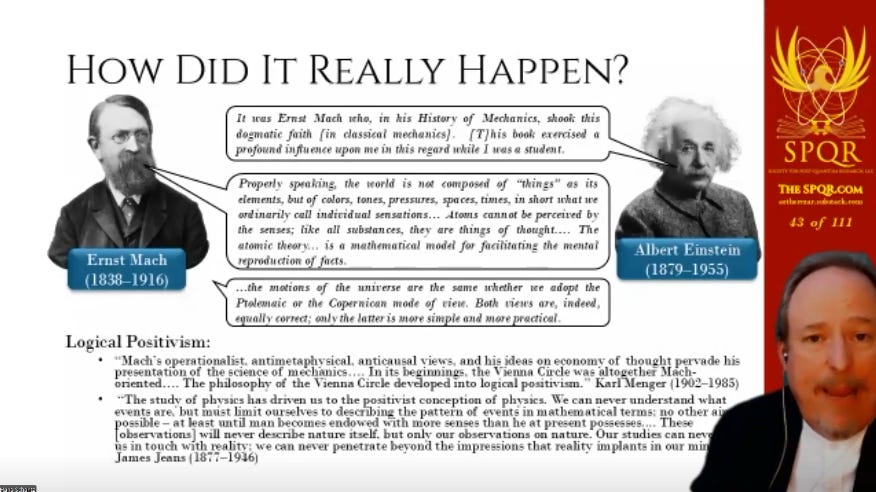
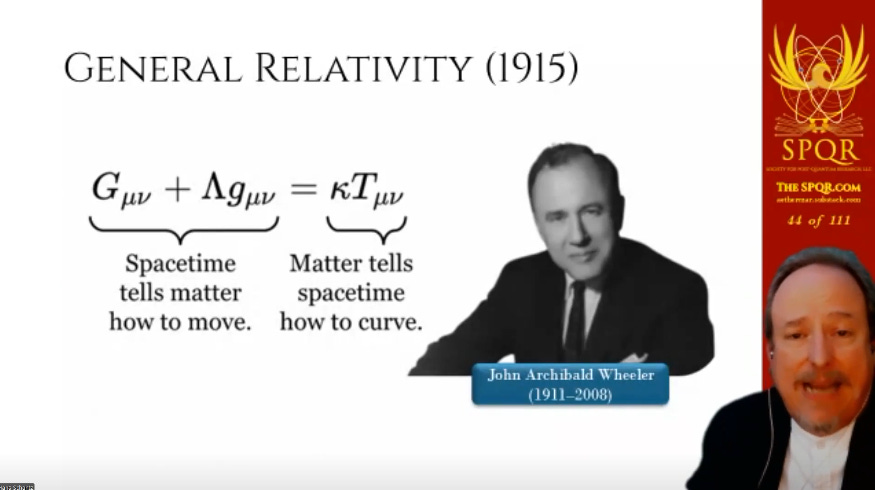
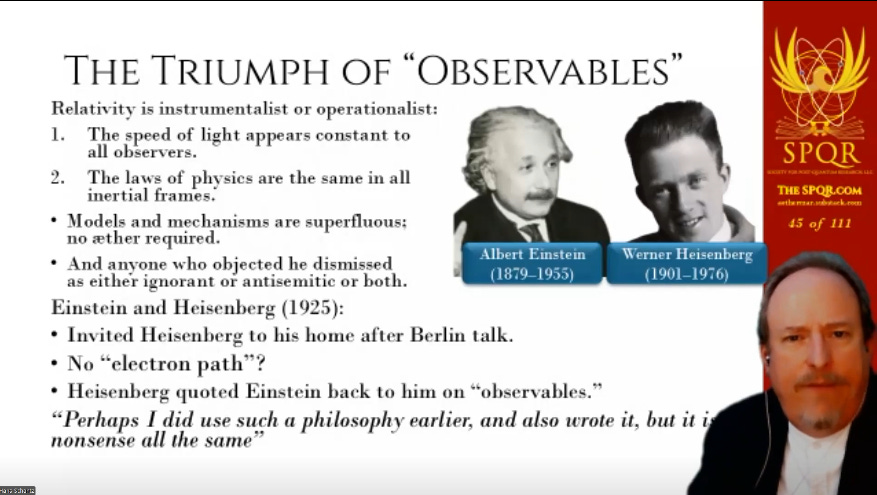
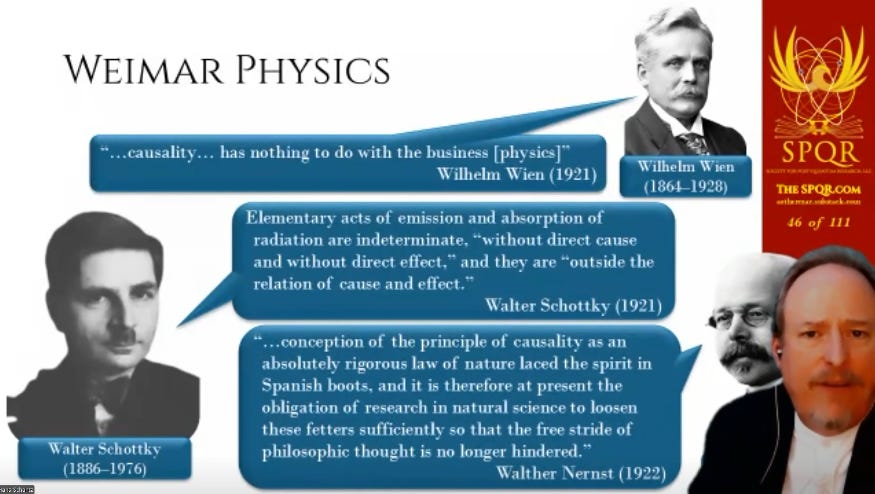
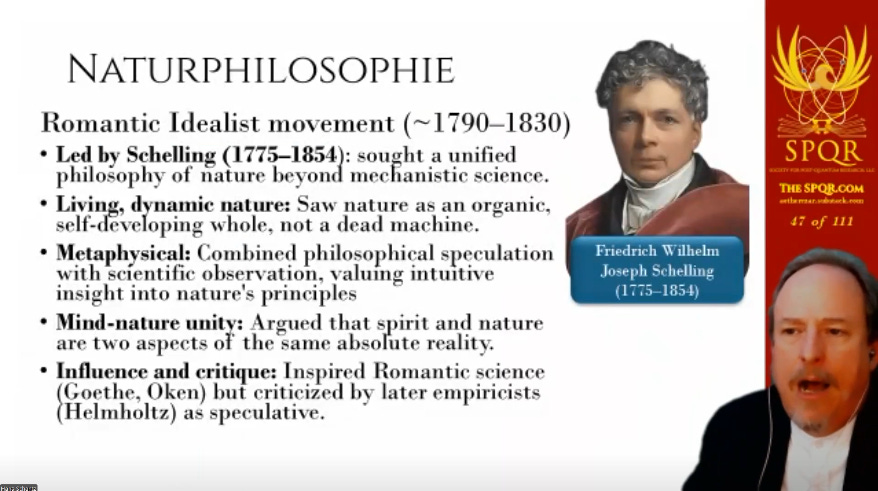
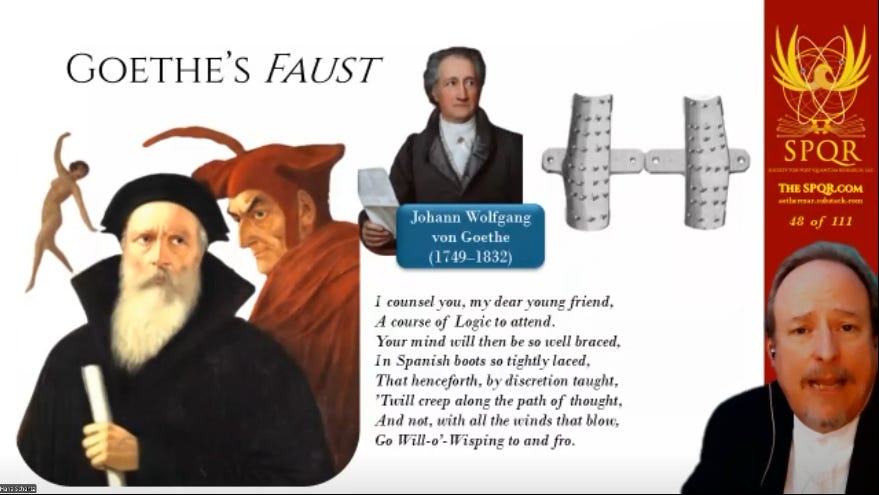
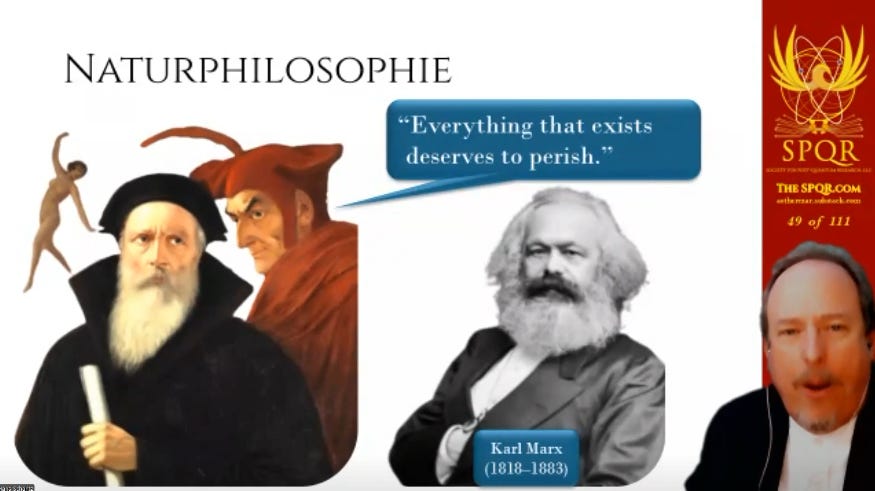
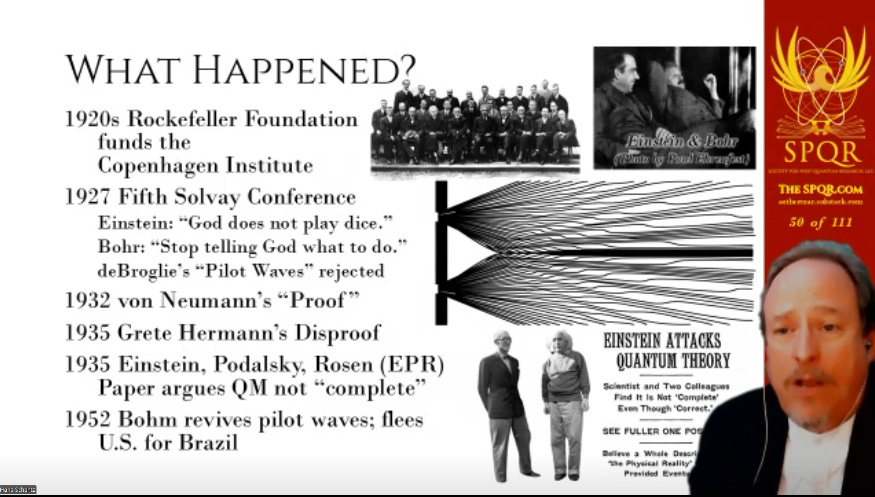
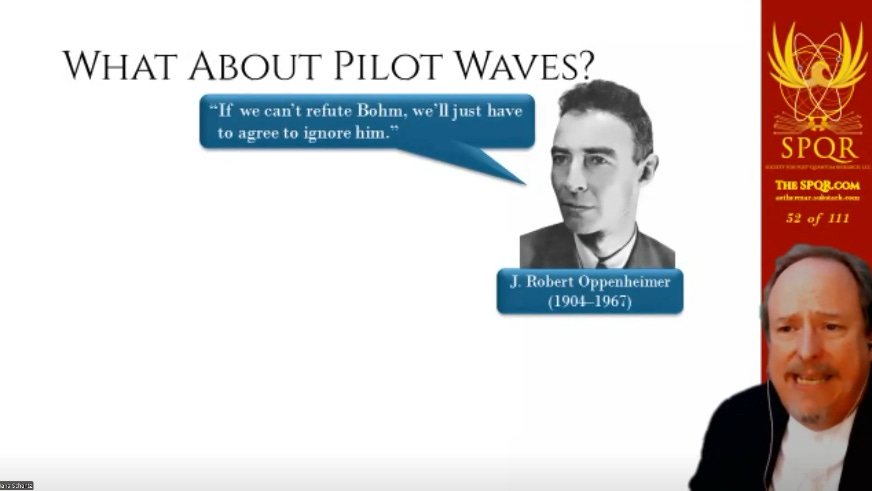

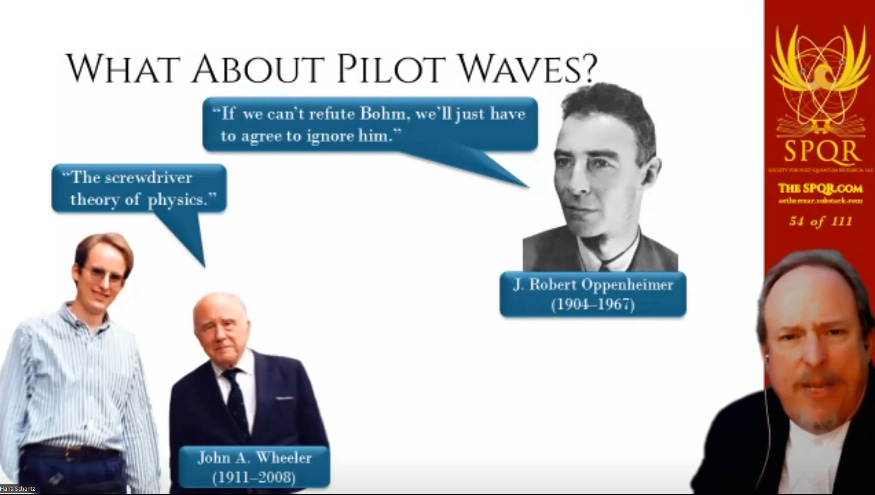
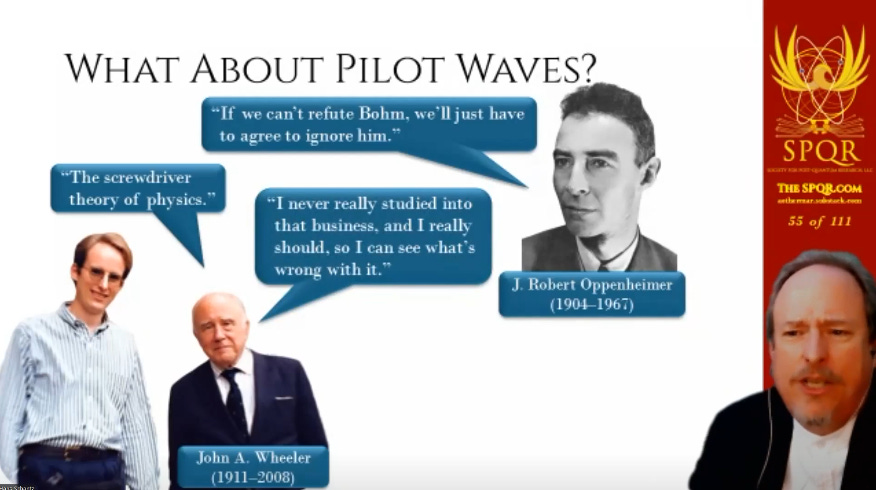
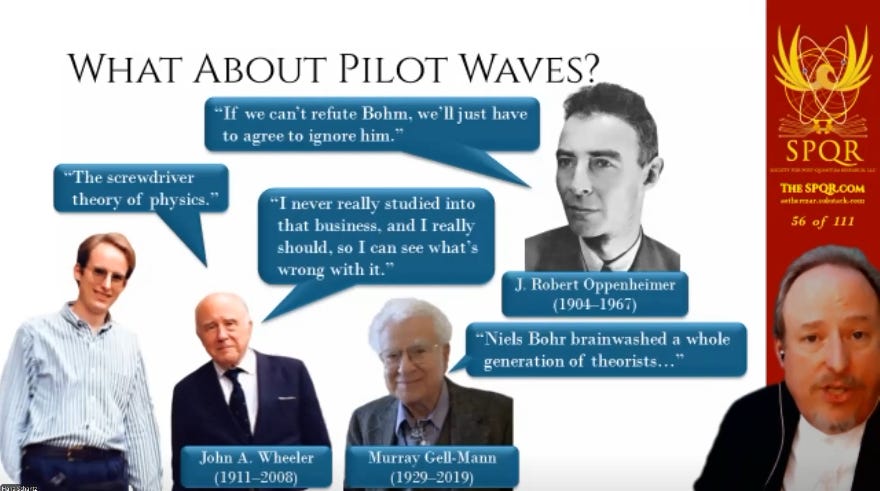
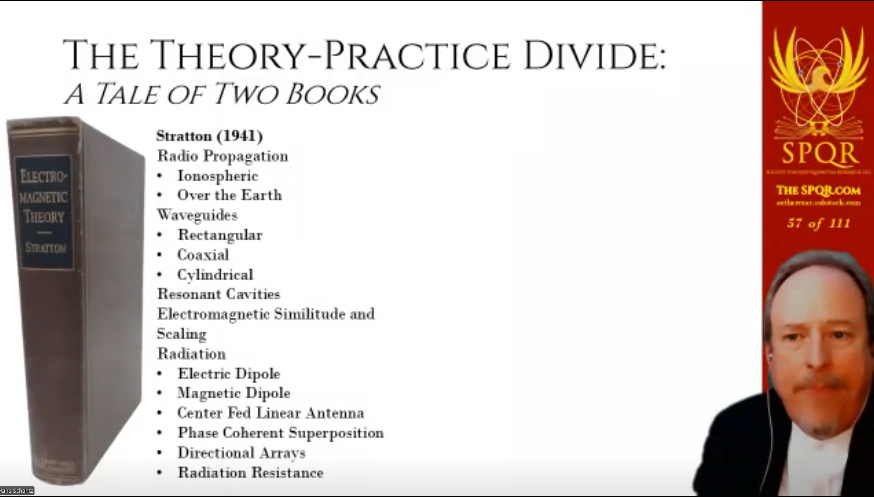
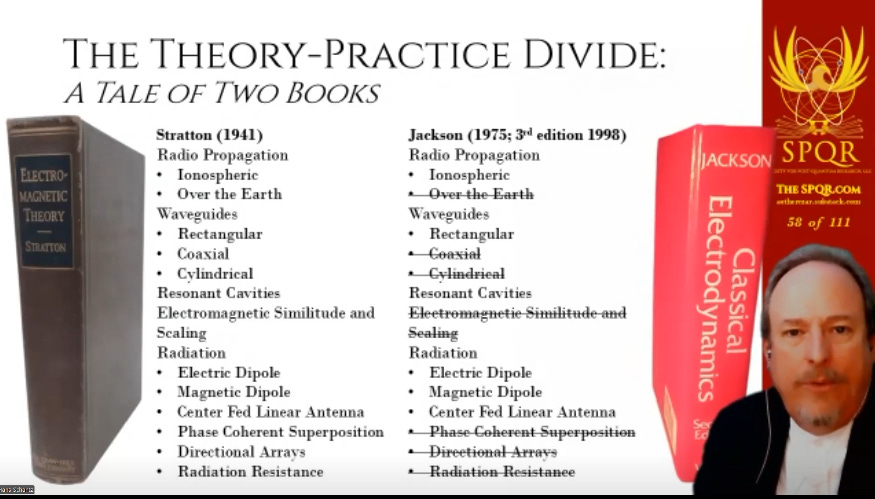
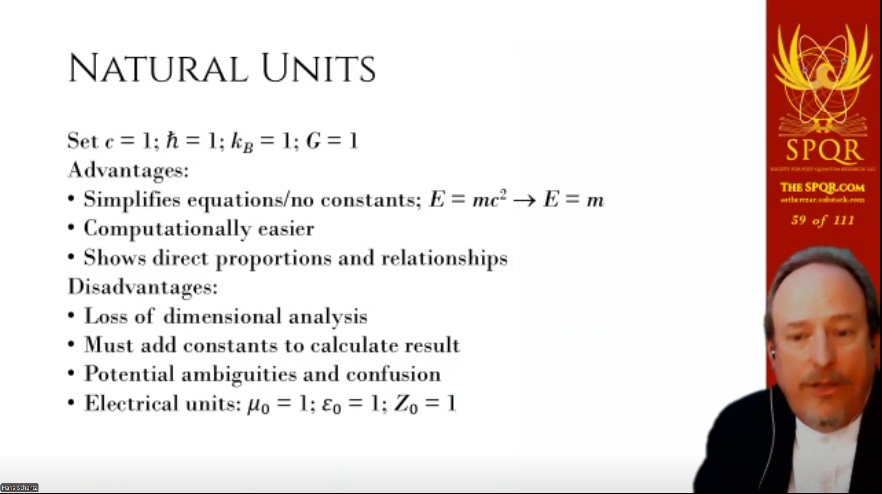
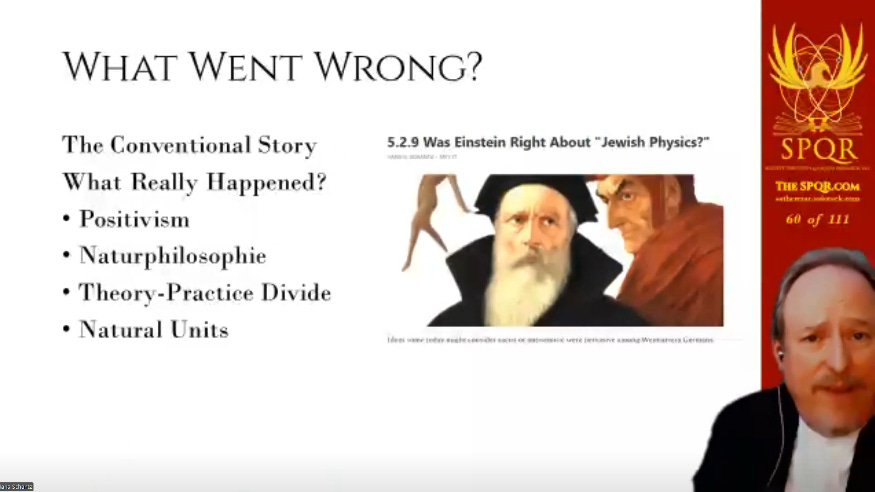
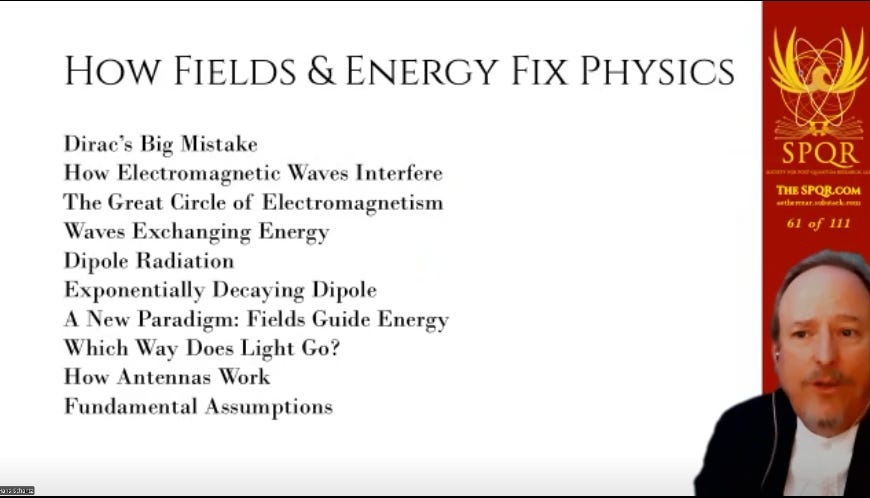
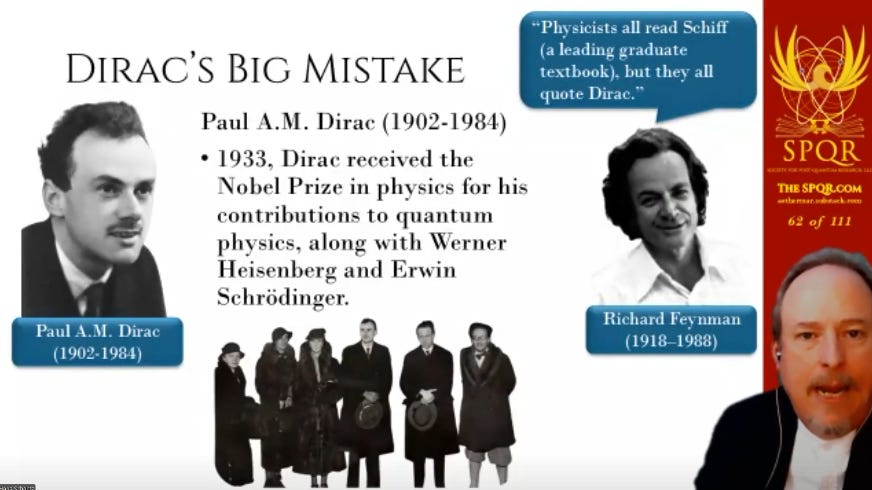
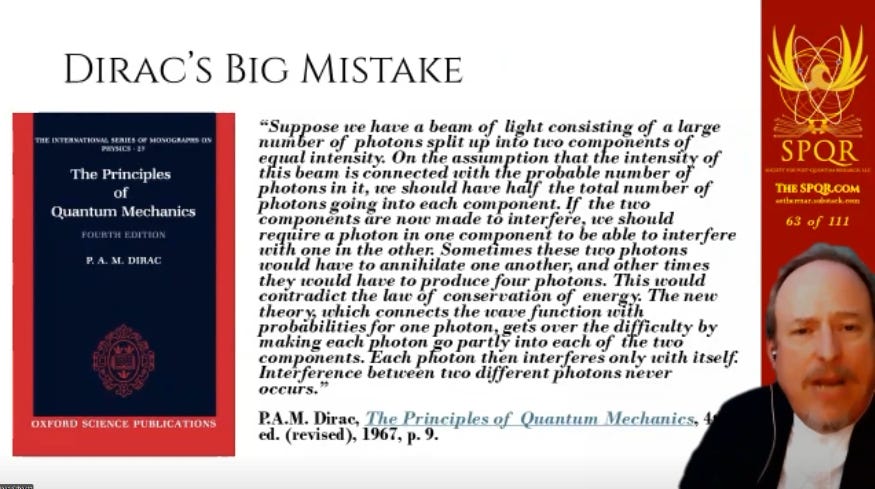
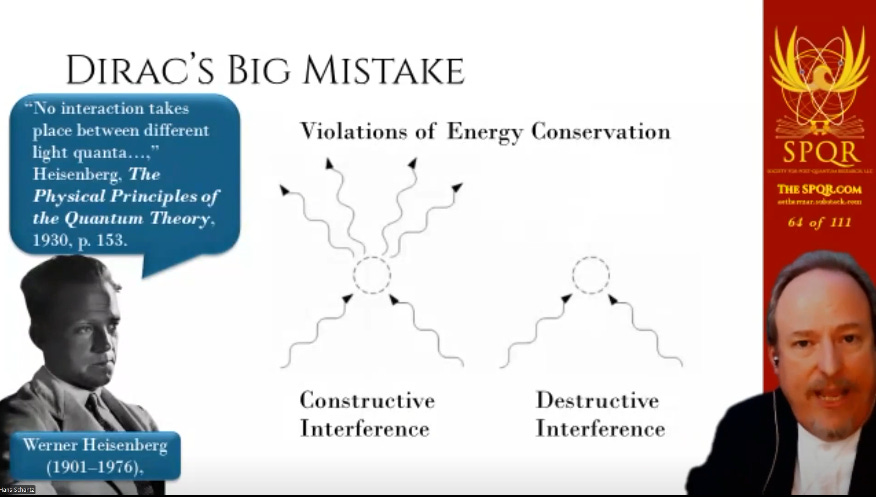
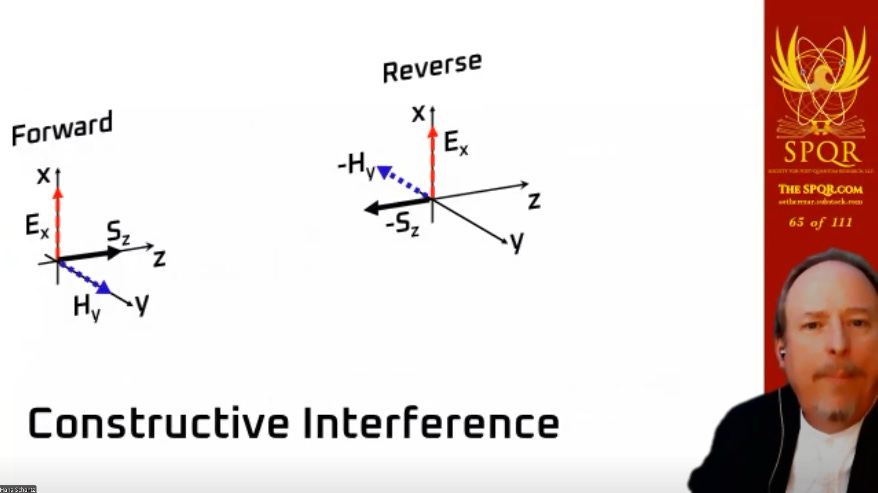
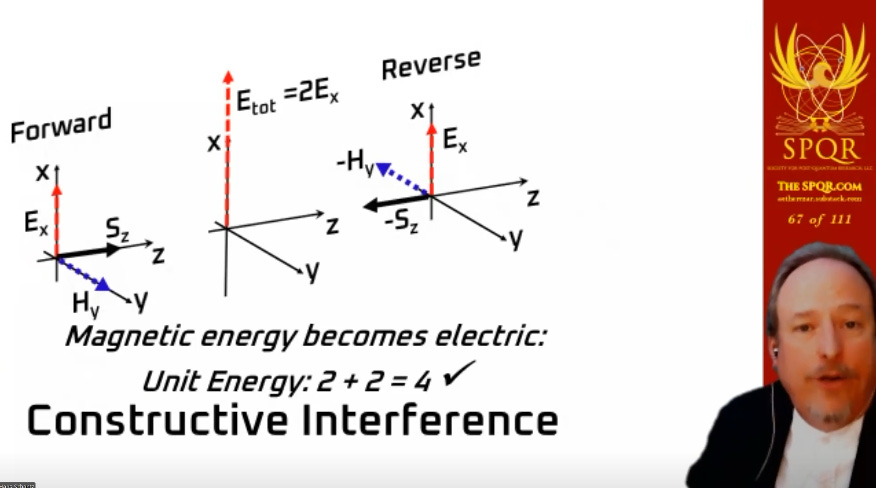
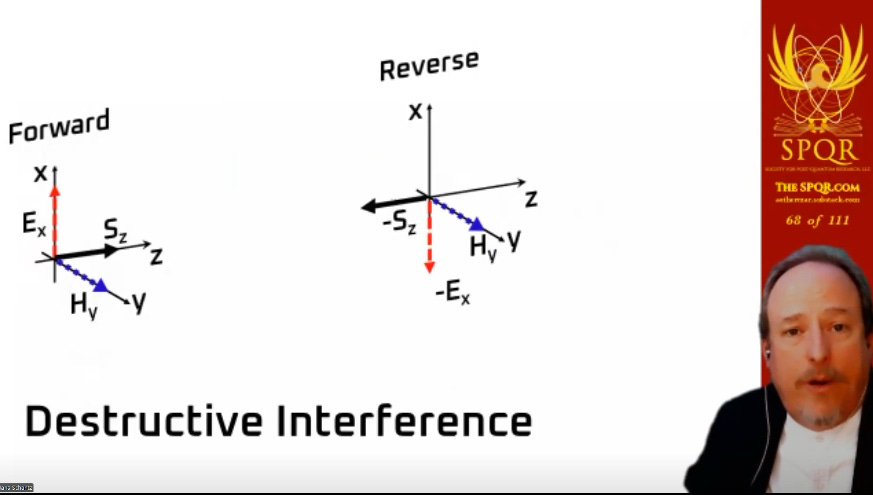
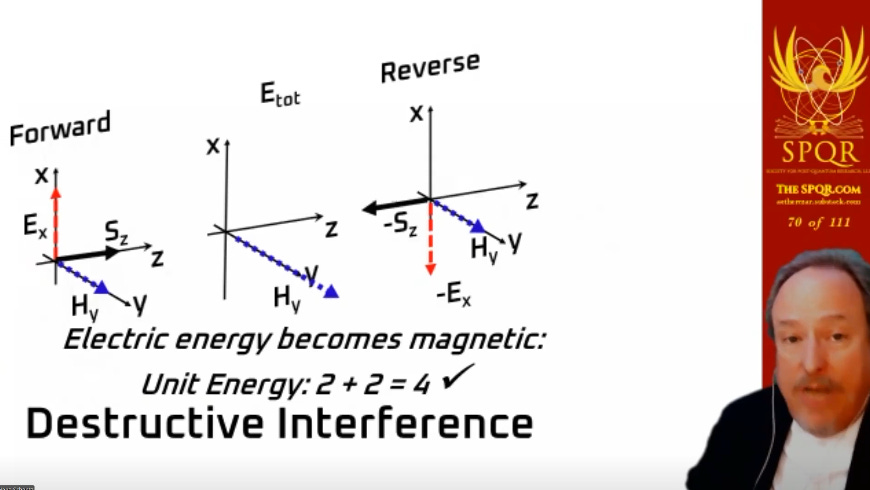
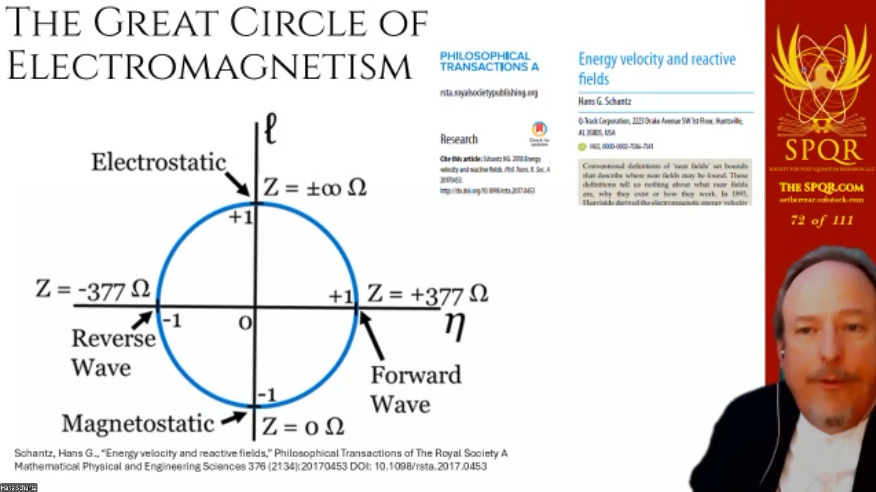
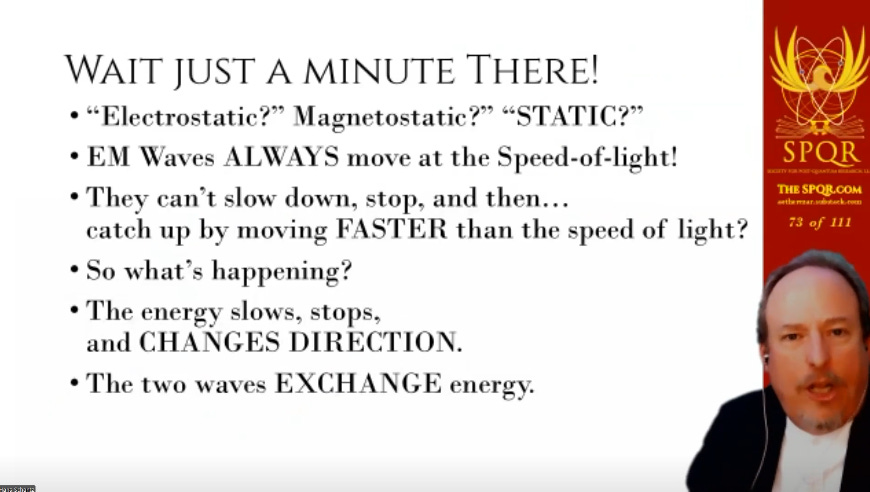

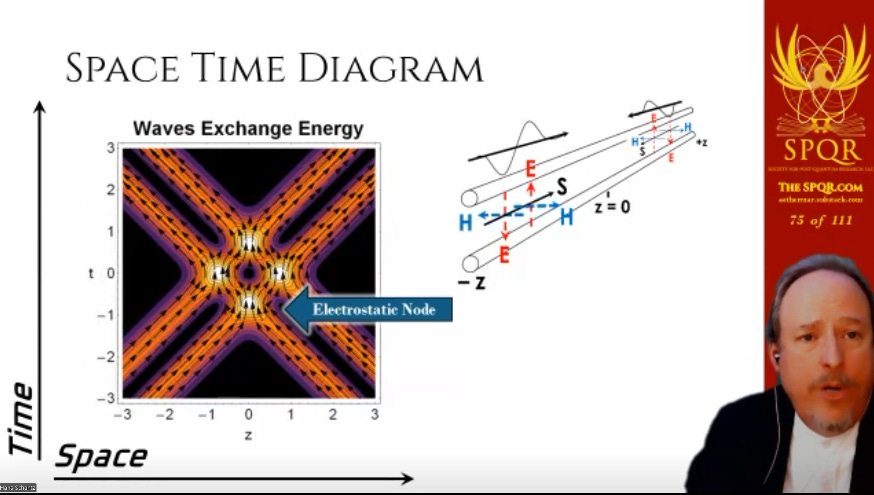
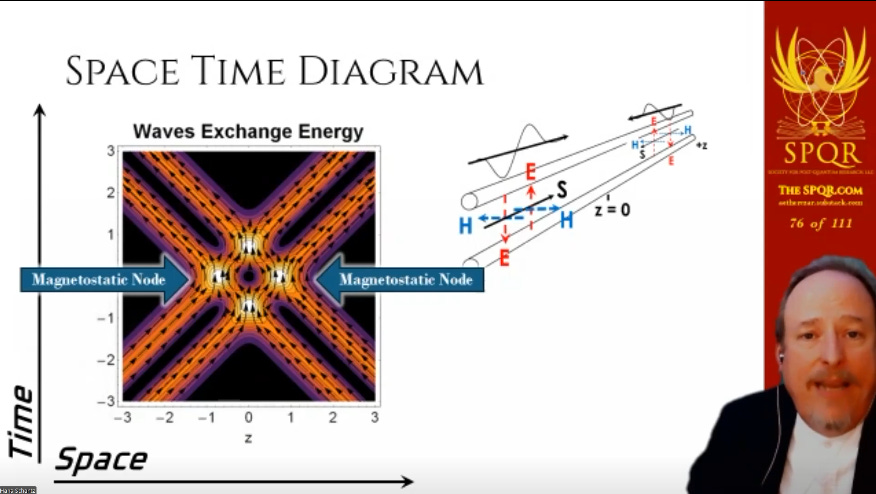
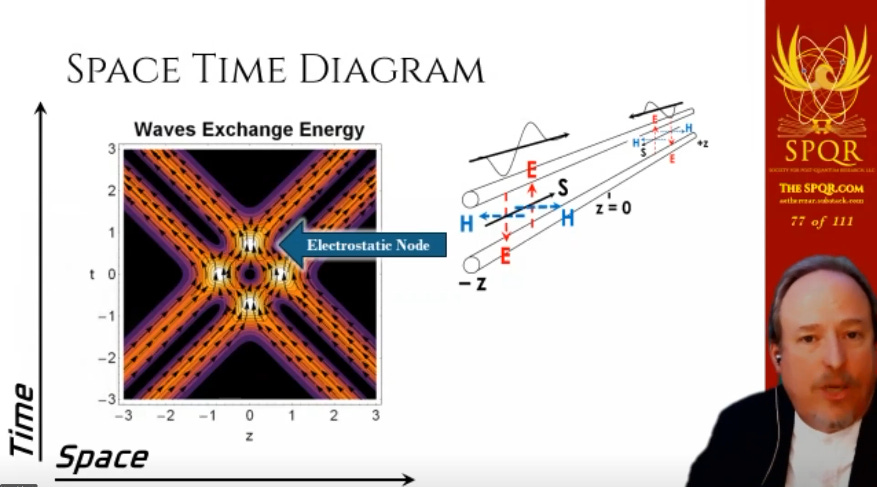
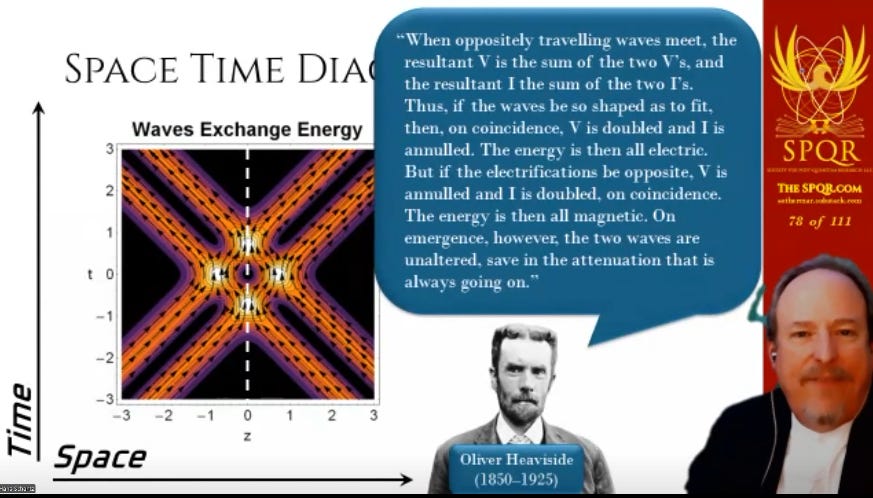
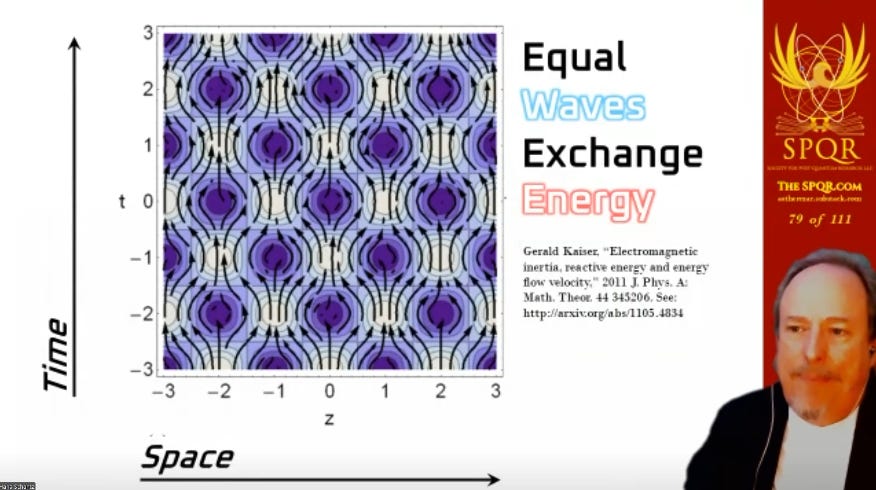
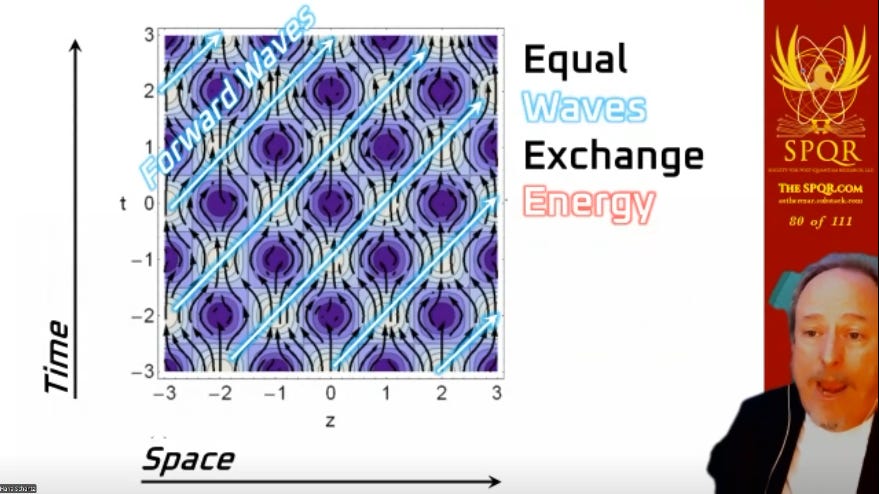
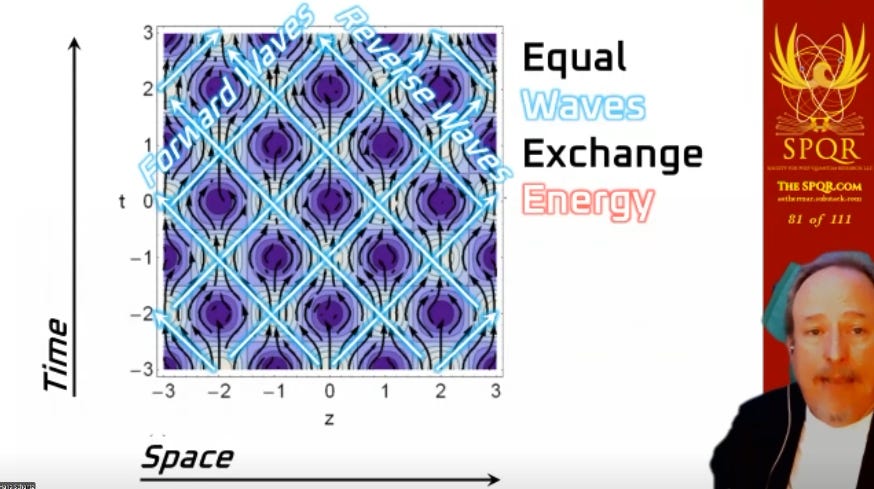
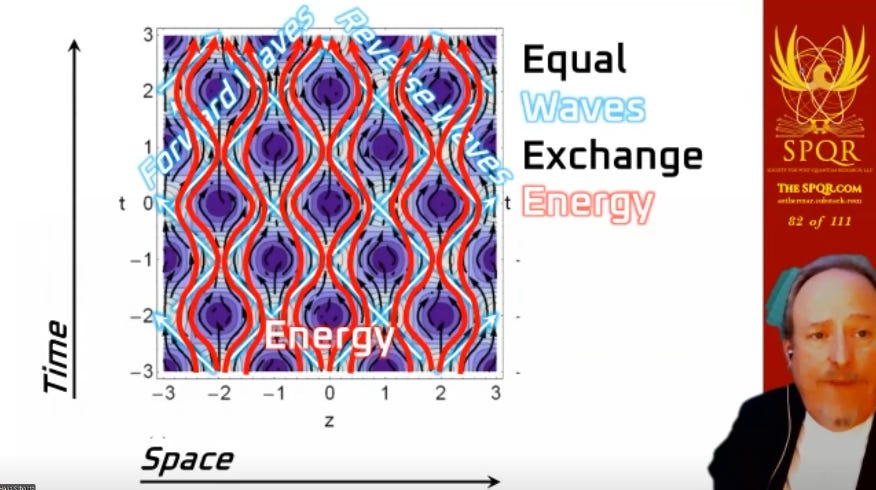
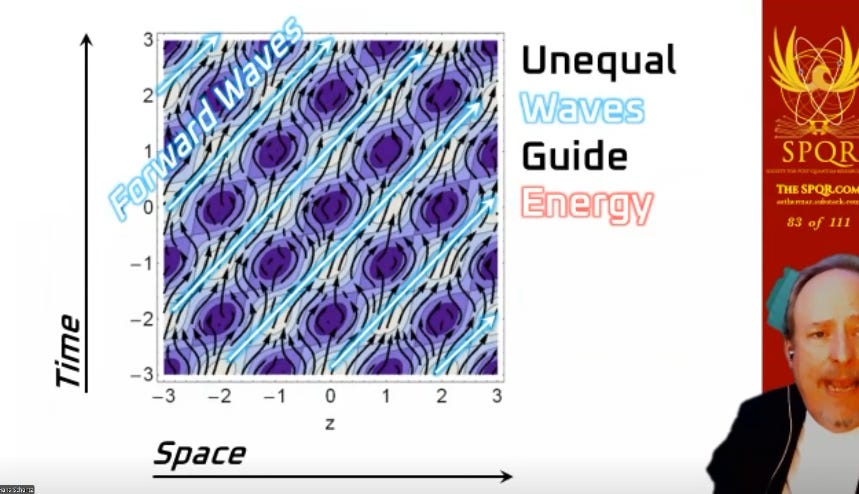
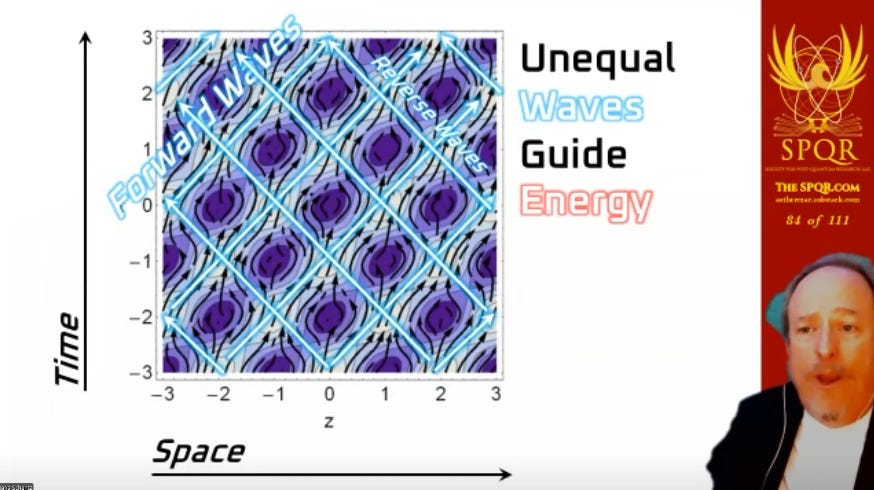
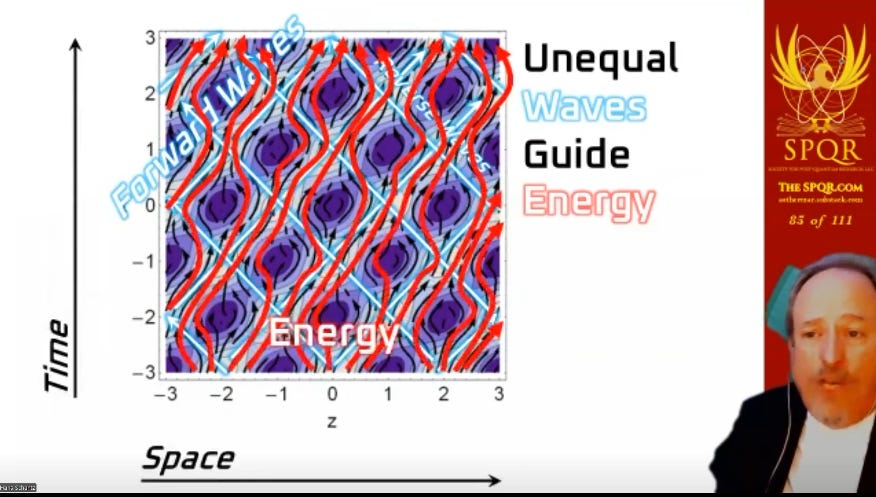
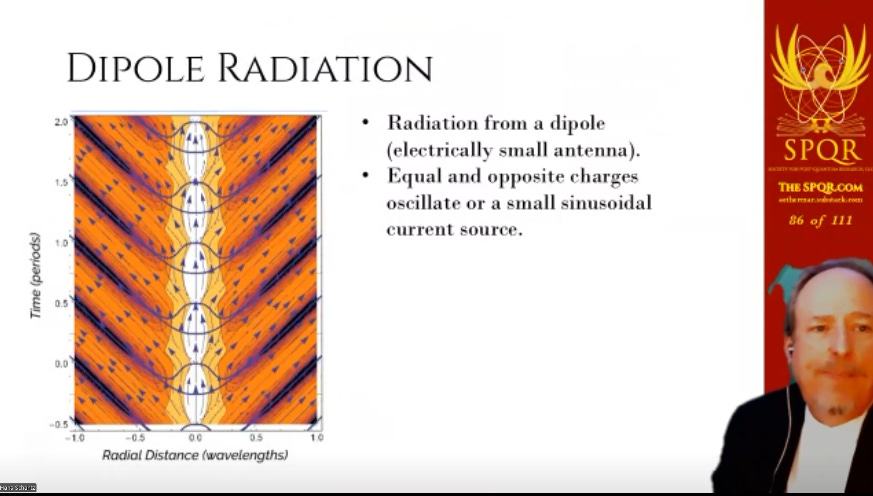
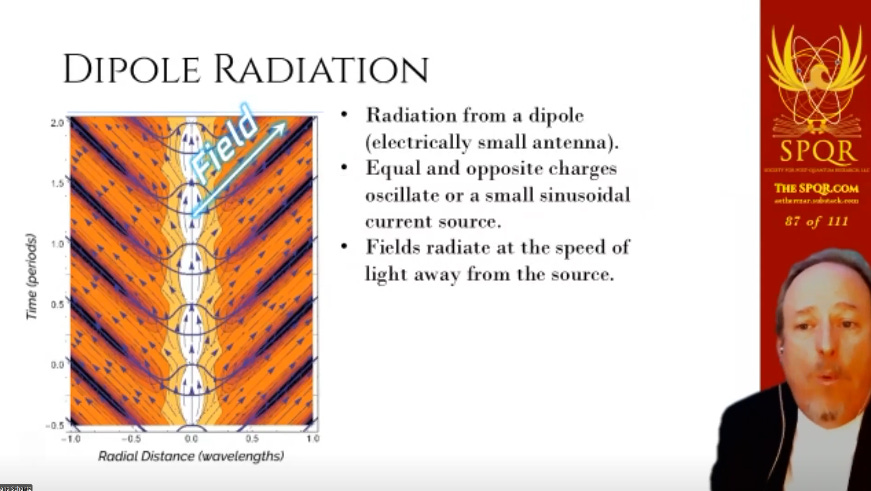
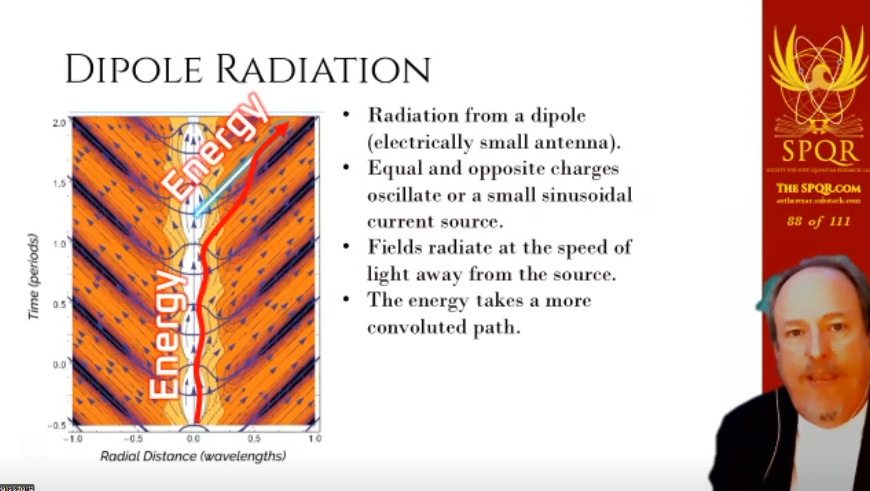
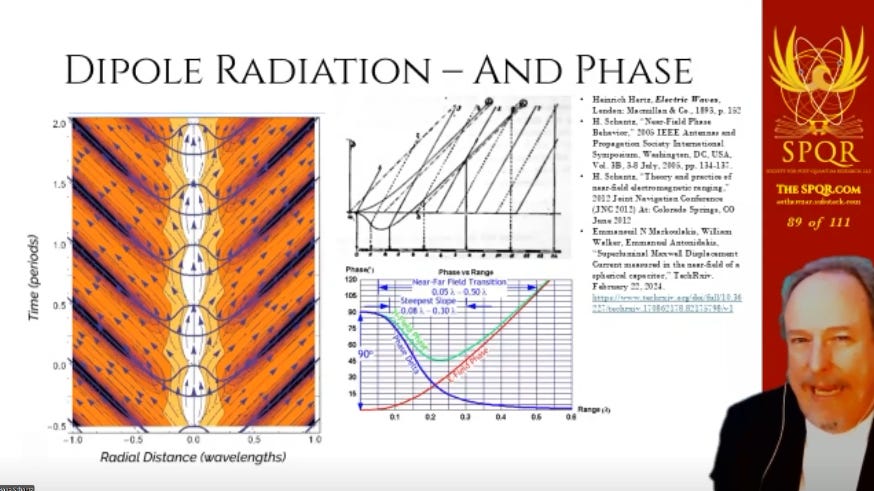
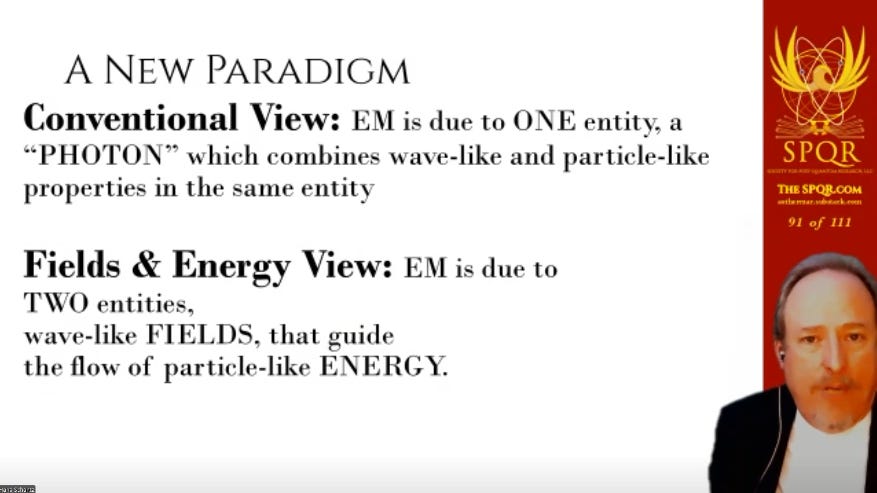
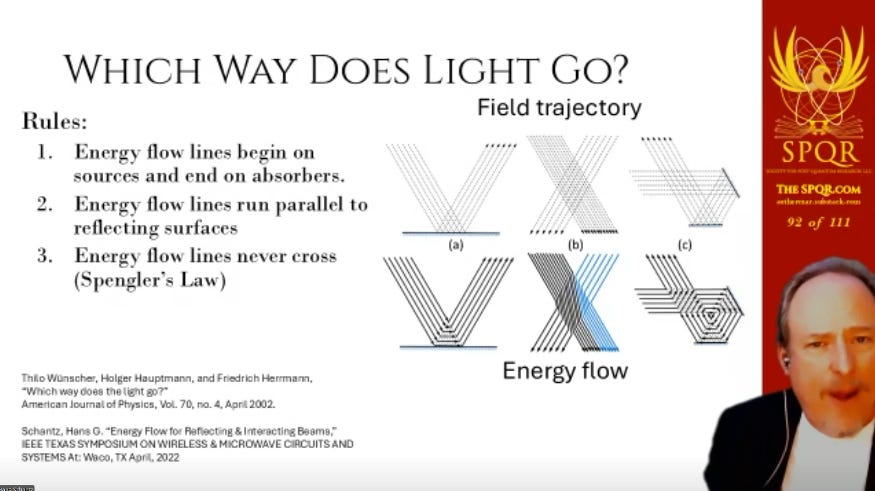
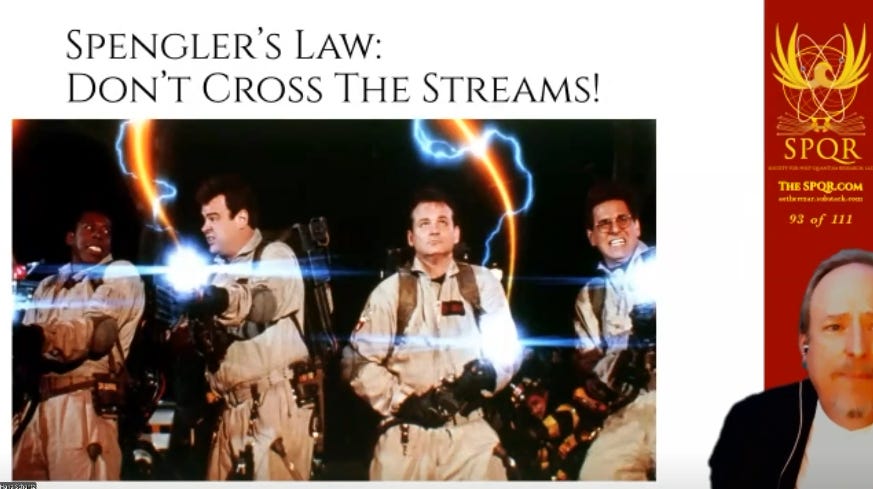
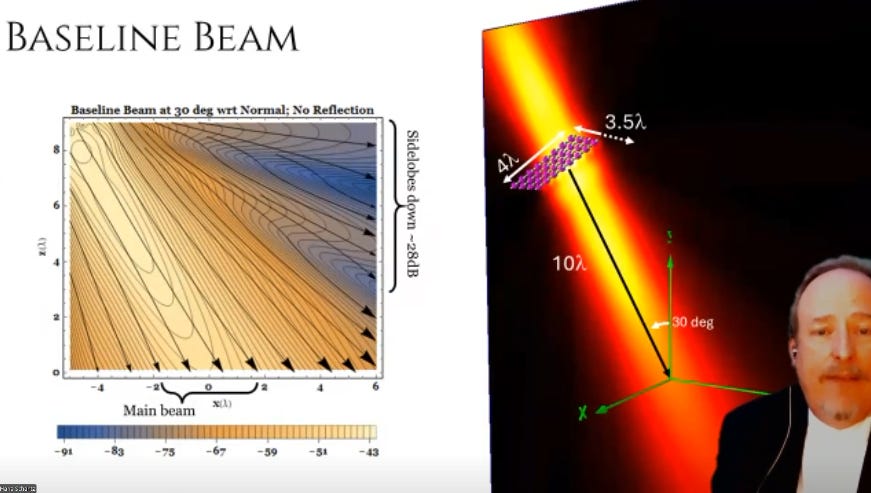
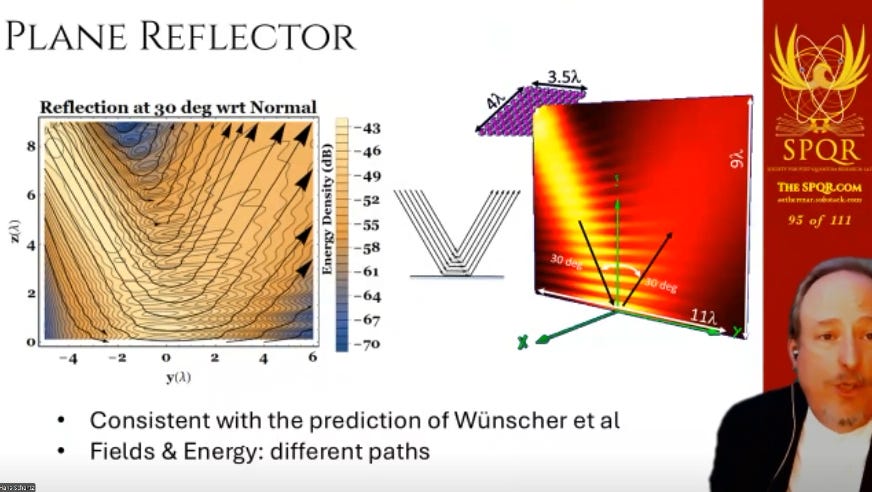
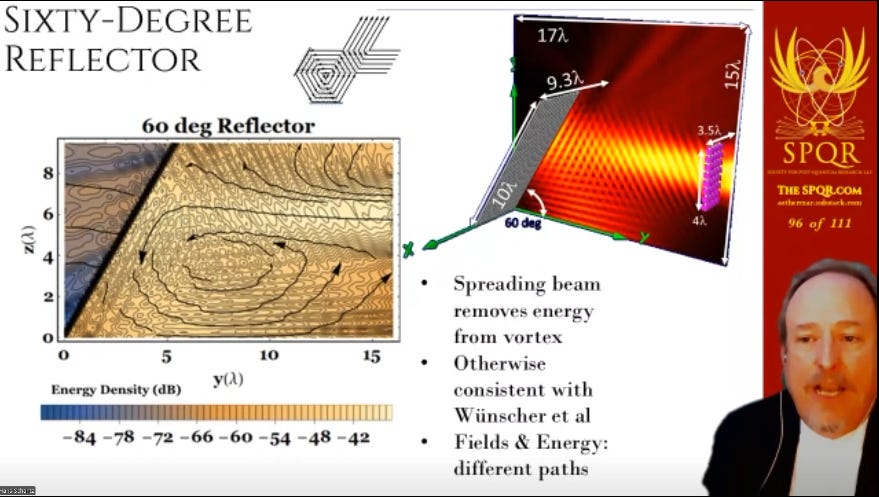
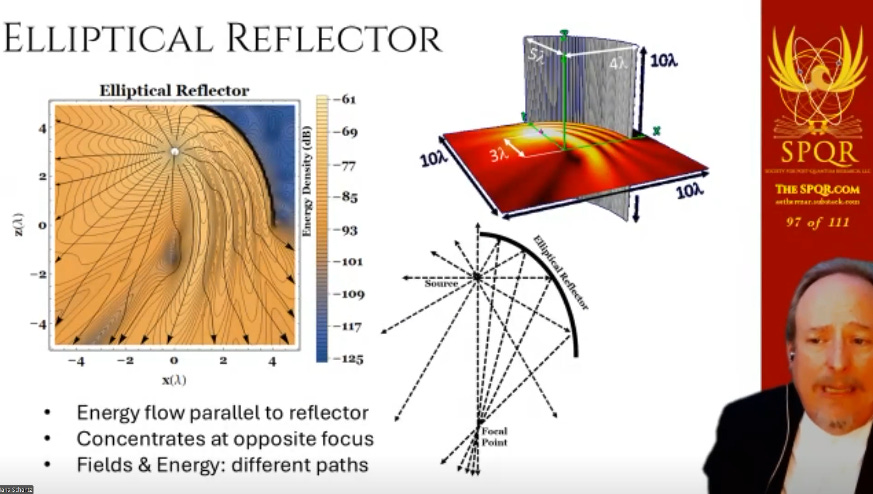
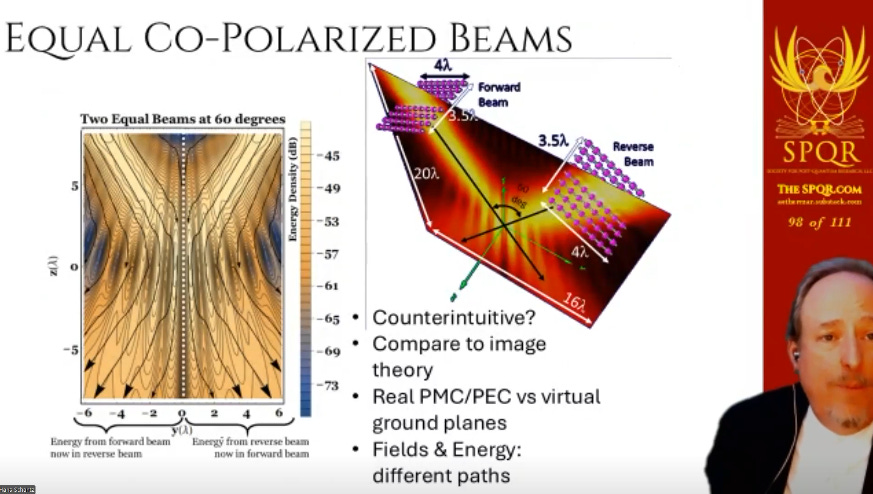
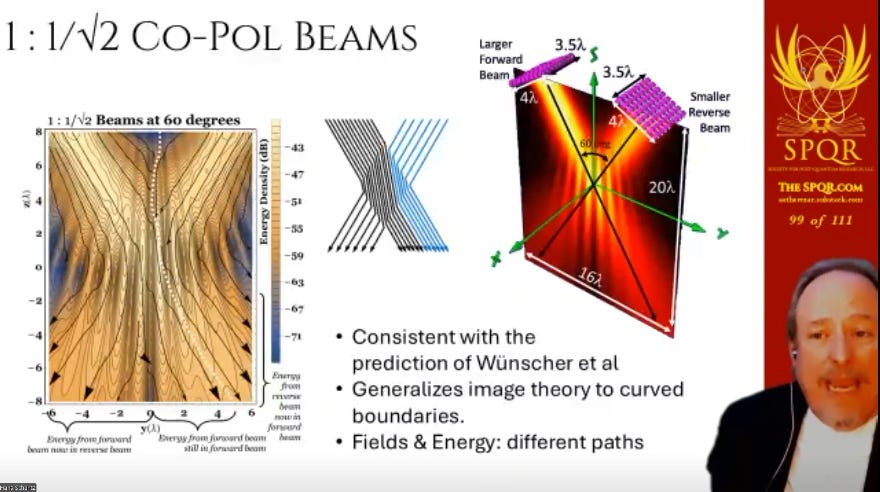
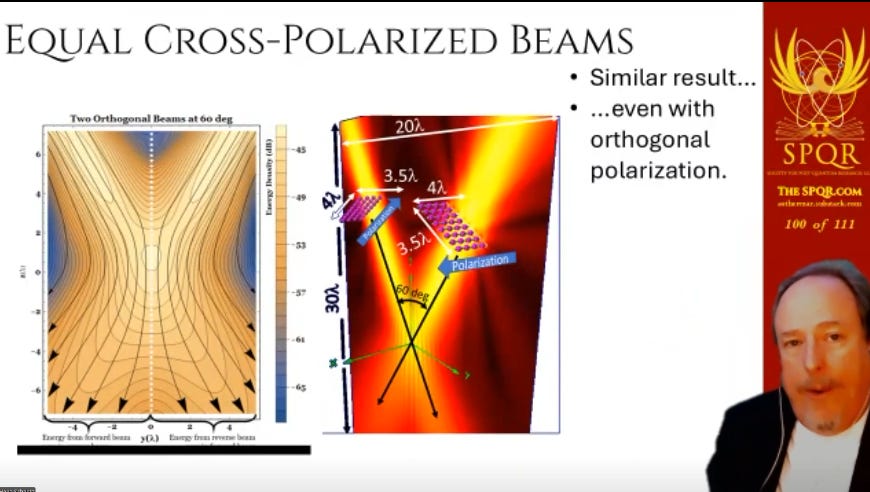

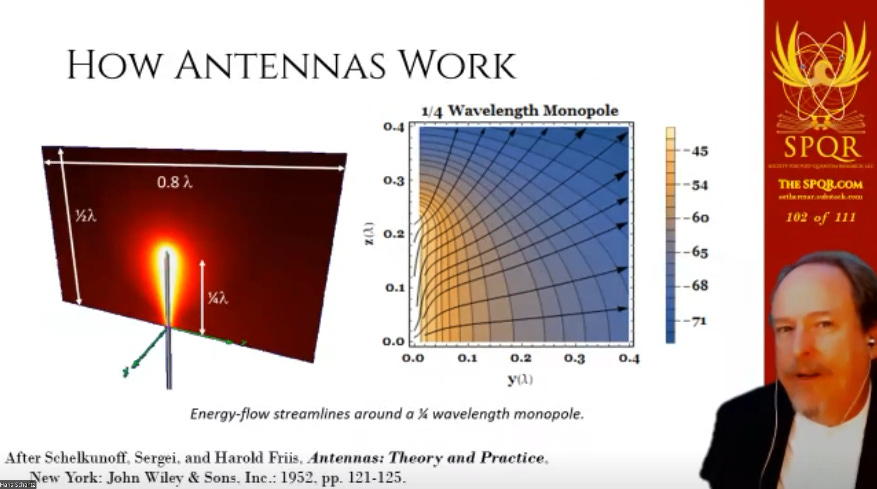
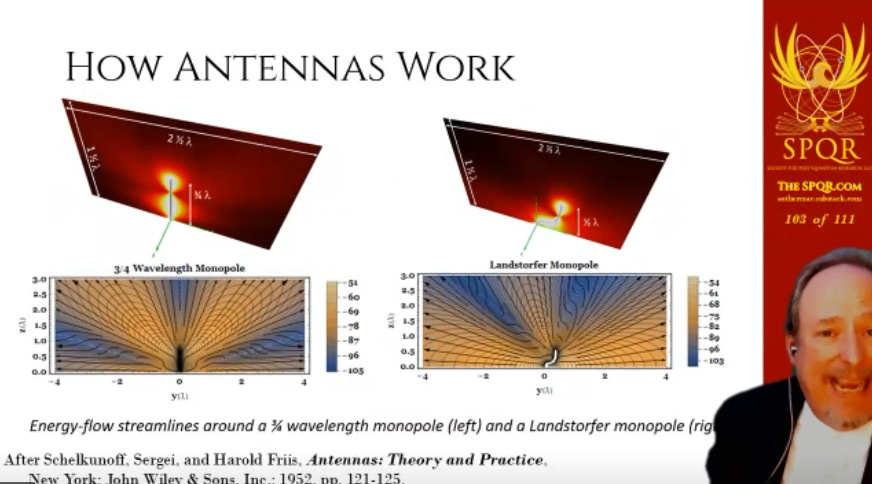
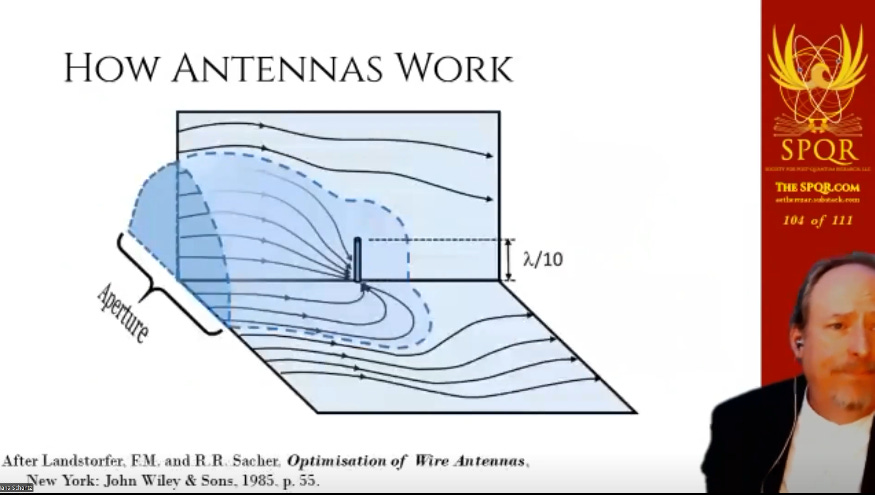
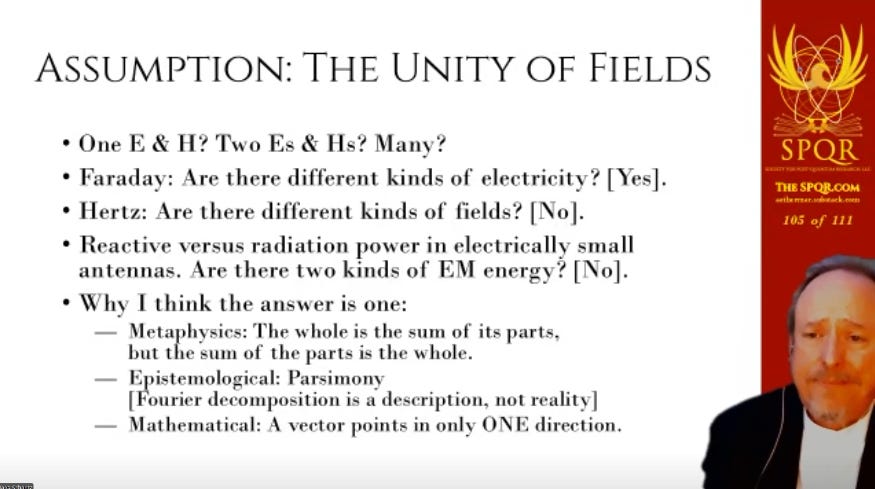
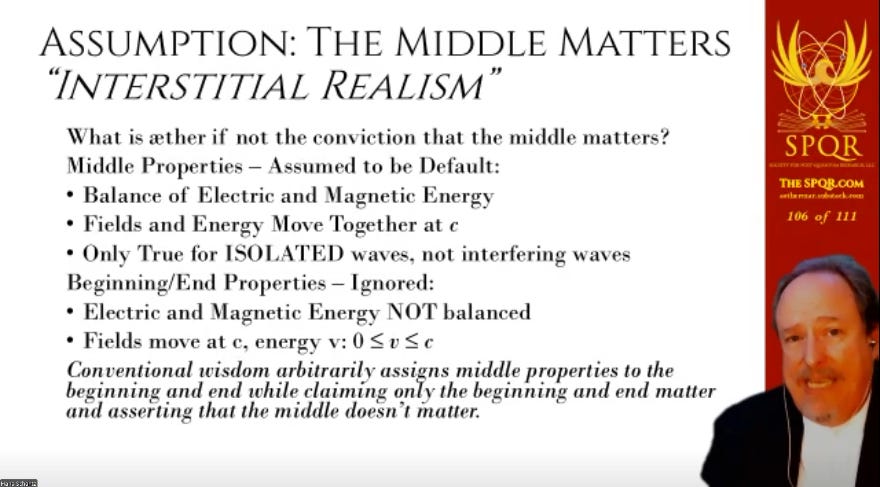
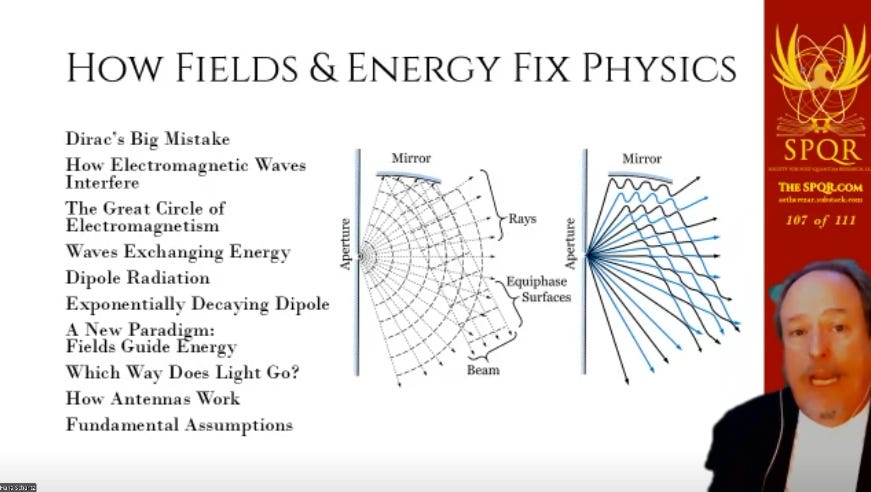
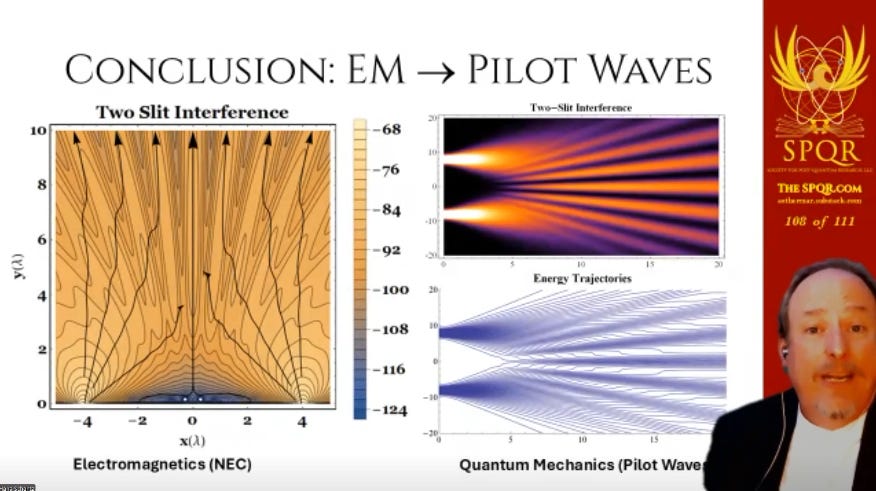
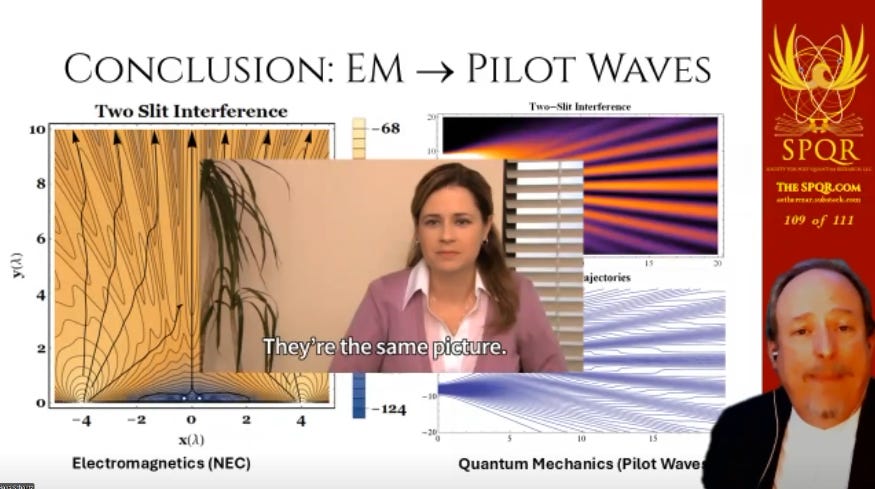
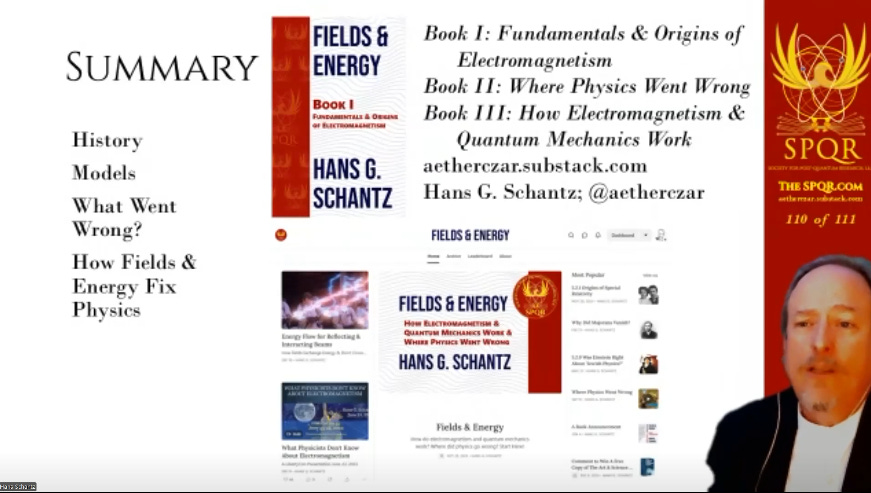

Hi Hans,
Your EM field research seems to support Pilot Wave theory, which seems to suggest that photon particles are guided by EM fields. But the problem is that the Pilot Wave is known to act nonlocally (ie. instantaneously across space). So if the EM fields are the pilot wave, then EM fields must act nonlocally. You don't address this and you need to.
The problem with Pilot Wave theory is that, if the Pilot Wave is something real like a field and it acts nonlocally, then this disproves Relativity, which says nothing propagstes faster than light. This is the reason Einstein did not support Pilot Wave theory, because it requires Relativity to be wrong.
In your research you have experimentally shown that EM fields from an oscillating source have a nonlinear phase vs distance dispersion curve with a clear minima in the nearfield, and becomes approximately linear in the farfield, starting about 1 wavelength from the source. It is well known that a minimum in the curve corresponds to instantaneous speed and only a perfectly linear curve corresponds to constant speed. To clearly see this, well known phase speed and group speed operators inversely proportional to the slope of the curve can be applied to the curve showing that the speed of EM fields for both the phase speed and group speed are not constant, and are dependent on the distance from the source. Also the speeds are instantaneous in the near field and only become approximately speed c in the far field, but never become exactly speed c, ever.
This is predicted exactly by Maxwell's equations when the source terms that come from Gauss's law and Ampere's law are included in the wave equation. This was not done by Maxwell causing him to incorrectly predict that EM feels propagate at constant speed c, which is wrong. And because Einstein also incorrectly assumed Maxwell's solution was correct, and assumed this in his second postulate of relativity, his theory of relativity is also wrong, as well as his theory of general relativity which is based on special relativity. This solution of Maxwell's equations has been independently reproduced by many researchers arriving at exactly the same results. Also other researchers have shown that the phenomena is also predicted by quantum theory.
This analysis supports your premise that pilot wave theory is the correct interpretation of quantum mechanics. This is because only pilot wave theory supports Galilean relativity which is what remains when the second postulate of relativity is proved wrong. This is because only the pilot wave interpretation assumes particles are real and have real trajectories, whereas the other interpretations of quantum mechanics only address the Quantum wave function, treating it as a mathematical entity which can be non-local since it is not real.
In our previous correspondence I showed you our paper just published in the EM Journal IRECAP showing that an EM pulse propagated across 1.5 m of space with no observed propagation delay. This is predicted by EM theory and clearly confirms what I have said is correct.
Regards,
Dr. William Walker
Another well done presentation, sir. I'm glad to see you finding a wider audience.